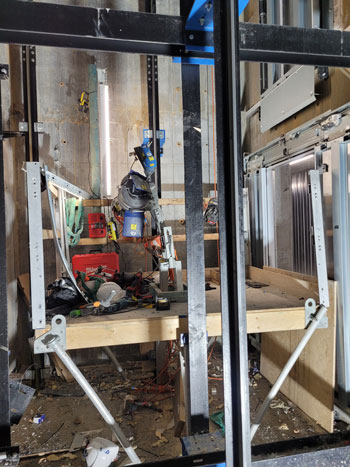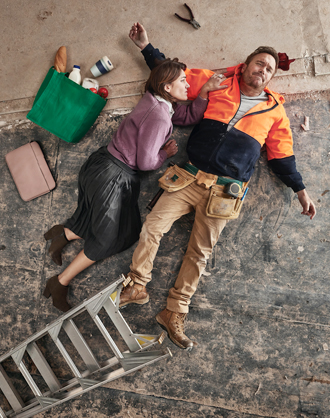Construction
Falls from heights are the leading cause of traumatic injuries and fatalities in the NSW construction industry, closely followed by contact with electricity.
Below you will find information about recent serious incidents and safety information to help protect you and your workplace.
Fatal incident involving large format tiles (7 August 2025)
Two workers were unloading large format tiles from a shipping container on a street near a residential construction site. The vertically stacked tile packages fell onto one of the workers while they were standing inside the container. Each package weighed approximately 52kg, with an estimated 10 packages per stack. The 50-year old-worker was fatally injured.
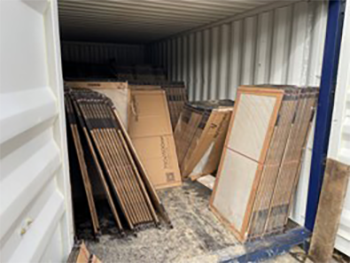
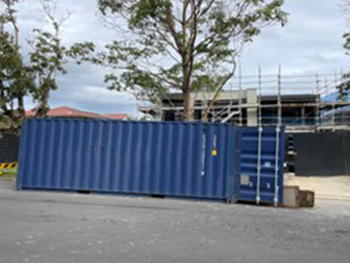
Safety information
Consider ‘reasonably practicable’ control measures to manage the risks associated with manual handling.
Ensure:
- a risk assessment is done before commencing manual handling tasks to identify hazards such as the risk of a crush injury or death from:
- heavy objects collapsing, or
- heavy objects falling in an uncontrolled motion because they are placed vertically and on differing angles
- manual handling is eliminated (where feasible) and replaced with mechanical unloading methods or safer delivery and placement of materials
- suppliers stack heavy materials in a safe configuration – either flat on the ground or vertically leaning in one direction only, with secure tie-downs to prevent movement
- mechanical aids such as forklifts, pallet jacks or vacuum lifters are used to reduce the need for manual handling of heavy packages
- temporary restraints or barriers are installed to prevent stacks from shifting or falling during handling
- workers engaged in manual handling tasks are competent and hold the required construction induction training such as a White Cardsafe
- work procedures are developed and implemented for handling heavy or awkward materials including team lifting protocols and stability checks
- tasks are scheduled to avoid fatigue
- adequate supervision is provided during high-risk activities
- task-specific manual handling training is provided including hazard awareness related to unstable loads and confirmed spaces
- workers understand and follow procedures for safely handling and transporting heavy materials
- training and information is provided in languages that workers from culturally and linguistically diverse (CALD) backgrounds understand.
Related guidance material
- Code of Practice - Hazardous Manual Tasks (PDF, 1499.23 KB)
- Control Measures (PDF, 46.87 KB)
- Hazardous and heavy lifting
- Hazardous Manual Tasks Fact Sheet (PDF, 200.87 KB)
- White cards_ SafeWork NSW
Further information
Workers struck by concrete placing boom during concrete pour (5 August 2025)
A truck-mounted concrete placing boom was placing concrete within a construction site when the supporting surface under one of the extended outriggers failed. This caused a sudden movement of the truck with rapid deflection of the extended delivery boom. Two workers were struck by the boom, resulting in one fatality and significant injuries to the other.
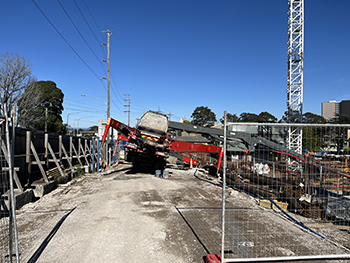
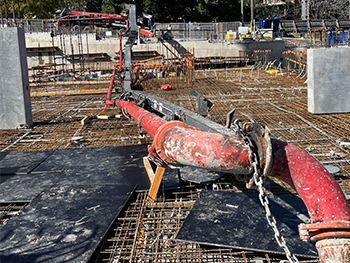
Safety information
Consider ‘reasonably practicable’ control measures to manage the risks associated with the setup, operation and stability of truck mounted concrete placing booms during pouring activities.
Ensure:
- assessment of the set-up location is done by a competent person before work begins. Consider:
- ground condition
- slope of the surface
- proximity to excavations
- underground services, and
- the available area.
- outriggers are deployed in accordance with the manufacturer’s instructions and positioned in accordance with the site assessment
- suitable outrigger support pads of sufficient surface area and construction are applied as determined by the site assessment
- the selected concrete placing equipment is suited to the task and is operated within its design limitations
- the activity is appropriately staffed to enable safe operation of the pump, including monitoring of the outrigger support pads and ground condition
- the operation is stopped and issue rectified if movement of the outrigger support pads or ground subsidence is observed
- exclusion zones are established around concrete pumping operations to prevent unauthorised access
- pre-operational inspections are conducted before each pour
- setup procedures are documented and verified, including sign off by a competent person with reference to approved drawings
- workers are trained in safe setup and operation of the make and model of equipment in use – this includes hazard identification and emergency response
- operators hold an appropriate high risk work licence.
Related guidance material
- Work Health and Safety Act 2011 – NSW Legislation
- Work Health and Safety Regulation 2025 – NSW Legislation
- Managing the risks of plant in the workplace code of practice (PDF, 1987.96 KB)
- AS 2550.15 | CPAA | The Concrete Pumping Association of Australia
- Concrete placing equipment operations: Fact sheet
- Guide to managing risk in construction: Concrete pumping - SafeWork Australia
Further information
Fatal fall through skylight (27 May 2025)
A handyperson was placing a tarp over a skylight on the roof of a building. The skylight broke and the handyperson fell through it, landing approximately 8.5 metres below and suffering fatal injuries.
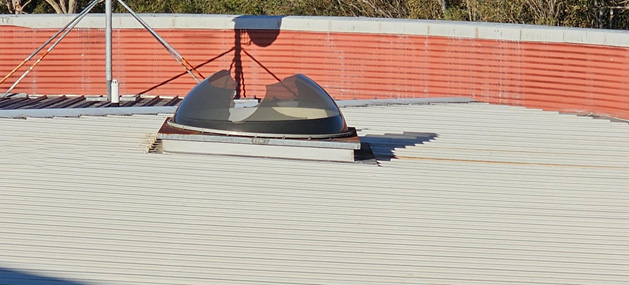
Safety information
Skylights may look solid, but they’re often fragile and can’t support a person’s weight. Always treat skylights and similar roof materials as fall hazards. Never step on or near them unless proper fall protection is in place.
Ensure:
- work is done on the ground or on a solid construction where possible
- an inspection is done to identify the condition of skylights and other fragile roof materials before commencing work
- skylights, fragile roof materials, penetrations and voids are clearly identified, and physical barriers are installed including guard rails and covers
- a site-specific Safe Work Method Statement (SWMS) is developed and implemented for work where a person could fall more than 2 metres
- a fall prevention device such as temporary work platforms, perimeter guardrails, or safety mesh is used
- a work positioning system such as a restraint system or industrial rope access is used
- a fall arrest system such as a harness-based fall-arrest used with lifelines or individual anchors is used if it is not possible to use a fall prevention device or work positioning system
- warning signs are installed around non-trafficable areas and are communicated to all workers
- all workers complete a site induction and have received adequate information, training and instruction
- an emergency plan is developed in consultation with workers and is always followed.
Related guidance material
- Code of Practice: Managing the risk of falls at workplaces (PDF, 2326.56 KB)
- Code of practice - Construction work (PDF, 1014.41 KB)
- The pocket guide to construction safety (PDF, 2263.73 KB)
- Safety Alert - Falls through skylights and plastic roof sheeting
- High risk work licences
- Safety Checklist - Working at Heights in Construction (PDF, 208.69 KB)
Further information
Painter injured after fall in stairwell (5 April 2025)
A painter was spray painting a ceiling from a stairwell under construction. The painter fell through a void between the stairwell and the floor to a level below, sustaining serious injuries. He required surgery as a result.


Safety information
Falls from heights are the number one cause of traumatic and fatal injuries in the NSW building and construction industry. Most falls from height occur because of uncovered voids/penetrations or there was no guardrail in place. Consider ‘reasonably practicable’ control measures to manage the risks associated with falling from heights.
You should ensure:
- adequate edge protection such as guardrails or balustrading is installed before the staircase is opened for access or used for any work activities
- stairways and open voids are protected with edge protection devices such as guardrails or balustrading = fall protection must be installed before accessing the stairs for works activities
- workers are consulted to identify potential hazards that may contribute to slips, trips or falls, and control measures are implemented
- workers are adequately trained and competent in fall prevention and harness- based systems before their use
- a competent person conducts a site inspection before any work begins to assess and identify fall hazards, including penetrations, voids, and other risks. Appropriate controls should be determined based on this assessment
- a site-specific Safe Work Method Statement is developed and implemented for any work where a person could fall more than 2 metres
- emergency plans are prepared, maintained and implemented
Implementation of controls
Identified controls must be implemented to effectively manage fall risks. The selected measures must align with the following hierarchy of control for falls:
Elimination
Work from ground level or solid construction where possible. Tasks should be performed from the ground or from a solid construction whenever feasible.
Fall prevention devices
Use when working from height is unavoidable. Includes:
- temporary work platforms
- temporary edge protection
- scaffolding.
Work positioning systems
Use when fall prevention devices are not practical. Includes:
- restraint systems
- industrial rope access systems.
Fall arrest systems
Use as a last resort when other controls are not feasible. Includes:
- industrial safety nets
- catch platforms
- harness-based fall arrest systems.
Related guidance material
- Code of Practice: Managing the risk of falls at workplaces (PDF, 2326.56 KB)
- Code of Practice: Managing the risk of falls in housing construction (PDF, 2296.79 KB)
- Working safely at heights in construction webinar
- Working at Heights in Construction (PDF, 208.69 KB)
- Guide to preventing slips, trips and falls at work (PDF, 1625.42 KB)
- The pocket guide to construction safety (PDF, 2263.73 KB)
Further information
Plumber falls from roof while cleaning gutters (21 March 2025)
A plumber was standing on a roof and using a blower to clean gutters. He fell approximately 4.4 metres to the ground and sustained serious injuries.

Safety information
The biggest risks for roof work are falling off the edge or through fragile roof materials. Consider ‘reasonably practicable’ control measures to eliminate or manage the risks associated with falls from heights.
Ensure:
- the work is completed from ground level where possible, for example, by using a high reach blower or vacuum system
- a roof inspection is carried out before works begin. This should be done by a competent person who can assess the condition of the roof and identify any areas that should not be accessed due to poor condition, fragile roof materials or other risk factors
- you complete a risk assessment, and consult with workers to determine if the use of a fall prevention system is possible with safe access, such as:
- a secure fence, and
- edge protections, and
- working platforms, and
- covers.
- if it is not reasonably practicable to use a fall prevention device or a work positioning system, use an appropriately set up and connected fall arrest system, such as a harness-based fall-arrest used with lifelines or individual anchors
- all workers are adequately trained and competent in fall prevention and harness-based systems before their use
- if a ladder is used as an access, it must be adequately secured, and three points of contact must always be maintained
- you are aware of the structural adequacy, slope and slippery nature of the surface
- you are aware of weather conditions such as wind and rain
- a site-specific Safework Method Statement (SWMS) is developed and implemented for work where a person could fall more than two metres
- all workers have completed a site induction prior to commencing work
- emergency plans are prepared, maintained and implemented.
Related guidance material
- Code of Practice – Managing the risk of falls in the workplace (PDF, 2326.56 KB)
- AS/NZS 4994.2-2023 Temporary edge protection Part 2 Roof edge protection
- Safety Checklist - Working at heights in construction (PDF, 208.69 KB)
- Fact Sheet - Roof edge protection
- Pocket Guide – Construction Safety (PDF, 2263.73 KB)
Further information
Worker fatally injured adjusting bin tarpaulin cover (20 March 2025)
A skip truck driver was standing at the rear of his vehicle, using a remote control to adjust the position of a bin tarpaulin cover, when he was struck by another vehicle. He sustained fatal injuries.
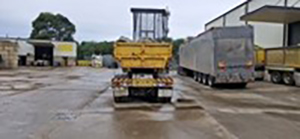
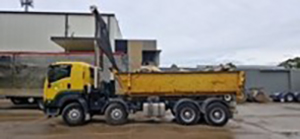
Safety information
Consider ‘reasonably practicable’ control measures to manage the risks associated with moving plant interactions.
Identify hazards
Identify hazards by:
- consulting with workers and mobile plant operators
- identifying where mobile plant may interact with pedestrians or other vehicles
- determining potential locations and circumstances where people, plant and vehicles could collide – for example, when workers are required to alight from their vehicles.
Minimise risk
Eliminate the risk, if possible. If elimination isn’t possible, minimise the risk by:
- Designing the layout of the workplace so
- workers are not required to exit their vehicles
- interaction between pedestrians and mobile plant and other vehicles is minimised
- using physical barriers and/or exclusion zones to separate workers from mobile plant and vehicles
- ensuring there are clear, reliable communication systems in place
- ensuring all workers and other site users are aware of the traffic flow pattern, site rules, control measures and communication systems
- ensuring workers wear high visibility clothing
- ensuring designated driver safe zones and safe work zones are utilised on site to separate workers from mobile plant
- any area where the mobile plant and/or vehicles are required to reverse poses an additional risk and higher levels of controls should be implemented for example: scheduling work so that vehicles and pedestrians are not operating simultaneously in the one area
- developing, implementing and maintaining a traffic management plan
- separating designated areas for pedestrians and vehicles.
Control measures
At most sites, a combination of control measures will be required to effectively manage the risks associated with mobile plant. You should:
- maintain and review control measures. Control measures need to remain effective, particularly if the workplace is changing. Systems should be in place to:
- assess the effectiveness of current control measures
- allow reporting and feedback on the effectiveness of the control measures
- ensure workers are implementing control measures correctly
- identify upcoming changes to the workplace environment (layout, shared services etc) or work procedures (new equipment or processes, worker training etc) before they occur, and assess the potential impact on control measure,
- identify and assess possible alternate control measures (for example. new technology).
- provide supervision and ongoing training.
- regularly observe your workers to check they are following safe work procedures. Conduct informal discussions or toolbox talks with them to talk about specific health and safety issues.
Related guidance material
- Code of Practice - How to manage work health and safety risks (PDF, 556.72 KB)
- Code of Practice - Managing the risks of plant in the workplace (PDF, 1987.96 KB)
- SafeWork NSW - Working with or around mobile plant safety alert
- Safe Work Australia - Workplace traffic management guidance material
Further information
Young electrician seriously injured after fall from roof (14 March 2025)
An electrician was working on the roof of a double-storey house that was undergoing roof renovations. They slipped and fell off the roof, landing on the concrete driveway approximately 6.5 metres below.
As result of the fall, the electrician sustained significant injuries which required multiple surgeries.
Safety information
Falls from heights are the number one cause of traumatic fatalities in the NSW building and construction industry. The biggest risks for roof work are falling off the edge or through fragile roof materials.
In NSW, more than 15,000 young people in NSW are injured in the workplace each year.
Consider ‘reasonably practicable’ control measures to manage the risks associated with falls from heights and working with young workers.
Ensure:
- a comprehensive roof inspection is conducted by a competent person before the start of any work to assess the condition of the roof. This includes identifying areas that should not be accessed due to structural concerns, steep slopes, unsuitable roofing materials, or other potential hazards
- workers are made aware of weather conditions such as wind and rain, which may pose risks such as being blown over the edge or slipping on wet roof surfaces
- a site-specific safe work method statement (SWMS) is developed and implemented for any work where there is a risk of a person falling more than two metres. the document should also outline the hazards, control measures and safe work procedures specific to the site
- you use a fall prevention device such as:
- temporary edge protection system
- scaffold
- void covers if required
- if it is not reasonably practicable to use a fall prevention device, use a work positioning system or fall arrest system, such as:
- harness-based fall restraint system
- industrial safety nets
- catch platforms
- harness-based fall-arrest used with lifelines or individual anchors
- all workers have completed a site induction before starting work
- safe means of access and egress is provided to the work areas and workers are informed accordingly
- young and inexperienced workers receive adequate supervision, with consideration given to their age, experience and competence levels
- warning signs are installed in non-trafficable areas to clearly mark them as restricted. Where possible, physical barriers are also installed to create exclusion zones and prevent unauthorised access
- comprehensive emergency plans are prepared, maintained and implemented to ensure an effective response in the event of an incident.
Related guidance material
- Code of Practice - Managing the Risks of Falls in Housing Construction (PDF, 2296.79 KB)
- AS/NZS 4994.2-2023 Temporary edge protection Part 2 Roof edge protection
- Safety Checklist - Working at heights in construction (PDF, 208.69 KB)
- Fact Sheet - Roof edge protection
- Pocket Guide – Construction Safety (PDF, 2263.73 KB)
- Young workers e-toolkit
Further information
Workers injured in expanding foam fires (12 March 2025)
Two separate incidents occurred at residential construction sites during bath installations. In both incidents, plumbing workers were applying expanding foam under the baths when an ignition source ignited the foam or its fumes, leading to explosions and fires. The workers were seriously injured with burns of varying severity, requiring medical treatment and hospitalisations.
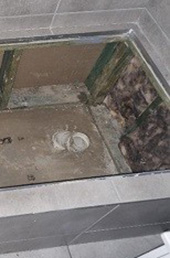
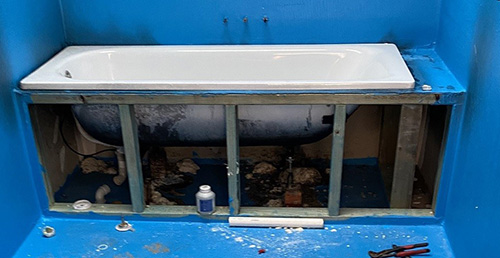
Preserved bathroom sites with visible fire damage.
Safety information
Expanding foam is classified as ‘hazardous’ and is extremely flammable. Even very small quantities of flammable vapours may ignite and cause serious injuries and damage.
If using expanding foam products, identify hazards, assess risks and apply ‘reasonably practicable’ control measures in accordance with the hierarchy of controls to manage the risks associated with using expanding foam products.
You should eliminate the use of expanding foam by:
- ensuring design quality, for example, use freestanding baths with adjustable feet and a pre-fabricated base
- ensuring quality of workmanship
- using quality building products
- using compatible building products
- substituting expanding foam for less hazardous materials such as:
- sand and cement
- timber or plastic shims
- multifoil insulation
- mineral wool insulation
- Room Temperature Vulcanising (RTV) materials like silicone
- plaster based fillers.
You should implement controls if using expanding foams.
Isolation controls
- ensure exclusion zones using temporary barriers for access by trained workers only.
Engineering controls
- use a combination of natural and mechanical ventilation including forced air fans and/or extraction fans
- use ‘intrinsically safe’ equipment (equipment that does not introduce an ignition source).
Administrative controls
You should ensure:
- a current Safety Data Sheet (SDS) is obtained, provided to workers and the measures within the SDS are understood and implemented at the workplace
- an emergency plan is implemented at the workplace, workers have been trained in the plan and the plan has been tested
- suitable firefighting equipment is readily available at the workplace and workers have been trained in its use, noting direct water jets are not recommended for expanding foam fires
- suitable and adequate supervision is provided when workers are using hazardous chemicals
- a site-specific safe work method statement (SWMS) is prepared in consultation with workers, made readily available and understood by workers and supervisors at the workplace
- air monitoring is conducted to ensure Workplace Exposure Limits (WEL) are not exceeded for hazardous chemicals contained in the SDS for the expanding foam in use. Common hazardous chemicals with a WEL contained in expanding foam include:isocyanates, isobutane and dimethyl ether
- ignition sources such as flames, sparks and heat are identified and do not enter the workplace by training workers, providing documented procedures and signage
- health monitoring is provided to workers exposed to expanding foams that contain isocyanates
- ensure ventilation is adequate to avoid the creation of a hazardous atmosphere.
Personal Protective Equipment (PPE)
- provide suitable PPE to workers recommended by the SDS, taking into consideration the level of exposure. For example, gloves, organic vapour respirator, flame resistant overalls and eye protection.
Related guidance material
- Work Health and Safety Regulation 2025
- Code of Practice - Construction work (PDF, 1014.41 KB)
- Code of Practice - Managing risks of hazardous chemicals in the workplace (PDF, 1171.43 KB)
- Building and construction safety information
- Pocket guide to construction safety (PDF, 2263.73 KB)
- Hazardous chemical - general requirements
- Workplace exposure limits for airborne contaminants
- Guide to handling isocyanates
- Isocyanates technical fact sheet
Further information
Worker hit by falling crane boom (10 March 2025)
A 21-year-old dogman was assisting a mobile crane operator in lifting portable buildings from a truck flatbed. The mobile crane overturned and the boom of the crane struck the dogman, causing traumatic injuries to his foot.


Photos of the Franna Crane involved at the incident site.
Safety information
Common risks associated with mobile cranes include:
- crane tip/roll over
- the load or falling objects from the load striking someone
- the crane striking or crushing someone
- the crane coming into contact with objects such as buildings, scaffolds, other plant and overhead powerlines.
Consider ‘reasonably practicable’ control measures to manage the risks associated when working around mobile plant.
Ensure:
- the crane has been maintained according to the manufacturer's guidelines and all inspection logs and maintenance records are up to date and available for review
- you conduct a thorough pre-start inspection of the mobile crane as per the manufacturer’s guidelines including operating and emergency controls, crane structure, tyres, wire ropes and safety features
- the crane is only operated in accordance with the manufacturer's guidelines
- the operator can interpret and apply the crane’s load charts in consideration of the crane configuration, lift task and site constraints
- prior to pick and carry operations, an appropriate assessment of the travel path is undertaken to identify influences on lifting capacity. This includes fore/aft/side slope of the surface, ground condition, rough terrain and required crane articulation angle (where applicable)
- the crane operator holds the appropriate High Risk Work Licence and has received specific training for the mobile crane they are operating
- the crane operator is competent and/or has relevant experience specific to the lift task being performed
- a Safe Work Method Statement is completed before commencing work to identify potential hazards and implement the appropriate control measures, particularly when crane operations are conducted near other workers, with clearly defined exclusion zones and designated spotters as required
- appropriate communication systems are established between the crane operator, dogman and any other workers directly involved in the lift
- if tag lines are being used to guide and control loads, they must be of sufficient length to permit a safe distance from the load and the path of the crane. Caution must apply when using tag lines to control loads consisting of a large mass or large surface area or in windy conditions
- the ground is stable and level, if working on soft or uneven ground additional measures such as mats or plates are used to stabilize the crane
- the position of the crane is in a safe area, avoid positioning the crane near hazards such as overhead powerlines or over underground services
- you check weather forecasts for high winds, poor visibility, lightning and thunderstorms.
Related guidance material
- Code of Practice – Managing the risk of plant in the workplace (PDF, 1987.96 KB)
- Australian Standards AS 2550.5-2002 – Safe use Part 5: Mobile cranes
- Roles & Responsibilities when hiring or using a mobile crane
- Safety Alert – Using mobile cranes in ‘pick and carry’ operations safety alert
- Safety Checklist – Mobile Crane Safety for PCBU’s (PDF, 166.04 KB)
- Guide for Crane Operators (PDF, 1225.66 KB)
Further information
Worker injured after falling through skylight (30 January 2025)
A 29-year-old labourer was undertaking cleaning and general labouring work at a construction site. He fell over 7 metres through a skylight to the ground below, sustaining serious injuries.


Two photos taken from above and below the skylight involved in the incident.
Safety information
Falls from heights remain the leading cause of traumatic fatalities in the NSW building and construction industry. Many of these incidents occur from stepping on an unstable or non-trafficable surface. Consider ‘reasonably practicable’ control measures to manage the risks associated with working at heights.
Ensure:
- work is undertaken on the ground or on a solid construction where possible
- an inspection is carried out to identify the presence and condition of skylights and other fragile roof materials prior to commencing work
- skylights, fragile roof materials, penetrations and voids are clearly identified, and physical barriers are installed including guard rails and covers around non-trafficable areas
- a site-specific Safe Work Method Statement (SWMS) is developed and implemented for work where a person could fall more than 2 metres
- falls are prevented by
- using a fall-prevention device, such as:
- temporary work platforms
- guardrails
- scaffolding.
- using a fall-prevention device, such as:
- the use of a work-positioning system, such as:
- a restraint system
- industrial rope access.
- if it is not possible to use a fall prevention device or a work positioning system, use a fall arrest system, such as:
- industrial safety nets
- catch platforms
- harness-based fall-arrest used with lifelines or individual anchors.
- warning signs are installed around non-trafficable areas and are communicated to all workers
- all workers complete a site induction and have received adequate information, training and instruction
- an emergency plan is developed in consultation with workers and is always followed.
Related guidance material
- Code of practice – Managing the risk of falls at workplaces (PDF, 2326.56 KB)
- Code of practice – Construction work (PDF, 1014.41 KB)
- The pocket guide to construction safety (PDF, 2263.73 KB)
- Safety Alert - Falls through skylights and plastic roof sheeting
- High risk work licences
- Safety Checklist – Working at Heights in Construction (PDF, 208.69 KB)
Further information
Uncontrolled partial collapse of building under demolition (22 January 2025)
During licensed demolition activities, an uncontrolled partial collapse of multiple levels of concrete slabs occurred. This led to the instability of connected scaffold. This posed a significant risk of falling objects within the worksite as well as onto public footpaths, adjacent streets and nearby premises. No injuries were sustained in the incident.

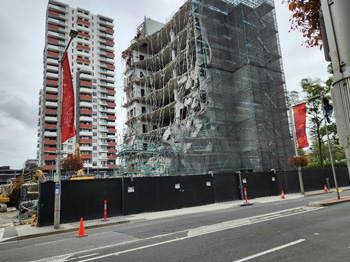
Safety information
Consider ‘reasonably practicable’ control measures to manage the risks associated with an uncontrolled structural collapse and falling objects during demolition works.
You should ensure that:
- demolition works are completed by trained and licensed PCBUs in accordance with WHS legislation
- the licence holder notifies SafeWork NSW at least five calendar days before starting any demolition work
- the licence holder, in consultation with a competent person and all relevant stakeholders, prepares a site-specific demolition control plan before work begins
- the demolition plan includes the sequence of demolition activities and identifies structural components
- workers and plant operators engaged in demolition follow the demolition sequence as detailed in the demolition plan
- fit for purpose plant and structures are selected when planning the demolition work
- the demolition licence holder prepares a site-specific Safe Work Method Statement (SWMS) before starting demolition work
- scaffold is purpose-designed by a suitably competent person (such as a structural engineer) and scaffold is erected, altered and dismantled by workers with the appropriate scaffolding high risk work (HRW) licence
- demolition workers complete their mandatory training by 1 March 2025.
Related guidance material
- Code of Practice - Demolition Work (PDF, 668.8 KB)
- Code of Practice - Construction Work (PDF, 1014.41 KB)
- Code of Practice - Managing the risk of falls at workplaces (PDF, 2326.56 KB)
- AS/NZS 2601: The demolition of structures
- AS/NZS 1576 Part 1: Scaffolding – general requirements
- AS/NZS 4576: Guidelines for scaffolding
- Scaffolding Industry Safety Standard (PDF, 11195.23 KB)
- Falling Objects in Construction Fact Sheet (PDF, 122.91 KB)
- Demolition - SafeWork NSW
Further information
Worker Crushed by Falling Skip Bin Hook (11 December 2024)
A 54-year-old mechanic was in the process of lifting weighing scales to a skip bin loading truck. He was working on the chassis underneath the bin hook attachment which was extended above him by two hydraulic rams. The bin hook attachment weighing approximately 2950kg suddenly collapsed on him causing serious crush injuries.


Photo of truck and bin hook attachment at incident scene.
Safety information
Consider ‘reasonably practicable’ control measures to manage the risks associated with working on mobile plant and moving parts.
Ensure:
- manufacturers recommendations are available, understood and followed prior to any installation or maintenance work commencing
- appropriate controls are applied to support the load (e.g. props are placed in the correct location) prior to the works commencing, as per manufacturer’s recommendation
- you have been provided with information, training and instruction so the work can be carried out safely
- you’re familiar with the components and limitations of the plant being worked on
- where possible, eliminate or minimise the risk by not working directly under hazard areas
- you develop specific safe systems of work for different types of plant
- workers are competent in the task and supervision is available to identify hazards and control the risks associated with uncontrolled movement of plant
- an emergency plan is in place and workers are trained in relation to the emergency procedures.
Related guidance material
- Code of practice – Managing the risks of plant in the workplace (PDF, 1987.96 KB)
- Self-Assessment Checklist – Safety around Moving Plant (PDF, 171.08 KB)
- Safety Alert – Uncontrolled movement of vehicles
- Guide – Inspecting and maintaining plant (PDF, 1309.63 KB)
- Guide – Safety around your vehicle glove box guide
Further information
Apprentice Plumber Struck by excavator bucket (5 September 2024)
A 34-year-old 4th year apprentice plumber was undertaking plumbing drainage work at a construction site when he was struck by an excavator bucket sustaining multiple fractures and serious injuries.


Safety information
Consider ‘reasonably practicable’ control measures to manage the risks associated with working around moving plant.
Ensure:
- traffic hazards are identified:
- consult with workers and mobile plant operators
- determine where mobile plant is in use
- determine potential locations and circumstances where people and plant could collide
- a Safe Work Method Statement (SWMS) is developed and documented in consultation with workers. Make sure all relevant workers understand and implement the SWMS
- an exclusion zone is set up around the plant to keep people safe around moving plant and machinery
- the risk is eliminated, if possible
- the risk is minimised, if elimination isn’t possible:
- use bollards, barriers, safety rails or exclusion zones to separate people from moving plant and vehicles
- effective system of communication between ground workers and operators
- use alarms to warn people of moving plant – eg. reversing alarm, flashing lights
- operator/s of the plant to hold the correct licence or qualification for the specific item of plant being used.
- plan the site’s layout to minimise plant and vehicle hazards
- establish traffic flow patterns, develop right of way procedures, use signs and speed limits
- restrict access
- have mobile phone procedures
- wear high-visibility garments
- workers involved in a task are consulted, properly instructed, and trained on how to carry out the task safely. They must know all relevant health and safety information about the task, including the risks and how to manage them.
Statistics
Safety around moving plant is a SafeWork NSW regulatory priority with a focus on reducing workplace safety incidents related to moving plant, and forms part of the Work Health and Safety Blueprint to 2026.
Moving plant and vehicles such as excavators, forklifts, utes, and trucks create a risk to workers when reversing, loading, and unloading. Incidents such as workers or others being hit by moving plant or vehicles can cause injury and death.
Data from the SafeWork NSW Safety Around Moving Plant Priority Plan shows from 2017-2021, 65% of all injuries which involved machinery and fixed plant resulted in a major workers compensation claim.
In 2022, SafeWork NSW delivered compliance projects including Earthmoving Plant in Construction, Concrete Placing Equipment, and Cranes (mobile and tower) with a specific focus on types of plant. Inspectors continued to see low safety compliance levels with some key areas including plant collisions, workers being hit, and inadequate traffic/vehicle management systems in place, particularly involving excavators, concrete pumps, cranes, and skidsteers.
Ref: Findings Report: Safety around moving plant and vehicles 2023
Related guidance material
- Code of Practice - How to manage work health and safety risks (PDF, 556.72 KB)
- Code of Practice - Managing the risks of plant in the workplace (PDF, 1987.96 KB)
- Code of Practice - Excavation work (PDF, 4128.95 KB)
- Code of Practice - Moving plant on construction sites (PDF, 594.88 KB)
- Working with or around mobile plant safety alert – SafeWork NSW
- Workplace traffic management guidance material
- Findings report: Earthmoving Plant in Construction 2022-2023
- Earthmoving plant in construction safety checklist (PDF, 669.46 KB)
Further information
Supervision of young workers (26 June 2024)
A 16-year-old worker was undertaking labouring work on the first floor of a construction site when he fell approximately 3.3 metres through a penetration sustaining serious injuries.
Safety information
Consider ‘reasonably practicable’ control measures to manage the risks associated when working with young workers, working near open penetrations, and working at heights.
Ensure:
- adequate supervision of young and inexperienced workers is provided having regard of their age, experience, and competence
- penetrations and voids are covered with fit-for-purpose covers that are:
- designed to withstand the load of workers and materials
- securely fixed in position, and
- clearly identified so they are not mistaken for construction material
- all workers receive adequate information, training, and instruction
- all workers complete a site induction
- emergency plans are prepared, maintained and implemented
- suitable communication systems are in place
- guard rails are installed if penetrations or voids are large or are needed for temporary access
- a site-specific SafeWork Method Statement (SWMS) is developed and implemented where the risk of falls is two metres or more.
Statistics
In NSW, there are more than half a million young people (aged 25 and under) in the workforce. More than 15,000 young people in NSW are injured at work each year, making up 14% of all workplace injuries in NSW.
By investing time and resources in young workers from their first day on the job, they are more likely to remain healthy and safe throughout their working life. This contributes to a happier and more efficient work environment.
The Young Workers e-Toolkit provides a range of resources developed to support young worker’s safety. This includes information tailored for young workers, employers, parents, and guardians as well as educators.
Related guidance material
- Code of Practice - Managing the risk of falls at workplaces (PDF, 2326.56 KB)
- Code of Practice - Construction work (PDF, 1014.41 KB)
- Young workers Toolkit
- Guide for labour hire workers, apprentices and trainees (PDF, 2988 KB)
- Checklist for training young workers (PDF, 1191.25 KB)
- Falls through voids - safety information
- Pocket guide to construction safety (PDF, 2263.73 KB)
- Working at heights information
Further information
Worker seriously injured in fall on construction site (6 June 2024)
A 31-year-old formwork worker was seriously injured on a construction site when he fell approximately 3 metres whilst descending a ladder into a jumpform cell.


Safety information
Falls from heights are the leading cause of traumatic fatalities in the NSW building and construction industry. There has been a recent trend in falls from heights involving formwork activities on construction sites. The risks are foreseeable, and these incidents are entirely preventable.
Assess and eliminate or minimise risks
Ensure:
- the formwork plan is readily available on site before commencing work and is approved by a competent person such as a structural engineer
- formwork is only installed, altered and dismantled by a qualified and competent person
- exclusion zones are implemented when formwork is being installed, altered or dismantled
- a ‘formwork only’ exclusion zone is maintained behind the leading edge to separate formworkers and other workers, clearly marked by signs and a barrier
- formwork components are only used in accordance with the original manufacturer’s specifications
- formwork is installed on a solid and stable foundation
- safeguards such as hand rails, edge protection and perimeter safety screens are installed
- the formwork is regularly inspected by a competent person and any defects identified are immediately reported and rectified
Provide safe access and egress
Ensure:
- adequate access and egress between formwork levels is provided
- ladders should only be used as a means of access and egress after safer means (such as scaffolding stair towers) have been considered and found to be not reasonably practicable in the circumstances
- where ladders are used for access and egress, you should ensure so far as reasonably practicable t hat:
- there is a firm, stable work platform, free from obstructions, to step onto from the ladder
- the ladder is securely fixed in place at both the top and bottom, at a ratio of 4:1
- the ladder extends at least 1 metre above the stepping-off point on the working platform
- fall protection is provided at the stepping-off point.
- no materials should be carried by hand when using a ladder for access and egress.
- ladders should be regularly inspected by a competent person and removed from service if any defects or faults are identified
Implement and follow safe systems of working
Ensure:
- voids and penetrations in the formwork are adequately identified and protected
- adequate sole boards and base plates are installed beneath props and frames, where appropriate
- adequate catch decks, false decks and temporary working platforms are installed between formwork levels
- where required, fall prevention devices and work positioning systems such as harnesses are provided and used by all workers
- the work zone for ‘other workers’ is only used once the working deck has been deemed as complete by a competent person
- there is adequate lighting for safe access and work activities
- a site-specific Safe Work Method Statement (SWMS) is developed and implemented
- all workers receive adequate information, training and instruction
- all workers complete a site induction
- all workers wear adequate personal protection equipment (PPE)
- an emergency plan is developed in consultation with workers and followed.
Related guidance material
- Managing risks of falls at workplaces – Code of Practice (PDF, 2326.56 KB)
- Formwork - Code of Practice (PDF, 1390.17 KB)
- Formwork safety in construction - checklist (PDF, 171 KB)
- Pocket guide to construction safety (PDF, 2263.73 KB)
- Working safely at heights in construction
- Falls though voids - safety information
- Working at heights in construction safety checklist (PDF, 208.69 KB)
- High risk work licences ()
Further information
Young worker falls 9.5 metres through void (1 May 2024)
A 17-year-old formwork worker was seriously injured when he fell backwards approximately 9.5 metres through a void between scaffolding and a building under construction.
Safety information
Consider ‘reasonably practicable’ control measures to manage the risks associated with falls from heights and young workers.
Young workers may be at higher risk of injury or illness at work and need additional support to stay healthy and safe.
Ensure:
- scaffolding is only erected, altered and dismantled by a qualified and licenced person, with an appropriate scaffolding high risk work (HRW) licence. They must provide a scaffold handover certificate
- scaffolding is designed, installed and maintained in line with Australian Standards
- the gap between the scaffolding and the working face is not greater than 225mm
- scaffolding is constructed on solid foundations or foundations certified by a competent person such as structural engineer and the bearing capacity of the foundation is provided by geotechnical engineer
- all scaffolding edges are protected by guard rails , midrails, toeboards, infill or other physical means to prevent workers falling
- scaffolding is adequately tied to the supporting structure
- all scaffolding planks are securely installed
- a qualified person inspects the scaffolding at least every 30 days and tagged with the inspection date
- workers visually inspect the scaffolding daily before use and any defects or issues are immediately reported for rectification before using the scaffolding
- workers do not climb on top of rails or outside of the scaffolding structure
- penetrations and voids are considered during planning and design stages and suitable controls are installed before the penetration or v oid is formed
- penetrations and voids are securely covered with fit-for-purpose covers that are designed to withstand the load of workers and materials, are fixed in position, and clearly identified so they are not mistaken for construction material
- guard rails are installed if penetrations or voids are large or are needed for temporary access
- there is safe access and egress from all work areas and the work site, including in between levels of the scaffolding deck levels
- high risk workers hold a valid licence for the type of work to be undertaken. For example, a basic, intermediate or advanced level of scaffolding licence
- a site-specific Safe Work Method Statement (SWMS) is developed and implemented where the risk of falls is two metres or more
- young or inexperienced workers are adequately supervised
- all workers receive adequate information, training and instruction
- all workers complete a site induction.
Related guidance material
- Managing risks of falls at workplaces – Code of Practice (PDF, 2326.56 KB)
- Managing the risks of falls in housing construction - Code of Practice PDF, 2296.79 KB
- Construction Work – Code of Practice (PDF, 1014.41 KB)
- AS 4576:2020 Guidelines for scaffolding
- AS 1576 series, Scaffolding
- Scaffolding Industry Safety Standard (PDF, 11195.23 KB)
- Young workers eToolkit
- Checklist for training young workers (PDF, 1191.25 KB)
- Guide for labour hire workers, apprentices and trainees (PDF, 2988 KB)
- Pocket guide to construction safety (PDF, 2263.73 KB)
- Working safely at heights in construction
- Falls though voids - safety information
- Working at heights in construction safety checklist (PDF, 208.69 KB)
- Erecting, altering and dismantling scaffolding - Part 1: Prefabricated steel modular scaffolding
- Dogging, rigging and scaffolding licences
- Scaffold Inspection Checklist (PDF, 392.98 KB)
- Scaffold and Scaffolding work general guide
- Guide for scaffold inspection and maintenance
- Using Scaffolds Toolbox Talk
- SafeWork SafetyCast
Further information
Working near overhead electrical service lines (5 February 2024)
A 68-year-old worker was painting the façade of four adjoining buildings when they fell approximately 6-8 metres to the ground below sustaining fatal injuries. A ladder was used to reach the awning from the ground and a second ladder was used on top of the awning. The worker was standing on the ladder on top of the awning on the 1st floor when it appears they have made contact with an overhead electrical service line directly above the ladder.


Safety information
Consider ‘reasonably practicable’ control measures to manage the risks associated with working near overhead powerlines.
Ensure you:
- you eliminate the risk by arranging for the electricity supply authority to isolate the electricity supply for the duration of the work
- you clearly identify the height and voltage of high and low voltage power lines, including overhead service lines to buildings
- you relocate work away from overhead service lines wherever possible
- you only perform work near low voltage overhead services lines in accordance with approach distances as listed within the “Code of Practice: Work near overhead power lines” (for example, 0.5m when using handheld tools)
- you minimise the risk by substituting and/or using engineering controls (such as using an insulated fibreglass extension handle on a paint roller)
Related guidance material
- Code of Practice – Work near overhead power lines (PDF, 3569.89 KB)
- Handling conductive material near overhead powerlines
- Work near overhead power lines: the basics
- Incident information release – Overhead powerline contact fatality
- Incident information release – Contact with overhead powerlines
- Safety alert – Mobile plant operating near overhead power lines
- Hazards A-Z – Power lines
Further information
Worker seriously injured on owner-builder worksite (29 February 2024)
A 34-year-old worker was seriously injured when he slipped and fell approximately 3.4 metres from the roof of a shed he was engaged to construct. A second worker sustained minor injuries when he attempted to grab onto the worker as he slid down the roof. The two injured workers and a third worker had been engaged to complete the construction works by an owner-builder.


Safety information
People who believe they have the skill or capacity to build their own house or supervise the construction work may do so under an owner-builder permit. Owner-builders must apply for a permit and complete a training course. This allows them to supervise or do building work worth more than $10,000 on a single dwelling-house, dual occupancy, or secondary dwelling.
As an owner-builder, you have the same responsibilities for the building work as a licensed builder. Under the Work Health and Safety Act 2011, owner-builders have the same duty as a Person Conducting a Business or Undertaking (PCBU) to ensure the health and safety of any workers they engage.
Consider ‘reasonably practicable’ control measures to manage the risks associated with undertaking works as an owner-builder.
Ensure you:
- you complete a recognised owner-builder training course
- you and any workers engaged on your site hold a general construction induction (white card) qualification
- you hold a valid owner-builder permit before undertaking or supervising any owner-builder work
- you comply with all requirements of the permit
- you only undertake or supervise work that is covered by the permit
- any workers and subcontractors who attend your site complete a site induction
- you develop a safe system of work for all work tasks and workers are trained in them
- pre-start safety briefing meetings are held with workers prior to the commencement of work
- Safe Work Method Statements (SWMS) are developed and followed for high-risk construction work
- the risk of falls is eliminated. If it is not reasonably practicable to do so, then you must implement controls such as scaffold or temporary roof guard rails to manage the risk
- workers engaged for any works hold the relevant licence or qualification required prior to commencing work
- where necessary hold the relevant high risk work licence for structural steel erection, which includes dogging and basic rigging.
Related guidance material
- Work Health and Safety Act 2011 (NSW)
- Code of Practice: Construction Work (PDF, 1014.41 KB)
- Code of Practice: Managing the risks of falls at workplaces (PDF, 2326.56 KB)
- Code of Practice: How to manage work health and safety risks (PDF, 556.72 KB)
- Working as an owner-builder – Fair Trading NSW
- Owner-builder permits – Fair Trading NSW
- Building and construction
- Incident animation – Owner builder – fall through void
- High risk work licences
- Roof Edge Protection Factsheet
Further information
4.1 metre fall through shed roof under construction (22 September 2023)
A 26-year-old worker was constructing a shed on a rural property when they fell approximately 4.1 metres through the roof purlins, landing on the ground below. The worker sustained serious injuries from the fall.

Safety information
Falls from heights are the leading cause of traumatic fatalities in the NSW building and construction industry. Businesses who put workers lives at risk from a fall can receive on-the-spot fines of up to $3,600 or be prosecuted.
Consider ‘reasonably practicable’ control measures to manage the risks associated with working at heights.
Ensure you:
- follow structural engineering, manufacturer and supplier information when constructing a shed
- plan the work – consider the risks and suitable controls
- develop a Safe Work Method Statement (SWMS) and implement the documented the controls to be used
- install roof safety mesh to the entire roof and in accordance with AS/NZS 4389 utilising suitable access methods, for example an elevated work platform (EWP) or scaffold
- install roof edge protection
- install safe access/egress to the roof area
- hold a valid General Construction Induction Card (White Card)
- hold valid licences for the type of work to be undertaken, for example a dogging and basic rigging licence.
Related guidance material
- Safe Work on Roofs - Commercial and Industrial Buildings (PDF, 493.51 KB)
- Prepare a safe work method statement
- Temporary edge protection (roof rails) factsheet (PDF, 2885.66 KB)
- Working at heights
- Work safely at heights in construction
- Working at heights – Safety Checklist (PDF, 208.69 KB)
- Code of Practice: Managing the risk of falls at workplaces (PDF, 2326.56 KB)
- Pocket guide to construction safety (PDF, 2263.73 KB)
- High risk work licences
Further information
Fall from ladder (31 August 2023)
A 38-year-old male was straddling an A-frame ladder at the height of approximately 3.5 metres to install a roller door on a shed. Whilst loosening the tension a wrench spun out of control and struck him on the left cheek. The man, who was working alone, fell from the ladder and landed on concrete below, sustaining serious injuries.
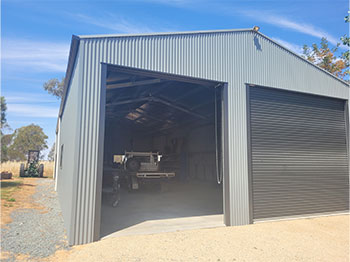
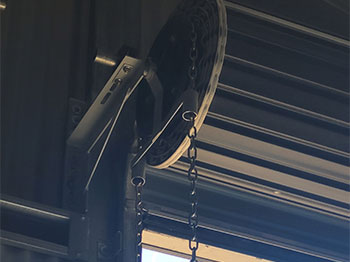
Photographs of the shed and roller door at the incident site, taken when the work was complete.
Safety information
Workers are most at risk of falling from an A-frame style ladder if they are standing on the top 2 steps (e.g. straddling) and/or overreaching.
Consider ‘reasonably practicable’ control measures to manage the risks associated with using A-frame ladders.
Ensure:
- ladders are used for simple access jobs, or for a short duration
- you choose the right tool for the job. Your decision to use a specific ladder should not be based solely on the availability of a particular ladder at a workplace. You may be able to buy or hire purpose built equipment that would provide a safer means of access (such as mobile scaffold, elevated work platform or platform ladder)
- you only use A-Frame ladders locked in the fully open position
- the ladder is in good condition and industrial rated (120kg)
- the ladder is set up on a flat, stable surface
- the ladder is high enough, to prevent overreaching
- you maintain three points of contact when climbing or descending the ladder. This means two hands and one foot, or two feet and one hand. Also use your waist to balance against the ladder
- other trained workers are utilised with the task, if available.
Statistics
Each year there are dozens of serious incidents where workers have fallen from ladders. Most of these incidents involve a ladder being used incorrectly or inappropriately.
Related guidance material
- Hazards A-Z Ladders
- Pocket guide to ladder safety (PDF, 1104.94 KB)
- Poster: Work safely at any height (PDF, 1927.38 KB)
- Toolbox talk: Using ladders in construction
- Code of Practice: Managing the risk of falls at workplaces (PDF, 2326.56 KB)
Further information
Worker crushed by loads when operating a pallet jack on a slope (13 September 2023)
A 49-year-old man was seriously injured while moving a loaded pallet down a concrete ramp with another worker. The man was using a manual pallet jack to move a pallet of 48 bags of rapid screed grout, each weighing 20kg and with a total weight of approximately 960kg. The pallet jack and load rolled away from the workers, causing one of the men to be crushed between the uncontrolled loaded pallet and another pallet of goods.
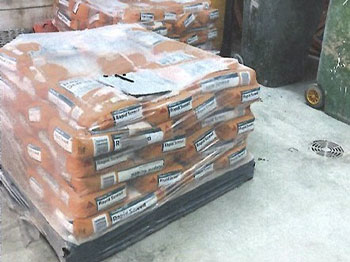
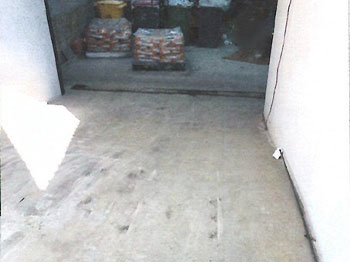
Safety information
Each year people suffer serious and fatal injuries in NSW due to incidents involving the uncontrolled movement (roll away) of mobile plant.
While the use of a pallet jack may be simple, the operation of a manual pallet jack is a hazardous manual task as high forces are often required to move or stop the load. If operating on inclined floors the forces required to maintain control of the load and to ensure it can be safely brought to a stop are greater.
Consider ‘reasonably practicable’ control measures to manage the risks associated with moving loads on slopes using manually operated mobile plant including pallet jacks, to reduce the risk of workers and others being struck or crushed by loads.
Ensure:
- you refer to the manufacturer’s information to ensure the pallet jack is safely operated and to assist in implementing suitable controls when used on unlevel floors such as:
- the maximum allowable slope
- the correct direction of travel
- safe operator position/location (including other workers that may be assisting)
- how to stop the pallet jack in an emergency (for example lowering the forks so that the pallet contacts the ground).
- workers are provided with information, training and supervision for the tasks they undertake
- the correct plant is available for use, taking the task, risk assessments and site conditions into consideration
- the use of electric powered pallet jacks, or manual powered pallet jacks fitted with brakes, if operating on uneven surfaces is a regular practice
- all plant used is fit for purpose and serviced as per the manufacturer's specifications.
Related guidance material
- Choosing and using trolleys – WorkSafe Vic
- Working with or around mobile plant
- Code of Practice: Managing the risks of plant in the workplace (PDF, 1987.96 KB)
- Hazardous manual tasks (PDF, 1499.23 KB)
- Workplace traffic management – Safe Work Australia
- AFITA-011 – Using hand pallet trucks on an incline – Australian Forklift & Industrial Truck Association
Further information
Articulated crane rollover (31 October 2023)
A 25 tonne articulated crane was in the process of moving a metal casing for a pier. The operator has traversed across a slight slope when the load shifted. The crane rolled on to its side and the hook block struck a 49-year-old worker resulting in serious injuries.
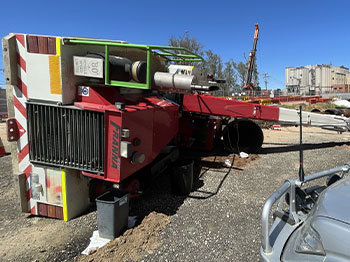
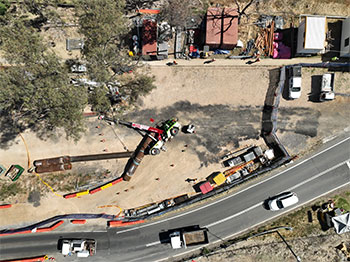
Overturned articulated crane on NSW worksite.
Safety information
Consider ‘reasonably practicable’ control measures to manage the risks associated with operating articulated cranes.
Ensure:
- crane operators hold an applicable HRWL and be experienced in the operation of the crane being used
- the correct crane is being used for the job
- the crane being operated is in good working order, regularly maintained with current registration
- there are safe systems of work in place for set-up, placement and crane operations
- adequate exclusion zones are in place
- the route of travel has been reviewed for the ability to operate the crane safely including enough clearance, appropriate ground conditions, right load and clear lifting path
- you configure crane to mobile load, stowing outriggers and positioning boom to manufacturers recommendations
- you maintain minimum speed ensuring load is up hill when ascending or descending.
Statistics
Since June 2023, there have been four articulated crane rollovers on worksites within New South Wales. On each occasion the loads were being walked across sloping ground surfaces and the crane has travelled out of radius.
Related guidance material
- Guide for crane operators
- Plant, machinery and equipment
- Roles and responsibilities when hiring or using a mobile crane
- Safety Checklist - Mobile crane safety for PCBUs (PDF, 166.04 KB)
- High risk work crane classes licence requirements
- Using mobile cranes in ‘pick and carry’ operations – safety alert
- Guide to mobile cranes– Safe Work Australia
Further information
Fall through roof fatality (7 November 2023)
This section references the Work Health and Safety Regulation 2017, which has since been remade as the Work Health and Safety Regulation 2025. Any references to clauses of the 2017 Regulation should now be read as references to the corresponding sections in the 2025 Regulation where applicable.
A worker fell approximately 5.1 metres to the ground through fibreglass roofing at a manufacturing warehouse, sustaining fatal head injuries. The Person Conducting a Business or Undertaking (PCBU) was conducting maintenance work at the premises.
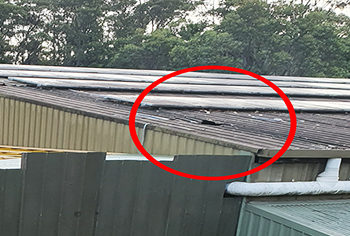
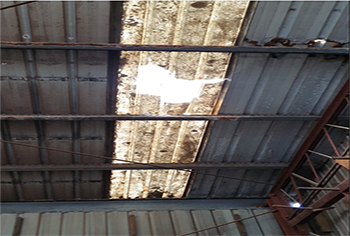
Views from outside and inside the warehouse
Safety information
Falls from heights may occur in any workplace and they continue to be a major cause of fatalities and serious injuries at workplaces across NSW.
Consider ‘reasonably practicable’ control measures to manage the risks associated with working at heights, ensuring adequate fall protection.
Businesses are reminded of their duty to identify hazards and manage risks to health and safety in accordance with the provisions of the Work Health and Safety Act 2011 and Work Health and Safety Regulation 2017.
Ensure:
When considering ‘reasonably practicable’ control measures to manage the risk of falls, before starting work on an existing roof, carry out an inspection (from below) to determine:
- the presence and condition of non-trafficable sheeting and other brittle roof sheeting such as sky lights, plastic roof sheeting or asbestos cement sheeting
- the presence and condition of safety mesh.
When determining whether roof surfaces are safe to walk on, consider the product materials and method of fixing, including any possible deterioration in strength. Note: products may become brittle, and fixings may become less rigid over time.
Implement these control measures to prevent workers from falling through non-trafficable roofs and apply these measures consistently, reviewing as work progresses:
- Plan the work to avoid accessing unsafe or non-trafficable areas.
- Work from an elevated work platform or boom lift to avoid standing on the roof itself.
- Install temporary work platforms (e.g. crawling boards) and roof ladders as appropriate.
- Install barriers (e.g. guard rails or covers) that are secured and labelled with warning signs.
- Install safety mesh when installing the roof sheeting.
- Install and ensure the use of a fall restraint / arrest system (harness system) which has adequately installed anchorage points, adjusting the length to limit slack as the worker moves, along with training and instruction in the use.
Statistics
Falls from heights are the number one cause of traumatic fatalities in the NSW building and construction industry. The biggest risks for roof work are falling off the edge or through fragile roof materials.
Related guidance material
- Managing the risk of falls at workplaces – Code of Practice
- Pocket guide to construction safety
- Temporary Edge Protection (roof rails) factsheet
- Working at heights
- Work safely at heights in construction
- Working at heights – Safety Checklist
Further information
Descent of false car in lift well causes serious injuries to workers (27 October 2023)
Two workers were working from a false car platform to install lift rails in a lift well. While descending the false car fell approximately 15-20m into the crash protection deck below. One worker sustained serious spinal injuries and the other worker suffered head lacerations and bruising.
Safety information
A false car is a temporary work platform used during the installation of a lift to provide a working area designed to prevent workers from falling. Consider ‘reasonably practicable’ control measures to manage the risks associated with the operation of false car platforms in lift shafts.
Ensure:
- a SafeWork Method Statement (SWMS) specific to the high-risk construction works is completed prior to any works commencing and revised prior to any changes to the false car assembly
- an emergency response plan (ERP) applicable to the work is developed and implemented
- installations are completed by competent persons holding the relevant high risk work licences (HRWL) if the activity involves high risk work
- protective decking is provided above each working area
- robust lift well enclosures are securely fixed to control the risk of falls into the lift well, prevent materials falling into the lift well and to prevent unauthorised access at all access locations
- lighting for the lift installation and provision of power is provided for safe access, safe working condition and safe egress
- all persons working on a lift or related equipment within a well or carrying out risk assessments, should possess demonstratable competence in basic lift safety and procedures.
- all false car components are fitted in accordance with the manufacturer’s recommendations or the recommendations of a competent person including the wire ropes are the correct length fitted with end loop and clamps, guardrails in place, and emergency stop buttons are in proper working condition
- daily pre-operational checks and maintenance procedures are established, implemented and monitored. Checks include but are not limited to:
- visual inspection of lift well ensuring path is clear of obstructions
- visual inspection of the suspension system for wear, broken strands, corrosion, wire distortion, reduction in diameter and lengthening of the lay
- visual check of the wire rope of the device which operated independent of the hoisting winch and false car safety gear from broken wires, surface wear, corrosion, wire or strand distortion, reduction in diameter and lengthening of lay.
- periodic tests are completed by a competent person as per the manufacturer's instructions or at a maximum of 3 monthly intervals
- written records of all maintenance, inspection and repairs shall be signed by those completing the works and kept on site
- clear communication protocols have been established and tested daily between the operators, personnel involved in the operation and other workers on the site
- ensure the false car has the maximum safe working load limit prominently displayed in kilograms and this will not be exceeded.
Related guidance material
- Managing the risk of falls at workplaces – Code of Practice (PDF, 2326.56 KB)
- Managing the risk of plant in the workplace – Code of Practice (PDF, 1987.96 KB)
- SafeWork NSW’s Code of practice – Construction work (PDF, 1014.41 KB)
- Falling objects
- Falling Objects Factsheet – Safe Work Australia
- Safety Alert: Lift installation – false cars maintenance and inspection - Electrical Tradies Union
- Working at heights
- Plant Design Registration ()
- Managing Electrical Risks in the Workplace – Code of Practice (PDF, 1337.36 KB)
- Electrical work
- AS 4431: 2019 Safe working on new lift installation in new constructions
Further information
Dangerous scaffold incident (5 October 2023)
A section of scaffold for a multi-unit residential project has separated from the building face and come to rest against low voltage distribution powerlines. It appears scaffold ties were removed resulting in serious immediate risk of collapse.
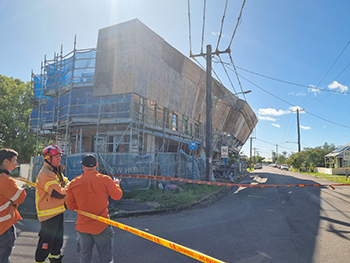
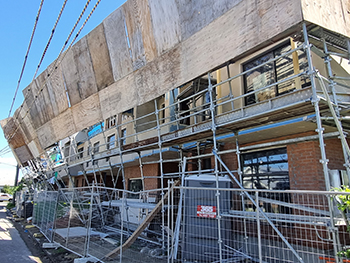
Images of scaffolding on power lines.
Safety information
PCBUs are reminded to consider reasonable and practicable control measures to identify hazards and manage the risk of scaffold collapse:
Ensure:
- the scaffold is adequately tied to its supporting structure, in accordance with instructions from a competent person. Consult with the scaffold designer, manufacturer, supplier, or an engineer, and prevent unauthorised removal or changes by workers on site
- to develop systems of work that allow construction activities such as bricklaying, painting, rendering, glazing, and cladding installation to be completed without unplanned changes to or removal of scaffold ties, e.g., relocate ties so they do not interfere with the work. Examples of systems of work, include and are not limited to:
- providing all workers adequate information, instruction, training and supervision regarding the control measures required to prevent the removal of ties and any other unauthorised alterations that could lead to the collapse of the scaffold
- workers completing a visual check of the scaffold daily before use and reporting any defects or issues for rectification
- regular inspection of scaffold ties to check they are not modified or altered by unauthorised people (e.g., finishing trades who may loosen, relocate or remove ties to gain access to walls and openings)
- all workers completing a site-specific induction and are trained in the appropriate safe work method statement (SWMS)
- to engage a competent person who holds the same or higher class of high-risk work licence appropriate to the class of scaffolding to regularly inspect the scaffold, at least every 30 days, to ensure it has not been modified or altered by unauthorised persons.
- a handover certificate must be provided before first use of the scaffold after scaffolders have completed their scaffolding work i.e. after a new scaffold has been erected, or an existing scaffold has been repaired or altered. Examples of alterations requiring an inspection and new handover certificate include:
- adding/removing additional bays or lifts
- changing ties or tie locations
- changing platforms, hop-ups and decking component locations
- changing edge protection or containment
- partial disassembly or removing components (e.g., create an access opening)
- the competent person when erecting and handing over a scaffold for use on site must consider the following:
- provision and maintenance of sufficient ties of adequate strength for the loads, including wind load
- ensure the scaffold is stable at all times, including during erection, in situ, during and after any alterations, and when dismantling
- ensure altering or partially dismantling the scaffold does not weaken it, e.g., removing returns or adjacent bays may require additional ties or bracing on the remaining scaffold
- scaffolds are not left in a state of weakness when installing or dismantling the scaffolds (e.g., removing returns as they act like ties, or removing ties in preparation for dismantling)
- ensure the scaffold can withstand all anticipated loads, including the weight of workers, all stored material and any loads due to weather such as wind and rain
On-the-spot fines of up to $3,600 apply for altering a scaffold without a licence or failing to protect workers from the risk of falls from heights.
Statistics
After conducting 428 Scaff Safe 2021 project site visits, SafeWork NSW compiled a report highlighting many unsafe practices in scaffolding. Some key findings include:
- Principal Contractors had allowed workers to access incomplete scaffolds at 49% of sites
- 43% of sites had working decks with missing planks, ledgers or hop-ups
- 43% of sites had missing mid rails
- 32% of sites did not have a handover certificate (or written confirmation) by a competent person
- 30% of sites had scaffolds that appeared to have been altered by unlicenced tradies – mostly bricklayers.
Related guidance material
- Construction Site Supervisor Workshop - Young and at risk workers
- Young workers eToolkit
- Checklist for training young workers (PDF, 1191.25 KB)
- Guide for labour hire workers, apprentices and trainees (PDF, 2988 KB)
- Managing the risks of plant in the workplace – Code of Practice (PDF, 1987.96 KB)
- Managing the risk of falls in housing construction – Code of Practice (PDF, 2296.79 KB)
- Working at heights in construction
- Roof edge protection fact sheet (PDF, 2885.66 KB)
- Incident Information – How to prevent falls on a construction site using void covers
Further information
Young worker falls through skylight (24 July 2023)
A 20-year-old worker was undertaking roof works at a residential construction site when he fell through a skylight opening on the roof of a pergola. The worker was seriously injured from the fall and later died from his injuries in hospital.
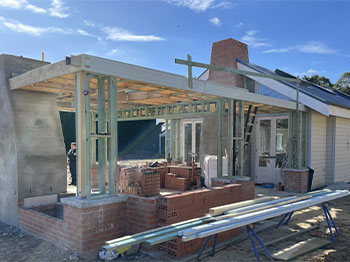
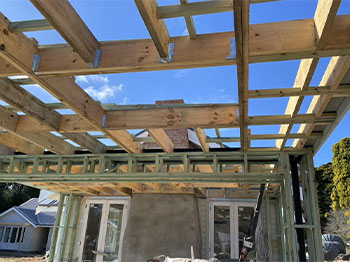
Images of the pergola worksite and skylight opening.
Safety information
In NSW, there are more than half a million young people (aged 25 and under) in the workforce. More than 15,000 young people in NSW are injured at work each year, making up 14% of all workplace injuries in NSW.
By investing time and resources in young workers from their first day in the job, they are more likely to remain healthy and safe throughout their working life. This contributes to a happier and more efficient work environment.
The Young Workers e-Toolkit provides a range of resources developed to support young worker’s safety. This includes information tailored for young workers, employers, parents, and guardians as well as educators.
Ensure:
- adequate supervision of young or inexperienced workers. Provide them with suitable information, training and instruction to be able to complete their tasks safely
- work is undertaken on the ground or on a solid construction where possible
- falls are prevented by using a fall-prevention device, such as:
- temporary work platforms
- guardrails
- scaffolding.
- the use of a work-positioning system, such as:
- a restraint system
- industrial rope access.
- if it is not possible to use a fall prevention device or a work positioning system, use a fall arrest system, such as:
- industrial safety nets
- catch platforms
- harness-based fall-arrest used with lifelines or individual anchors.
- you complete safe work method statement (SWMS) for work where a person could fall more than 2 metres.
The biggest risks for roof work is falling off the edge or through fragile roof materials. Safety measures include using:
- a physical barrier, such as temporary edge protection or guardrails on roof edges
- skylight covers, crawl boards, or physically marked exclusion zones for fragile surfaces.
On-the-spot fines of up to $3,600 apply to businesses who put workers lives at risk from a fall.
Related guidance material
- Construction Site Supervisor Workshop - Young and at risk workers
- Young workers eToolkit
- Checklist for training young workers (PDF, 1191.25 KB)
- Guide for labour hire workers, apprentices and trainees (PDF, 2988 KB)
- Managing the risks of plant in the workplace – Code of Practice (PDF, 1987.96 KB)
- Managing the risk of falls in housing construction – Code of Practice (PDF, 2296.79 KB)
- Working at heights in construction
- Roof edge protection fact sheet (PDF, 2885.66 KB)
- Incident Information – How to prevent falls on a construction site using void covers
Further information
Concrete pump operator sustains serious burns (3 May 2023)
A 39-year-old worker sustained serious burns when a concrete vibrator and jerry can ignited following refuelling on a construction site in Sydney.
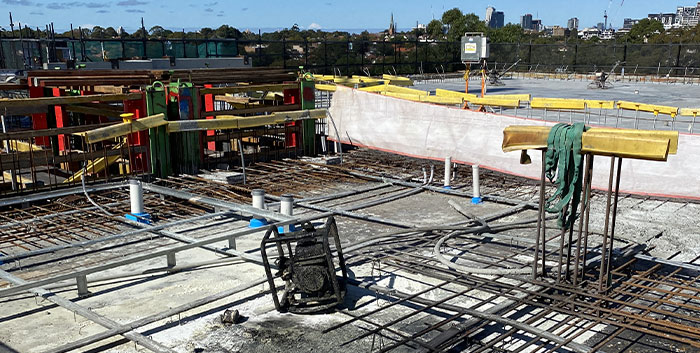
Images of the construction site where the incident occurred.
Safety information
Consider reasonably practicable control measures to manage the risks associated with refuelling plant.to
Ensure:
- obtain a current safety data sheet and ensure it is readily accessible to the workers involved before they use any hazardous chemical
- identify any ignition source in your workplace that has the potential to ignite flammable or combustible material
- follow operating procedures for setting-up, operating, cleaning and maintaining plant items
- establish designated refuelling areas
- have suitable materials handy to enable spills and leaks to be contained wherever chemicals are used, handled or stored
- properly seal containers storing hazardous chemicals when they are not in use
- provide instruction, training and supervision to all workers on the safe use, storage and handling of hazardous chemicals
- wear appropriate personal protective equipment for the task.
Related guidance material
- Managing risks of hazardous chemicals in the workplace - Code of practice (PDF, 1171.43 KB)
- Managing the risks of plant in the workplace - Code of practice (PDF, 1987.96 KB)
- Hazardous chemicals
- Flammable substances
- Concrete placing equipment operations fact sheet
Further information
Worker struck by crane load (9 May 2023)
A 40-year-old non-English speaking worker sustained serious injuries when he was struck by building materials. At the time of the incident, the building materials were being loaded onto a cantilevered crane-loading platform by a tower crane. The worker fell approximately 8 metres, striking temporary chain mesh fencing before landing on the ground below. The injured worker later died in hospital.
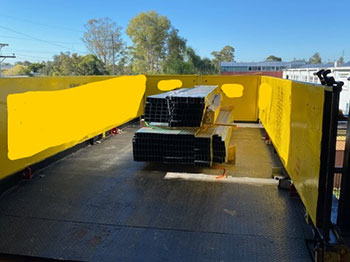
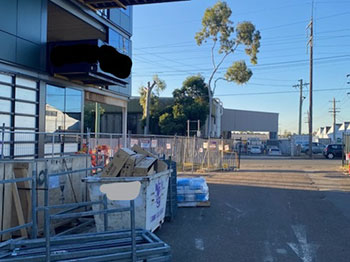
Images of the crane load and the location where the incident occurred.
Safety information
Consider ‘reasonably practicable’ control measures to manage the risks associated with plant in the workplace.
Ensure:
- the path of travel is clear from obstructions when a load is hoisted by a crane, and the load remains under control
- an exclusion zone is set up around the plant, and any suspended loads during loading/unloading processes, to keep people safe around plant and machinery
- you understand the requirements to be authorised by a high-risk work licence, and in the correct class, when undertaking work with cranes. For example:
- to sling the load
- directing a crane operator in the movement of load when it is out of the operator's view
- perform dogging or rigging work
- authorised persons do not place themselves at risk of being crushed between the load and any other surface
- Workers involved in a task are consulted, properly instructed, and trained on how to carry out the task safely. They must know all relevant health and safety information about the task, including the risks and how to manage them
- Training and instruction provided is easy to understand, even for those whose first language is not English and have additional needs.
Related guidance material
- How to manage work health and safety risks – Code of Practice (PDF, 556.72 KB)
- Managing the risks of plant in the workplace – Code of Practice (PDF, 1987.96 KB)
- Construction Work – Code of Practice (PDF, 1014.41 KB)
- Guide for crane operators (PDF, 1225.66 KB)
- Tower crane safety for PCBUs (PDF, 166.44 KB)
- Tower Cranes - safety information
- Loading, Unloading Exclusion Zones
- Safety around your vehicle (SAYV) glove box guide
- Working with or around mobile plant safety alert – SafeWork NSW
- Falling objects fact sheet (PDF, 122.91 KB)
- Translated safety resources
Further information
Working safely around penetrations and voids (May 2023)
In May 2023, SafeWork NSW responded to an incident where a young worker was fatally injured after falling through a penetration that was not adequately covered on a construction site.
Construction workers risk serious injury or even death when working at heights, and these risks are greatest when there are open penetrations and voids workers can fall through.
Businesses are reminded to consider reasonably practicable control measures to manage the risk of working near penetrations and voids.
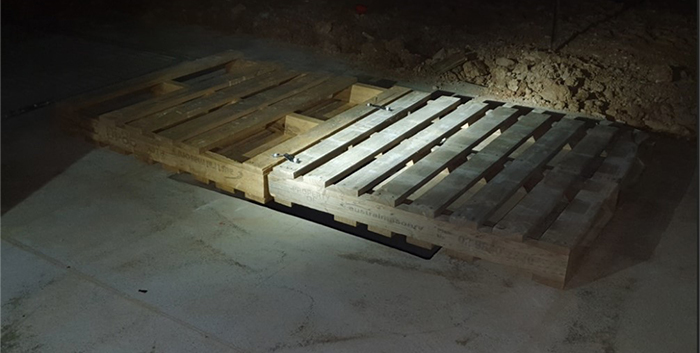
The penetration was inadequately secured with two timber pallets screwed together.
Ensure:
- penetrations and voids are considered during planning and design stages and suitable controls are installed before the penetration or void is formed
- penetration / void covers are used that withstand the load of workers and materials
- covers are secured in position and are clearly identified so they are not mistaken for construction material
- guard rails are installed if the penetration / void is large or needed for temporary access
- if using the penetration / void to access another level, consider using temporary stairs, or make sure your ladder extends one metre past the landing point
- adequate training, instruction and supervision are provided to all workers
- a site-specific safe work method statement (SWMS) is prepared before work commences, where the risk of falls is two metres or more.
Related guidance material
- Managing risks of falls at workplaces – Code of Practice (PDF, 2326.56 KB)
- Managing the risk of falls in housing construction – Code of Practice (PDF, 2296.79 KB)
- Working safely at heights in construction
- Working at heights in construction safety checklist (PDF, 208.69 KB)
- The pocket guide to construction safety (PDF, 2263.73 KB)
- Prepare a safe work method statements
- Incident animation - Fall through void
- Incident animation - Owner builder fall through void
- Incident animation - How to prevent falls on construction site using temporary stairs
- Incident information - How to prevent falls on a construction site using void covers
Further information
Fatality inside shipping container (28 March 2023)
A 62-year-old worker was fatally injured after being crushed by windows while unloading them from a shipping container at Glenwood.
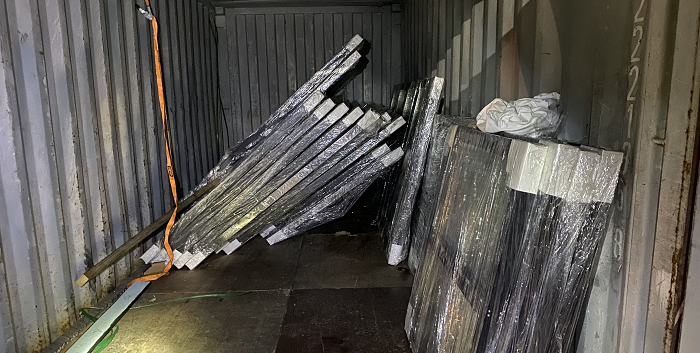
Safety information
Unpacking shipping containers can be hazardous, particularly when unpacking heavy, awkward and unsecured items or handling sheet materials such as glass, stone, panels, or timber. Workers are at risk of being crushed by materials and falling objects as well as being hit by the plant and machinery used in unpacking.
Consider reasonably practicable control measures to manage the risks associated with unpacking shipping containers.
Ensure:
- items are packed into the container in order of removal to eliminate sorting the items inside the container
- extra care is taken when unpacking items such as windows, glass sheets, panels, stone sheets, and composite slabs. You can do this by:
- strapping items to an ‘A’ frame or to the side of the container. Securing each sheet using a separate strap means workers can only release the item that is being removed – one at a time
- using mechanical aids to eliminate the need to manually handle goods
- ensuring individual items are secured as you unpack
- unpacking only in a designated area
- ensuring the load is secured in its final destination
- the area around the container is clear of obstructions
- there is an appropriate traffic management plan in place
- if manual unpacking is necessary workers are trained in the safest system of work to unload the container
- personal protective equipment is used such as gloves, hard hats, safety glasses, and hi-visibility clothing.
Related guidance material
- Guide for unpacking shipping containers – SafeWork NSW
- Unpacking shipping containers checklist – SafeWork NSW (PDF, 560.38 KB)
- Unpacking shipping containers – Video Safety Alert
Further information
Fall through stair void on residential construction site (27 February 2023)
A 28-year-old worker was installing insulation batts on the third level of a residential construction site when he fell approximately three metres through a stair void to the concrete floor below. The worker sustained serious injuries.
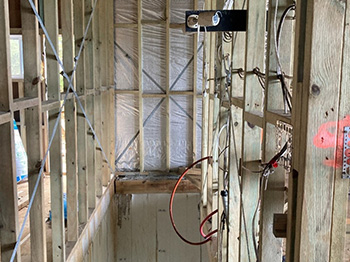
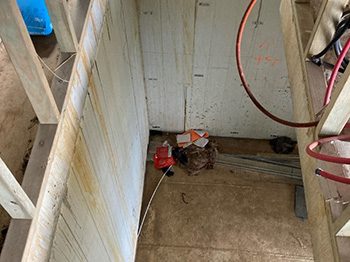
Incident location - stair void
Safety information
Each year SafeWork NSW responds to incidents where workers have been killed or seriously injured from falls from heights. Many of these incidents involve falling from unprotected edges or through penetrations.
Workers in the construction industry are the most at risk of injuries from falling. However, working at height is a risk for any worker.
Businesses are reminded to consider reasonably practicable control measures to manage the risk of falls.
Ensure:
- a site-specific safe work method statement (SWMS) is prepared before work commences where the risk of falls is two metres or more
- all workers understand and follow the SWMS
- workers are provided with safe means to access and exit the work site, and work areas
- work is carried out on the ground where possible. If work cannot be conducted on the ground, minimise the risks of working from heights by:
- using scaffolding
- ensuring all edges are protected by handrail, guard rail, or other physical means that prevents a person from falling
- using an elevated work platform
- any scaffolding used at the site:
- is constructed on solid foundations
- is adequately tied to the supporting structure as well as all handrails, midrails and
- has securely installed planks
- all voids and penetrations have a clearly marked cover that is secured and can’t be dislodged (plywood that is marked and screwed into the ground is a cost-effective solution)
- large voids are protected by suitable fit-for-purpose void covers that accommodate safe access of handrails and scaffolds, or consider using temporary stairs
- adequate training and instruction are provided to all workers
- adequate supervision and assistance are provided to less experienced workers.
SafeWork NSW inspectors regularly blitz construction sites to check compliance and talk with businesses and workers about how to work safely at heights. Use this checklist (PDF, 208.69 KB) to find out if your construction site is working at heights safely.
‘Do work safety right, at any height’ campaign
One wrong step could be your last.
Visit the working safely at heights in construction web page to access a range of resources about how to work safely on roofs and around voids.
Related guidance material
- Managing the risks of falls in housing construction - Code of Practice (PDF, 2296.79 KB)
- Pocket guide to construction safety (PDF, 2263.73 KB)
- Working safely at heights in construction
- Falls though voids - safety information
- Fall through stair void animation
Further information
Traffic controller struck by vehicle (8 February 2023)
A 64-year-old worker was undertaking traffic control on a public road near Newcastle when he was struck by a moving vehicle sustaining serious injuries.
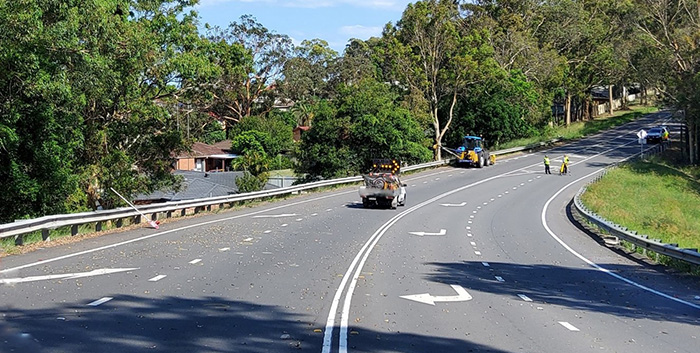
Safety information
Consider ‘reasonably practicable’ control measures to manage the risks associated with traffic in the workplace.
Control measures
- To eliminate traffic risks consider closing the road and not allowing traffic through the worksite.
- To direct traffic in and around the workplace, you may be able to use electronic traffic control devices or traffic lights instead of traffic controllers.
- Install delineation devices such as traffic cones, temporary bollards and barrier boards to define the traffic path through, past or around the workplace.
- Use directional signage such as workers ahead and speed reduction signs.
- Implement a traffic management plan that should include:
- the duties and responsibilities of the people involved
- risks and relevant controls to be implemented
- the desired flow of pedestrian and vehicle movements, including the space needed for plant operators to safely get in and out of their machines
- the expected frequency of interaction of vehicles and pedestrians
- illustrations of the layout of barriers, walkways, signs and general arrangements to warn and guide traffic around, past, or through a work site or temporary hazard
- how short-term, mobile work and complex traffic situations will be managed
- instructions or procedures for controlling traffic including in an emergency.
- Prepare a safe work method statement (SWMS) in consultation with workers and put in place arrangements to ensure the work is carried out in accordance with the SWMS.
- Provide any information, training, instruction, and supervision that is necessary to protect workers from risks to their health and safety.
- High visibility vests should be worn when working in the vicinity of moving traffic or plant.
Worker injured by projectile (7 January 2023)
A 32-year-old worker sustained a serious leg injury after being struck by a projectile in a rail corridor in Sydney. At the time of the incident the worker was in the vicinity of an excavator that was using a mulching attachment to carry out de-vegetation work.
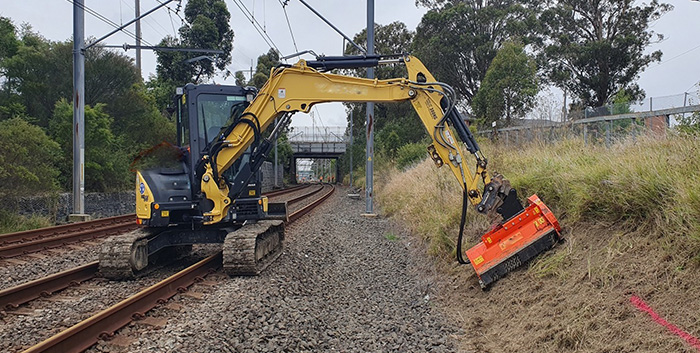
Safety information
Consider ‘reasonably practicable’ control measures to manage the risks associated with mobile plant.
Ensure:
- exclusions zones are established in line with manufacturer’s recommendations
- the parameter for exclusions zones recommended by the manufacturer is incorporated into safe work method statements
- pre-starts include thorough checks of plant including attachments by a competent person
- plant and attachments are maintained in a safe condition and operated in accordance with manufacturer’s recommendations
- workers are provided with adequate information, training, instruction, and supervision to protect them from plant related risks
- all duty holders are consulted on the risks associated with the tasks.
Related guidance material
- Managing the risks of plant in the workplace – Code of Practice (PDF, 1987.96 KB)
- Working with or around mobile plant safety – Safety Alert
- Work health and safety consultation, cooperation and coordination – Code of Practice (PDF, 635.62 KB)
- Prepare safe work method statement
Further information
Ceiling panel collapse (25 October 2022)
Seven workers were injured after falling approximately 3.6 metres (m) while trying to move a compressor across unsupported ceiling panels. Five of the workers were trapped beneath the compressor after the fall.
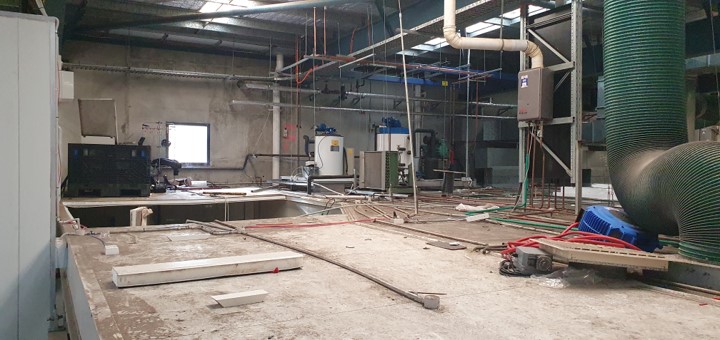
Safety information
Consider ‘reasonably practicable’ control measures to manage the risks associated with falls while accessing and egressing ceilings.
Ensure:
- any work involving a risk of a fall is carried out on the ground or on a solid construction with a surface structurally capable of supporting workers, materials and any other loads applied to it
- manufacturer’s specifications for ceiling panels are available and safe working loads are known prior to using ceiling to store materials or for egressing
- the surface and its supports must be able to safely carry the expected loads, including workers, materials, tools and equipment. When in doubt, have a structural engineer determine the safe load capacity before use
- when work cannot be performed on the ground or from a solid construction, the risk of a fall must be minimised by providing adequate protection against the risk, for example, by providing a fall prevention device, if it is reasonably practicable to do so
- administrative controls may be used to support other controls. Administrative controls must not be used exclusively to minimise the risk of falls unless it is not reasonably practicable to use a higher order control. If relying on administrative controls, it may be necessary to provide a high level of supervision to ensure compliance
- a Safe Work Method Statement (SWMS) for working at heights is prepared for any height with a risk of a fall of over 2 m.
Statistics
Falls from heights are the major cause of fatalities in the construction industry. Most serious and fatal falls are from roofs, ladders or scaffolds – and from a height of less than 4 m.
On-the-spot fines of up to $3,600 apply for failing to protect workers from the risk of falls from heights.
Angle grinder fatality (1 August 2022)
A 64-year-old male was fatally injured while operating a nine inch angle grinder at a residential construction site in Ermington. The angle grinder was being used to cut a brick pier.
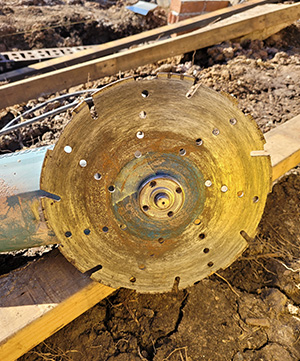
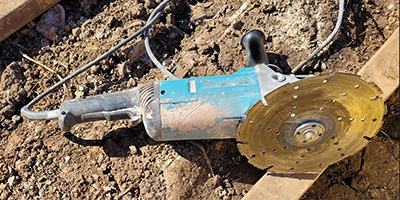
The angle grinder involved in the incident.
Safety information
The increased power and size of nine inch (230 mm) angle grinders makes the grinder more difficult to manoeuvre and can cause severe kickback.
Consider ‘reasonably practicable’ control measures to manage the risks associated with operating angle grinders.
Always:
- plan the work to eliminate or minimise risk to health and safety
- ensure a SafeWork Method Statement is developed, and followed for high risk construction work
- conduct a risk assessment to identify alternative methods and tools prior to selecting a nine inch (230 mm) angle grinder
- carry out a visual inspection of the angle grinder before use, ensure damaged discs are thrown out and not re-used
- use the angle grinder with the correct guard supplied by the manufacturer
- ensure the handle is inserted on the side of the unit that gives the best grip for the work activity
- only use an angle grinder if you have been trained, your employer authorises you to operate it and you follow your employer’s Safe Operating Procedures
- only use approved and appropriate safety controls in accordance with manufacturer’s recommendations if operating an angle grinder on materials likely to generate hazardous dust
- ensure the angle grinder is maintained and repaired according to the manufacturer’s specifications
- ensure the angle grinder has been inspected and tested for electrical faults by a competent person
- wear appropriate personal protective equipment, such as safety glasses and earmuffs.
Related guidance material
- Managing the risks of plant in the workplace – Code of Practice (PDF, 1987.96 KB)
- Construction work – Code of Practice (PDF, 1014.41 KB)
- Guards and disks on angle grinders safety alert
- Pocket guide to construction safety (PDF, 2263.73 KB)
Further information
Fall from scaffold (25 July 2022)
A 26-year-old apprentice sustained serious injuries when he fell from incomplete scaffolding used to access the roof of a two-storey house under construction in Avalon Beach.
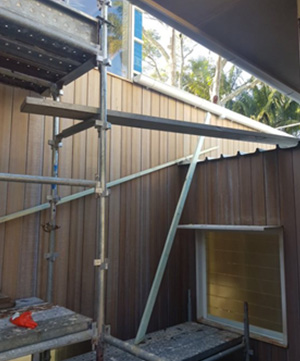
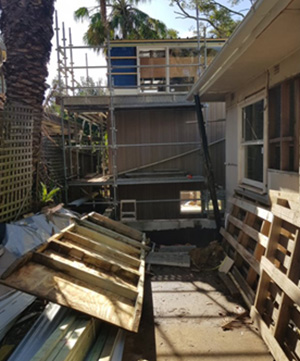
Safety information
Falls from heights are the major cause of death on NSW construction sites. Most serious and fatal fall incidents occur at a height of less than 4 metres.
Employers and PCBUs must ensure the safety of workers moving from one level to another, no matter the height. Workers are most at risk of falls from scaffolding when it is missing components, is misused, or has not been erected or altered by a competent person.
When working with scaffolding, businesses must ensure:
- any erection, alteration or dismantling work on scaffolding with a risk of fall of greater than 4 metres is performed by a person with the relevant High Risk Work Licence (HRWL)
- scaffolding is only constructed on solid foundations and is adequately tied to the supporting structure
- handrails, mid-rails, and planks are securely installed
- workers are provided with a safe way to access and exit the work area
- safe access and egress onto stairs and between deck levels
- workers do not climb on top of rails or on the outside of the structure
- workers, supplies and equipment to be used on the scaffolding are under the duty rating (weight limit)
- voids and penetrations are covered and appropriately marked
- mesh and kickboards are installed to scaffolding to prevent debris falling onto neighbouring properties or workers below the work area
- scaffolding is inspected by a qualified person at least every 30 days and tagged with the inspection date
- workers complete a visual check of the scaffold daily before use and report any defects or issues for rectification
- a Safe Work Method Statement (SWMS) for working at heights is prepared for any height with a risk of a fall of over 2 metres
- all workers complete a site-specific induction and are trained in the appropriate SWMS for working at heights including working on scaffold.
On-the-spot fines of up to $3,600 apply for altering a scaffold without a licence or failing to protect workers from the risk of falls from heights.
Incident related guidance material
- Managing the risk of falls at workplaces – Code of Practice (PDF, 2326.56 KB)
- Managing the risk of falls in housing construction – Code of Practice (PDF, 2296.79 KB)
- Scaffolding Industry Safety Standard ( PDF, 11195.23 KB)
- AS 4576:2020 Guidelines for scaffolding
- Work safely at heights in construction
- Construction falls from heights blitz checklist (PDF, 208.69 KB)
- The pocket guide to construction safety (PDF, 2263.73 KB)
- Dogging, rigging and scaffolding licences
- Erecting, altering and dismantling scaffolding - Part 1: Prefabricated steel modular scaffolding
Further information
Excavation collapse (9 June 2022)
A 19-year-old apprentice was seriously injured while clearing a trench on a residential building site. The worker was positioned within a two-metre-high unsupported trench when a section collapsed and engulfed him with soil. The worker sustained multiple fractures and needed to be dug out by other workers on site.
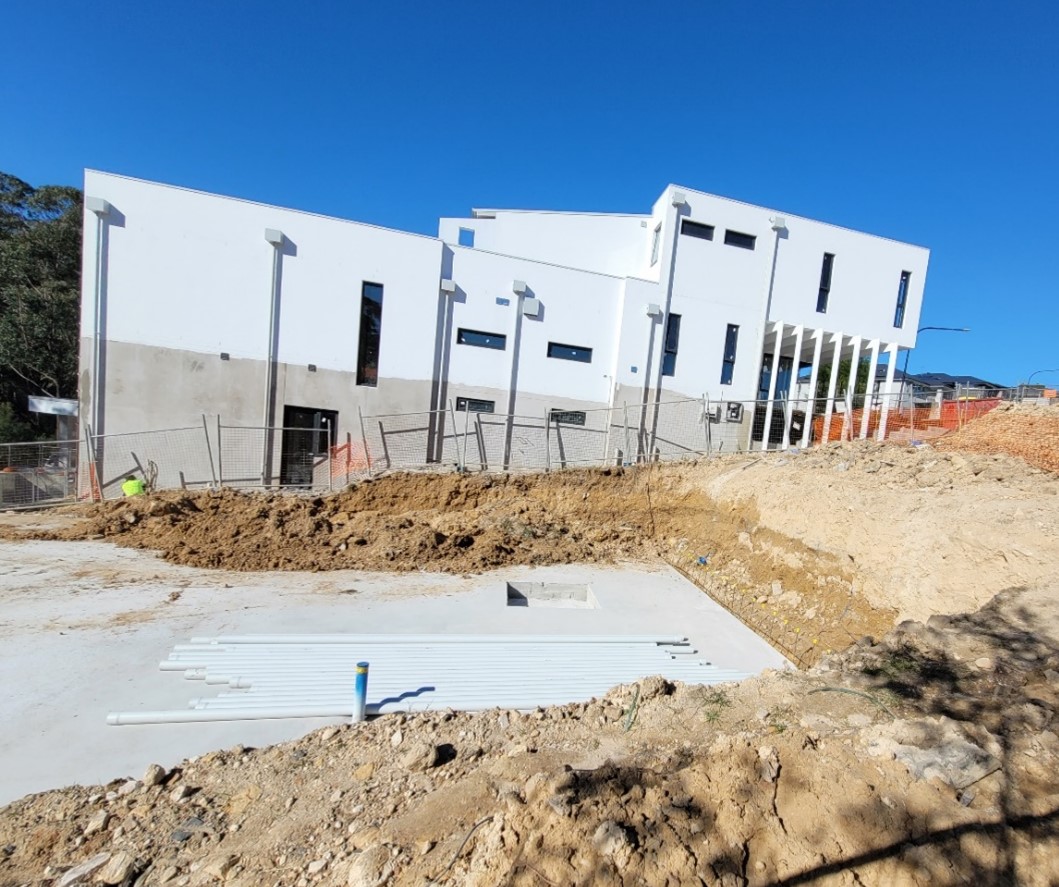
Safety information
Excavation works and working in or near a trench present a serious risk of injury or death. Hazards can include ground collapse, instability of adjoining structures and underground essential services.
You must implement ‘reasonably practicable’ control measures to manage the risks associated with excavation works and working in or near a trench, including to:
- obtain the current underground essential services information (location and depth) relating to the workplace and adjacent areas
- ensure a Safe Work Method Statement (SWMS) is developed and followed for high-risk construction work, such as when the trench depth is more than 1.5 metres, or work is near certain underground essential services
- ensure a competent person, experienced in trenching works, supervises and monitors the work
- ensure the plant is only used for the purpose for which it is designed, is appropriate for the work, maintained in a safe condition and operated by a competent person
- ensure workers not involved with the work and the public cannot access the trench and work areas
- minimise the risk to any person arising from ground collapse on trenches deeper than 1.5 metres by implementing one or more of the following:
- benching – creating a series of steps in the vertical wall of an excavation to reduce the wall height and ensure stability
- battering – sloping the wall of an excavation to a predetermined angle to ensure stability
- shoring – using support systems for an excavated face or faces to prevent the movement of soil and therefore, ground collapse
- obtaining written advice from a geotechnical engineer that all sides of a trench are safe from collapse
- obtain advice from competent persons regarding the soil and groundwater conditions of the site – especially after any event that could affect the safety of the trench (e.g. a weather event or ground slip)
- obtain advice from competent persons regarding any temporary or permanent control measures required to adequately support potentially affected structures, their foundations, and excavated faces
- ensure young workers and apprentices are suitably supervised by a competent and qualified person
- ensure an emergency plan is prepared for the site.
Related information
- Excavation Work – Code of Practice (PDF, 4128.95 KB)
- Construction Work – Code of Practice (PDF, 1014.41 KB)
- How to Manage Work Health and Safety Risks – Code of Practice (PDF, 556.72 KB)
- Construction Safety Information – SafeWork NSW
- The Pocket Guide to Construction Safety – SafeWork NSW (PDF, 2263.73 KB)
- Young workers e-toolkit – SafeWork NSW
- Checklist for training young workers – SafeWork NSW (PDF, 1191.25 KB)
- Traumatic event management plan - SafeWork NSW
- Speak Up Save Lives App – SafeWork NSW
- Mental health at work – NSW Government
Electrical apprentice falls from roof during solar installation (1 June 2022)
A 22-year-old 4th year electrical apprentice sustained serious injuries when he fell approximately four metres from a rooftop. The apprentice was installing solar roof panels on a house under construction.
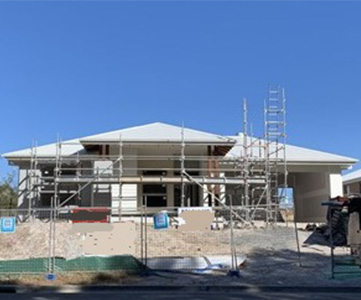
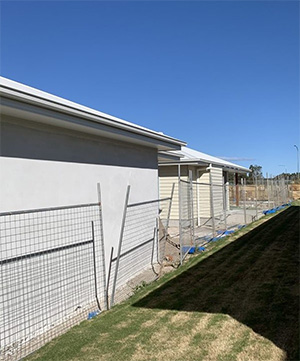
Front and side view of incident site.
Safety information
In NSW, there are more than half a million young workers (aged up to 25) and more than 15,000 of them are injured at work each year. Regardless of how they are employed, or in which industry, young workers need extra support to ensure they are carrying out their tasks correctly and safely.
Solar panels are becoming increasingly popular in NSW, however, there are significant falls from heights risks to workers when installing these systems including:
- falls over unprotected roof edges
- falls through uncovered penetrations and voids
- falls though skylights, alsynite, fibre cement and other weak materials
- falls though damaged, brittle, weakened or otherwise non-supporting roof surfaces
- slips and trips on pitched/sloping roof surfaces
- slippery surfaces due to algae, moss, moisture, dirt etc.
- falls during access (both people and equipment) e.g. ladders.
Consider ‘reasonably practicable’ control measures to manage the risks associated with solar panel installations.
You must ensure:
- a site-specific safe work method statement (SWMS) is prepared where the risk of falls is two metres or more
- the SWMS is prepared in consultation with workers – make sure they follow it
- the correct safety equipment is in place before work commences
- the hazards, risks and suitable controls are identified before accessing the roof
- workers have a safe means of access and egress to work areas
- falls are controlled using a fall prevention device, such as covers, temporary edge protection (guardrails) and scaffolding
- a harness-based system is only to be used when higher order controls are not reasonably practicable
- ladders are placed at a ratio of 1:4 to the wall, secured at the top and bottom, and extended at least one metre above the roof edge – consider using an elevating work platform or scaffolding instead of a ladder
- adequate training and instruction in the correct use of the equipment is provided to all workers.
- adequate supervision and assistance is provided to less experienced workers.
Related information
- Solar panel photovoltaic (PV) installations – SafeWork NSW
- Solar safety video safety alert – SafeWork NSW
- Guide to safe solar panel installation – Safe Work NSW
- Managing the risk of falls in housing construction (PDF, 2296.79 KB) – SafeWork NSW
- Young workers eToolkit – SafeWork NSW
- Traumatic event management plan – SafeWork NSW
- Mental health at work – NSW Government
Roof collapse (9 May 2022)
A 30-year-old worker sustained injuries when the temporary support post for the roof he was tiling failed, causing the roof to collapse. At the time, tiles had been stacked on the unsupported eaves in preparation to be installed.
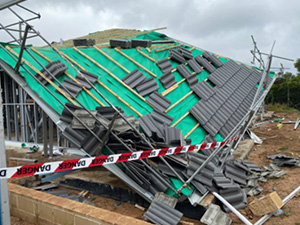
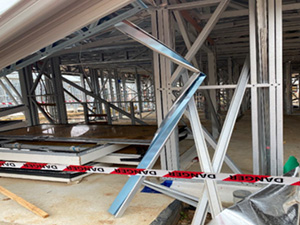
The collapsed roof and temporary support that gave way.
Safety information
Structural collapses pose risks to workers on top of the structure as well as those working underneath and around the structure. These risks include falls from heights, being hit by falling objects and being crushed under the collapsed building material.
You must implement ‘reasonably practicable’ control measures to manage the risks associated with structural collapses, including:
- consult with suitably qualified and competent persons regarding engineering and structural requirements during construction
- follow all engineering and construction requirements as per the approved construction plans, including meeting hold points and inspection requirements
- ensure structural supports are correctly sized and have the load bearing capacity required
- ensure temporary structural supports are correctly located and fixed in position
- ensure heavy materials are not placed on unsupported roof areas
- implement safe work areas to reduce the risk to workers working beneath structures from being injured from falling objects or crush injuries in the event of a structural collapse
- communicate any safety concerns with the designer or engineer and do not continue work until the issue is resolved
- ensure a SafeWork Method Statement (SWMS) is developed, and followed, for high-risk work
- ensure all workers have the required licences and qualifications
- ensure all workers complete a site induction and are provided with all relevant safety information
- ensure all workers are wearing the correct PPE
- prepare an emergency plan for the site.
Related guidance material
- Managing the Risk of Falls at Workplaces – Code of Practice (PDF, 2326.56 KB)
- Managing the Risk of Falls in Housing Construction – Code of Practice (PDF, 2296.79 KB)
- Construction Work – Code of Practice PDF, 1014.41 KB
- How to Manage Work Health and Safety Risks – Code of Practice (PDF, 556.72 KB)
- Safe Design of Structures – Code of Practice (PDF, 1039.8 KB)
- The Pocket Guide to Construction Safety – SafeWork NSW (PDF, 2263.73 KB)
Further information
Five metre fall through window (6 May 2022)
A 39-year-old plasterer was seriously injured while carrying out renovation work in a school library at Wahroonga. The worker was removing clips from the inside of an unprotected window when he fell approximately five metres through the window to the ground below sustaining serious head and spinal injuries.
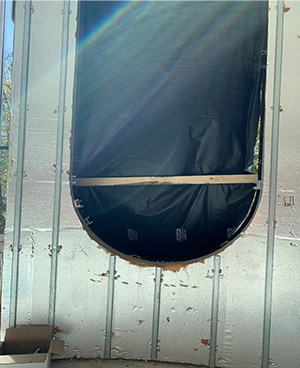
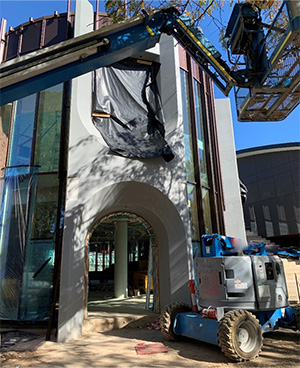
The worker fell through the first story window.
Safety information
Employers must protect workers from the risk of falling from one level to another – no matter the height. Workers from culturally and linguistically diverse backgrounds can be more at risk in workplaces and may require additional supervision or information to work safely.
Consider ‘reasonably practicable’ control measures to manage the risks associated with working at heights.
Businesses should:
- inspect the site prior to commencing any work at heights in order to assess and plan for suitable safety controls to prevent risk of falls
- develop a site specific Safe Work Method Statement (SWMS) for any high risk construction work with risk of falls over two metres. Ensure the SWMS is understood by all persons using the document
- conduct work on the ground or on a solid construction. If you don’t have to work at heights, don't. Working from the ground is always the safest option
- use a fall-prevention device. If you have to work from a height, you need to manage the risk of a fall. A fall-prevention device is best because it will prevent your workers from falling. Examples include temporary work platforms, guardrails and scaffolding
- use a work-positioning system. When it is not possible to use a fall-prevention device, a work-positioning system is your next best option. This system either prevents a fall hazard being reached or enables a person to work supported in tension in a way that prevents the person from falling. Examples of this include elevating work platforms such as scissor lifts
- use physical barriers such as temporary edge protection or covers in unprotected areas where there is a risk to workers
- provide information, training and instruction to workers. This should be provided in a way that is readily understandable to all workers
- provide adequate supervision by a competent person, especially if they are undergoing training or are unfamiliar with the working environment.
The Working safely at heights in construction campaign (launched by SafeWork NSW in June 2021) aims to provide resources especially aimed at young workers and workers from culturally and linguistically diverse backgrounds in particular.
Related information
- Managing the Risk of Falls at Workplaces – Code of Practice (PDF, 2326.56 KB) – SafeWork NSW
- Construction Work – Code of Practice (PDF, 1014.41 KB) – SafeWork NSW
- The pocket guide to construction safety (PDF, 2263.73 KB) – SafeWork NSW
- Prepare a safe work method statement – SafeWork NSW
Fall from scaffold on slipway (12 November 2021)
A 67-year-old worker performing repairs and maintenance to a vessel has fallen from bracket scaffolding on a slipway in Ulladulla. The worker removed a timber scaffolding plank before falling approximately three to four metres to the concrete ground below. As a result of the incident the worker sustained foot, leg, hip and spinal fractures.
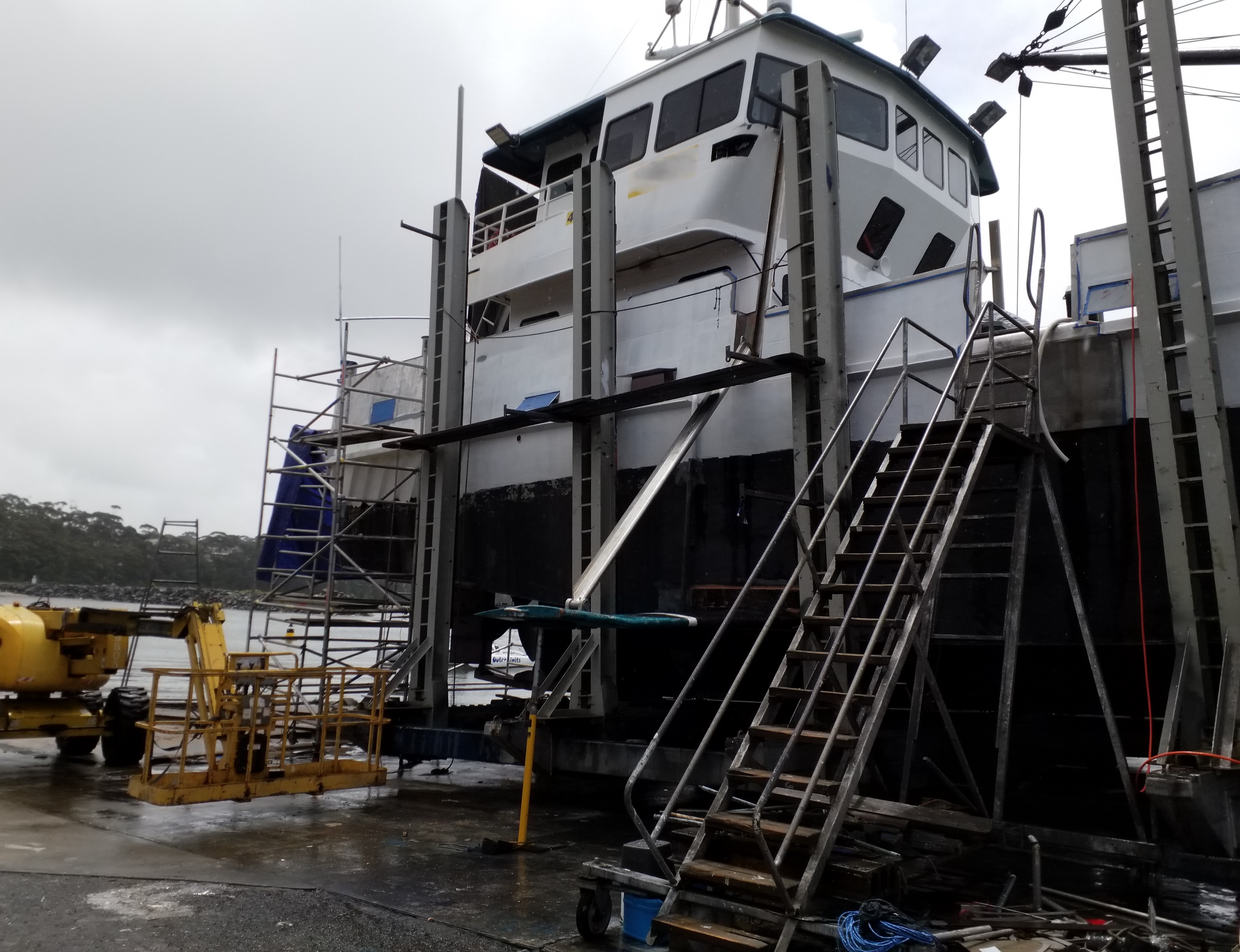
Safety information
Tasks undertaken by marine businesses can involve working at heights to access the hull and topsides of vessels. Much of this work is done on temporary work platforms when the vessels are on slipways or on exposed or covered hardstand areas. Consider ‘reasonably practicable’ control measures to manage the risks associated with working at heights and temporary work platforms.
Fall prevention
Employers must consult with other duty holders and manage the risk of falls at the workplace by working from the ground or solid construction. If this is not possible, consider using fall prevention devices, a work positioning system or fall arrest system.
Fall protection devices
Fall prevention devices include fencing, edge protection, covers, scaffolds, elevating work platforms, work boxes and other temporary work platforms. Such devices should always be installed and used in accordance with the manufacturer's instructions.
Employers must ensure:
- scaffolding includes edge protection if:
- a person could fall more than two metres, or
- if a fall of less than two metres is reasonably likely to cause injury
- scaffolding where a person could fall more than four metres must be erected by a licensed scaffolder and have a valid handover certificate
- work positioning systems include industrial rope access or a restraint system that stops a worker from reaching a position where they could fall
- falls arrest systems include catch nets and harness-based fall arrest systems - such systems should only be used by workers with suitable training and a rescue plan to retrieve a fallen worker is required
- other measures to control the risk of falls are in place, including having safe systems of work (Safe Work Method Statements) and adequate training/supervision of workers.
Related information
- Managing the Risk of Falls at the Workplaces - Code of Practice SafeWork NSW
- Managing risks in stevedoring - Code of Practice SafeWork NSW
- Tower and mobile scaffolding information sheet - SafeWork Australia
- Working at heights - SafeWork NSW
- Scaffolding - SafeWork NSW
- Develop Workplace Health & Safety Guidance for Recreational & Light Commercial Boating Industries - Boating Industry Association NSW
Worker suffers flash burns (12 November 2021)
A 34 year-old worker was injured while working on the balcony of a townhouse in Botany.
A temporary plastic canopy was installed over the balcony to act as a rain barrier. The worker was undertaking waterproofing at the time using a highly flammable solvent-based contact adhesive, membrane sheets and a hot air tool. An open plastic bucket containing the decanted adhesive ignited, and remained on fire, resulting in second to third degree burns to both legs of the worker. Parts of the balcony, including the plastic canopy, caught on fire.
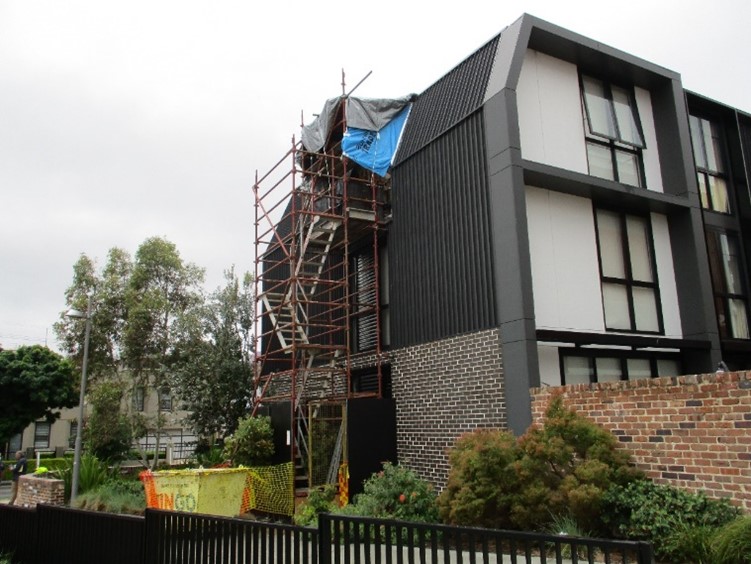
Location of the incident
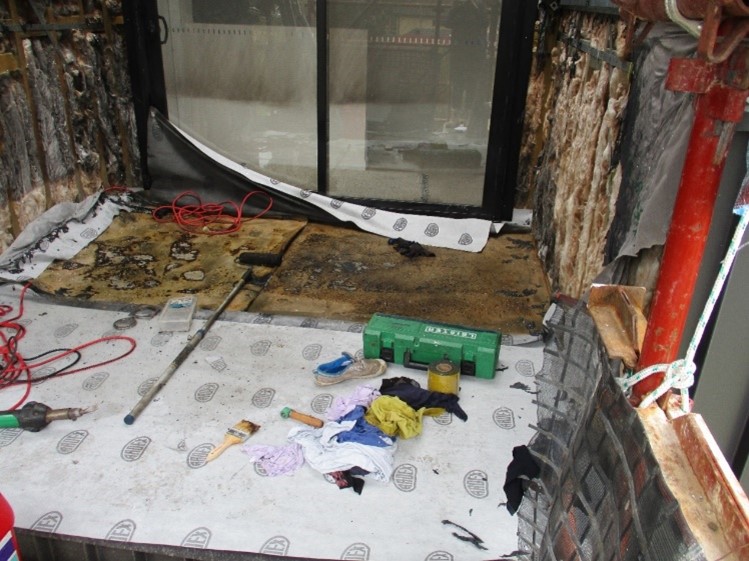
Balcony where the fire took place
Safety information
Consider ‘reasonably practicable’ control measures to manage the risks associated with working with hazardous chemicals and when conducting hot work activities.
When conducting hot work activities:
- implement a hot work permit which includes a detailed review to identify all potential hazards associated with the proposed hot work activity and to eliminate the hazards,or where this is not reasonably practicable control the resulting risks
- identify and remove any possible flammable or combustible materials in the area,including rubbish, paper or dust that could be potential fuel sources or produce dust explosions
- ensure the area is not a confined space
- ensure the area is adequately ventilated
- ensure adequate firefighting equipment is available and ready for use
- utilise a fire watch person to monitor the hot work environment
- provide training to workers about the hazards associated with hot works, the use of the hot work permit system and emergency planning
- ensure workers are wearing appropriate non-flammable personal protective equipment.
When working with hazardous chemicals:
- identify the physical and health hazards of chemicals at work before first use. Inform and train workers in safe use, following manufacturer’s instructions or instructions on the Safety Data Sheet
- remove ignition sources from hazardous areas
- substitute a highly flammable liquid with one that is less flammable or combustible
- ensure ventilation is adequate to avoid the creation of a hazardous atmosphere
- physically separate hazardous chemicals from any chemicals or other things that may be incompatible
- distance workers from hazardous chemicals and any potential hazards generated by their use
- use intrinsically safe electrical equipment - consider whether the hazardous chemicals can generate flammable or explosive atmospheres, and ensure that any equipment being used, like stirrers, is safe.
More information
Operator thrown off tracked dumper (4 August 2021)
A 43-year-old male was operating a tracked dumper. While he was tracking down a set of ramps the tracked dumper tipped forward throwing him from the operator’s platform. He suffered a neck fracture and serious head laceration.
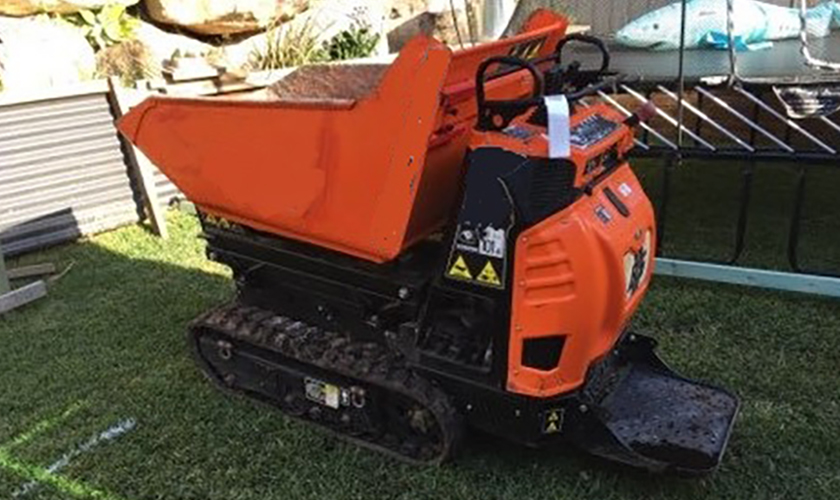
Images: (above) Tracked dumper involved in the incident. (below) Ramps used at the incident scene
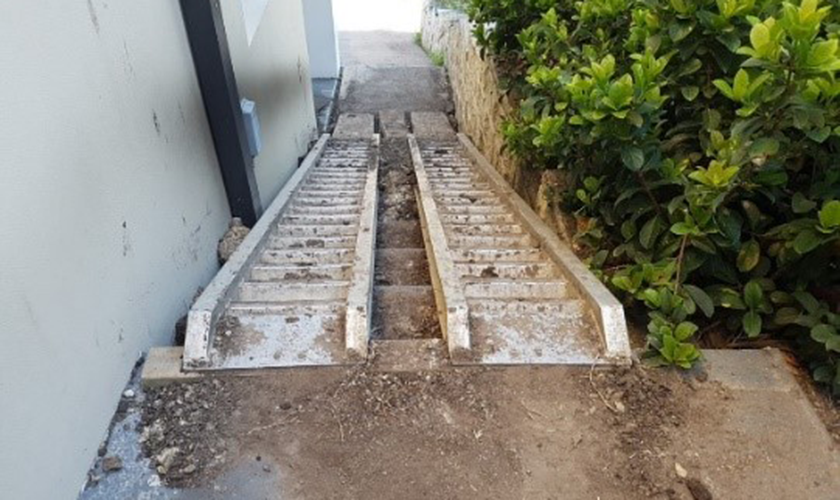
Safety information
Implement ‘reasonably practicable’ control measures to manage the risks associated with working with plant in the workplace.
Tracked dumpers are generally used to transport materials such as soil or rubble to and from locations within a site where access is tight.
Even though these plant items are small, overturning of the dumper or the operator being thrown from the plant can result in serious injury or death. Unlike large plant items where the operator’s cabin offers some form of protection, the operator is not secured with a seatbelt or protected by a roll over protection system. The safe use and operation of tracked dumpers plays an important part in keeping the operator safe.
When considering whether a tracked dumper is suitable to use on a site you must ensure:
- the manufacturer’s instructions clearly set out the safe operating conditions and limitations for the plant; and the site conditions allow for the plant to be used in accordance with those instructions e.g. ground stability, maximum slope (transverse and longitudinal)
- all necessary training, information and instruction is provided to and understood by operators prior to use, e.g. direction of travel, maximum capacity (load)
- operators are provided all necessary supervision to confirm the manufacturer’s instructions are followed
- if you are unsure how to safely use the plant, do not use it until you have consulted with the supplier (e.g. hire shop) or manufacturer and have all the necessary information.
More information
- Managing the risks of plant in the workplace [PDF] – Code of practice
- Working with or around mobile plant safety alert – SafeWork NSW
Don't lose your High Risk Work licence
SafeWork NSW Inspectors have responded to a number of incidents that have resulted in the suspension or cancellation of high-risk work licences.
These incidents involved the operation of tower cranes, slewing mobile cranes, vehicle loading cranes, forklift trucks and the undertaking of scaffolding work.
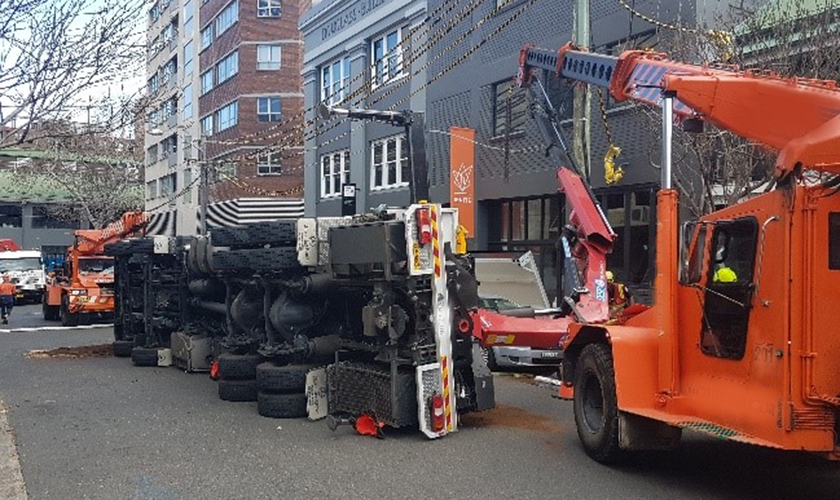
Safety information
Persons must be authorised to undertake high-risk work. High-risk work licence holders must ensure they take reasonable care for their own health and safety and must ensure that their acts or omissions do not adversely affect the health and safety of others.
Inspectors have the power to immediately suspend a high-risk work licence where there is an imminent serious risk to the health and safety of any person.
Several licence holders have recently had their licence suspended or cancelled resulting in them not being authorised to undertake high-risk work. Persons who have had their licence cancelled will need to be retrained and reassessed as competent. They may also incur a disqualification period where they are unable to apply for another high-risk work licence. Penalties apply for persons undertaking high-risk work while their licence is suspended or cancelled.
High-risk work licence holders must:
Only do work you are licenced to carry out
- always have your licence available for inspection when undertaking high-risk work
- only carry out high-risk work for the class of licence you hold
Be familiar with the plant before you start
- ensure that the plant is in a safe condition prior to operating
- know all the operating controls and the limitations of the plant
Operate the plant safely
- operate the plant in a safe manner and within its rated capacity and capability
- ensure you take reasonable care to carry out the high-risk work safely and competently
Control access to / separation from the plant
- prevent unauthorised or unintentional use of the plant
- have adequate pedestrian separation and traffic control measures in place
If an incident occurs
- ensure that the plant is inspected by a suitably competent person before it is put back into service.
More information
Fall through steel void panel (12 August 2021)
A 32-year-old worker was injured when he fell approximately 5 metres through a void on a bridge under construction near Gilgandra. The worker was walking along reinforcement bars and across the concrete bridge beams when he stepped on to a steel void panel which dislodged.
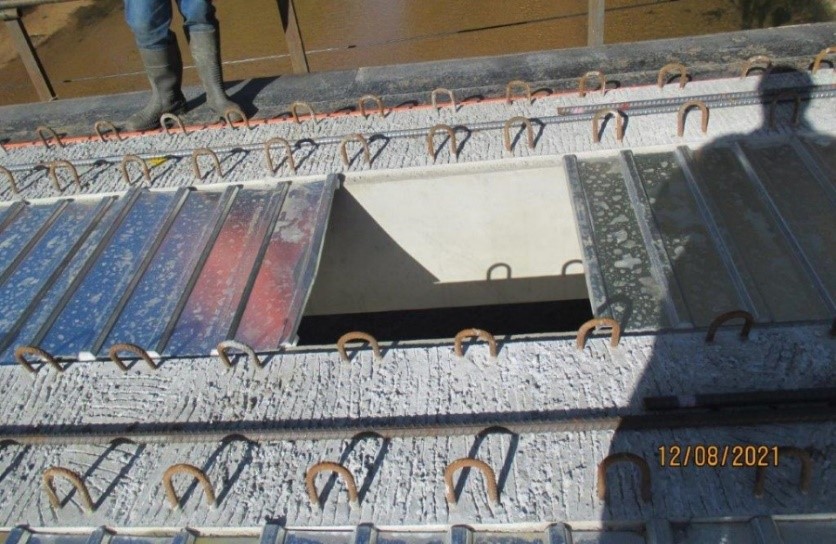
Section of steel void panel
Safety information
Falls from heights is the number one killer on construction sites in NSW and every year there are dozens of serious incidents. Many of these incidents are from stepping on an unstable surface.
Consider ‘reasonably practicable’ control measures to manage the risks associated with working at heights.
You must ensure:
- a safe method of construction is incorporated into the design of formwork/ falsework e.g. minimising work at height, incorporating edge protection, using catch decks etc
- formwork/falsework is erected according to the design, and within any tolerances required by the designer
- formwork/falsework is secured from movement due to construction loads, wind loads, concrete pour loads etc
- suppliers/manufacturers limits are not exceeded (e.g. maximum span between supports, minimum bearing area, maximum applied load, number of fixings etc)
- voids, penetrations, and non-trafficable areas are covered, or access is prevented by physical barriers or edge protection
- covers are strong enough to support the load from people, are securely attached to prevent dislodgement and marked (e.g. “Danger - void”)
- lower order control measures such as harness-based restraint or fall arrest systems are used in situations where covers or physical edge protection can’t be used.
More information
Worker struck by a track skid steer (26 July 2021)
A 45-year-old worker was struck by a reversing track skid steer while surveying levels as part of a road construction in the Southern Highlands. The worker sustained significant crush injuries.
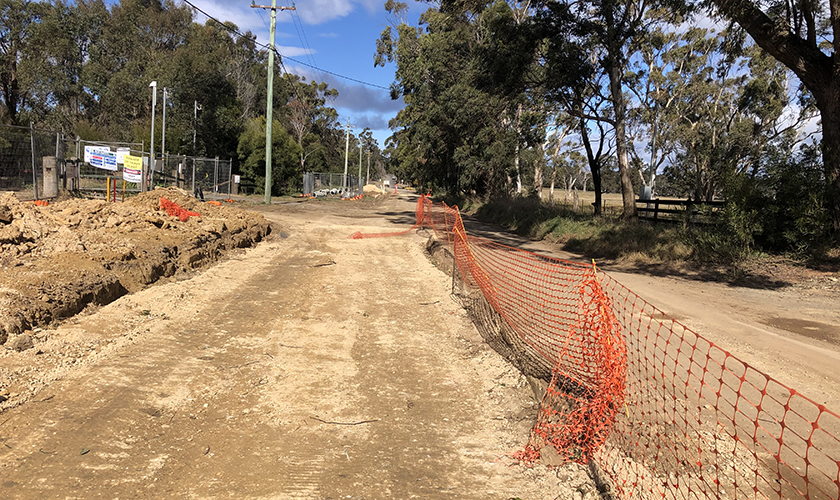
Incident site - southbound
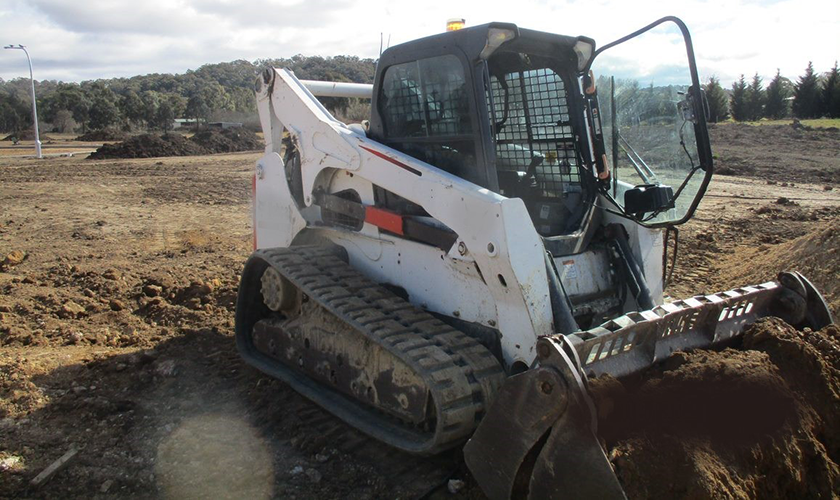
Safety information
Consider reasonably practicable control measures to manage the risks of mobile plant in the workplace. You must implement effective systems to prevent mobile plant striking workers. These systems can include:
- Workplace specific induction for all workers before work starts
- Mobile plant operation area exclusion zones (eg: the use of fences, bollards, barriers, safety rails, etc to separate pedestrians from moving plant and vehicles)
- Sequencing work to minimise the number of trades and labourers on foot when heavy vehicles are operational
- Dedicated turning bays, to allow heavy mobile plant to maintain operator visibility by moving forward
- Dedicated footpaths (plant exclusion) for workers on foot
- The use of spotters where heavy mobile plant is required to reverse (or operate in the direction of less visibility)
- The use of formal and trained traffic controllers where required
- Establishing and maintaining communication systems e.g. radios to notify plant operators of persons approaching work area
- Using audible and visible alarms to identify moving plant (e.g. reversing alarm, flashing lights)
- The use of proximity sensing devices
- Using high visibility garments to increase a person’s visibility
- Training workers in relation to blind spots for certain vehicles, such as the blind spot created by the arm of an excavator
More information
- Working with or around mobile plant safety – SafeWork NSW
- Workplace traffic management guidance material - SafeWork Australia
- Mobile plant - SafeWork SA
- Code of Practice: Managing the risks of plant in the workplace (PDF 1.5MB) – SafeWork NSW
Worker falls through void (1 July 2021)
A 49-year-old tiler has fallen approximately three metres from the internal first floor hallway through an unprotected void at a residential construction site in Carlton. The worker sustained a fractured eye socket and serious head injuries.
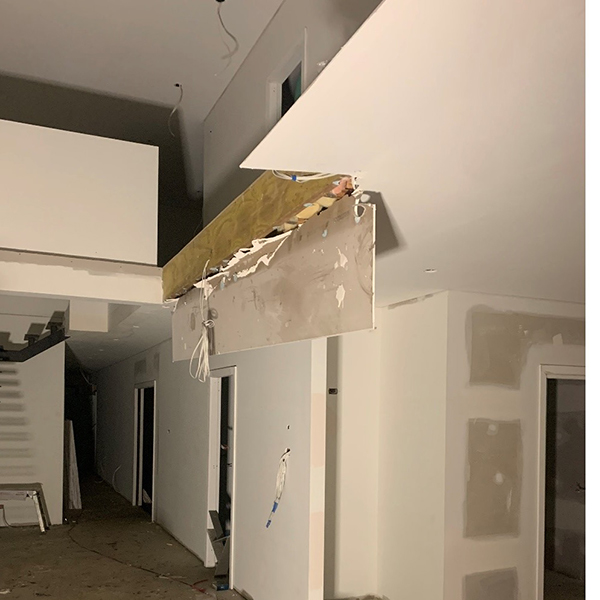
Safety information
Most falls through voids or penetrations occur because they:
- are uncovered
- have unsuitable covers in place, or
- have no guardrail.
You must implement ‘reasonably practicable’ control measures to manage the risks associated with falls through voids or penetrations.
Make sure:
- areas that have a void / penetration are clearly highlighted and communicated to all workers
- guardrails are installed where the void/penetration is large or needed for temporary access
- if using the void/penetration to access another level, you consider using temporary stairs or make sure your ladder is secure and extends one metre past the landing point
- all voids and penetrations that will not be used for access, have a clearly marked and secured cover so it can’t be dislodged and is structurally suitable for purpose. Plywood that is marked as covering a penetration and properly secured into place, is a cost-effective solution.
SafeWork NSW campaign
SafeWork NSW launched the ‘Working safely at heights in construction – when you fall – they fall’ campaign in June 2021. Several relevant resources are available from the campaign page.
More information
Worker falls from scaffold onto members of the public (11 May 2021)
A 23-year-old scaffolding labourer has fallen from a scaffold during dismantling at a Hurstville residential unit complex. The worker climbed the exterior of the scaffold to remove loose scaffold components on the upper decks. While climbing he has fallen from the scaffold onto the awning below that covered the entrance to the unit complex. The awning collapsed landing on two elderly members of the public and another worker who were entering the building. All three sustained injuries after being hit by the awning and falling worker.
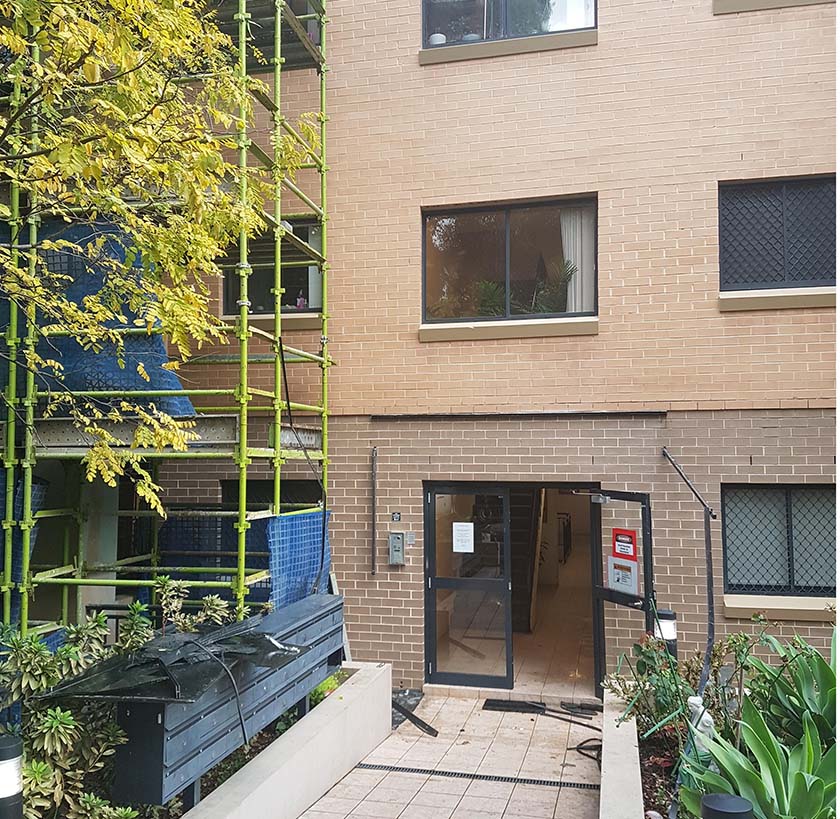
Safety information
Consider ‘reasonably practicable’ control measures to manage the risks associated with falls while working with scaffolding.
You must:
- ensure no one climbs the exterior of the scaffold
- provide safe access to platforms on the scaffold, either internal access such as scaffold stairs (preferred) or fixed ladders, or direct access from an adjacent structure
- erect and dismantle scaffolds using a safe system of work that ensures scaffolders are behind edge protection at all times
- ensure no one climbs standards, ledgers, or transoms to gain extra height
- prepare a safe work method statement when working two metres or more from the ground and ensure it is understood and followed by all workers
- prevent all unauthorised access to scaffold
- ensure scaffolds are only erected, altered and dismantled by a worker with the appropriate scaffolding high risk work (HRW) licence. You can check if a HRW licence is valid by visiting verify.licence
- ensure workers hold a valid construction induction card (white card) prior to directing or allowing them to work on a NSW constructions site
Scaff Safe 2021
SafeWork NSW will continue to target scaffold safety on construction sites throughout 2021. Inspectors will be attending worksites and talking with employers and workers to ensure compliance. On the spot fines of between $432 and $3,600 apply for those not managing scaffold safety, falls from heights risks, and unlicenced workers.
More information
Workers injured in formwork collapse (7 May 2021)
An unsupported formwork platform has collapsed on a multistorey construction site at Westmead. Two workers were accessing the temporary platform and fell approximately 3.5 metres, suffering fractured ribs and serious lacerations to the head and legs. This is the second incident in less than a month where workers have fallen due to a structural collapse on a construction site.
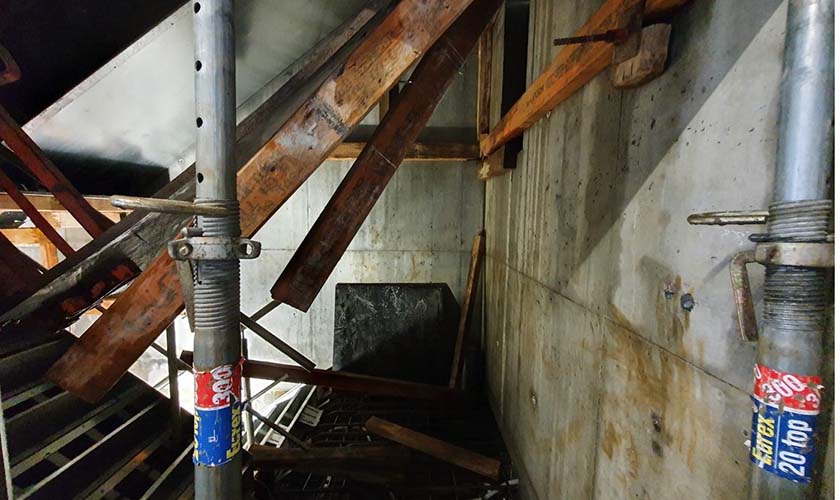
Safety information
Implement ‘reasonably practicable’ control measures to manage the risks associated with the collapse of incomplete formwork, including:
- Restrict unauthorised access to incomplete formwork. Access should be restricted via fixed barriers where reasonably practicable, which are clearly marked
- Make sure all workers are aware of the documented system of work for gaining authorisation to access incomplete formwork. Provide workers with the necessary instruction and training
- Monitor the controls, including inspecting the fixed barriers and supervising workers to ensure the documented system of work is being followed
Formwork inspections should be undertaken:
- Routinely as the formwork is being constructed and while workers can access the area
- Prior to loading
- Periodically following loading
- Following unplanned events e.g. adverse weather
Inspections should be recorded and include evidence of the condition of the formwork at the time of the inspection e.g. photographs.
Certification that the formwork complies with AS3610 and the design should only be provided upon completion of the formwork, including the completion of rectification works and re-inspection of any identified issues.
More information
Falls from heights during the construction of conventional formwork can be avoided. This video looks at useful ways you can manage the risk of falls from heights.
Bricklayers injured in floor collapse (24 April 2021)
Two bricklayers sustained injuries after the first floor they were working on collapsed at a Marsden Park residential construction site. Approximately four pallets of bricks had been stored on the timber first floor of the house construction when the floor gave way. The floor was supported by timber joists, supported by a timber beam at one end and a steel beam at the other end. The steel beam was supported by the wall frame at one end and a temporary supporting member at the other.
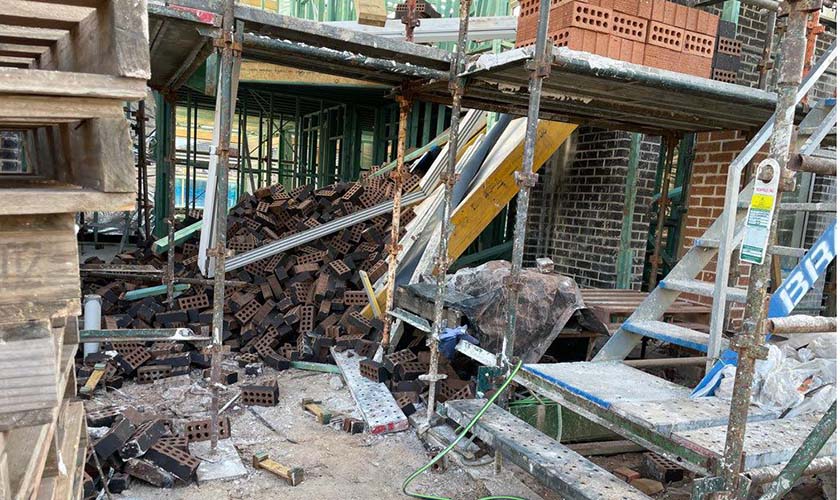
.
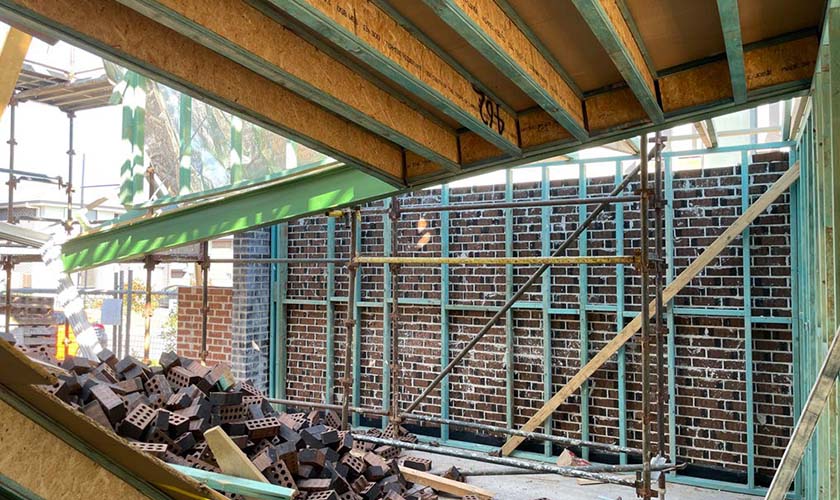
Safety information
You must implement ‘reasonably practicable’ control measures to manage the risks associated with the collapse of a structure loaded with heavy materials during construction, including:
- only store materials on constructed surfaces with a known safe working load capacity. If the safe working load capacity is unknown, store materials on the ground until the capacity can be determined by a competent person e.g. structural engineer
- where temporary structures are used to support a working surface, make sure the temporary structures are designed to support the expected loads and/or the safe working load capacity is adjusted accordingly, and the temporary supports are secured and protected to prevent unauthorised alterations and accidental dislodgement
- workers are informed and trained on the safe load capacity of constructed surfaces, including point and distributed loads
- work practices involving the storage of materials on constructed surfaces are monitored by competent persons
- the work surface has a safe means for people to enter and exit and move around the work area.
More information
Worker falls into unprotected pier hole (11 February 2021)
A 46-year-old skid-steer loader operator / construction labourer suffered serious back injuries after falling feet first approximately six metres into an unprotected pier hole on a residential construction site. The worker was walking around the front of the truck when he fell into the pier hole. The hole was not visible due to shadowing from the cab of the truck. A pier hole covering was not in place when the incident occurred.
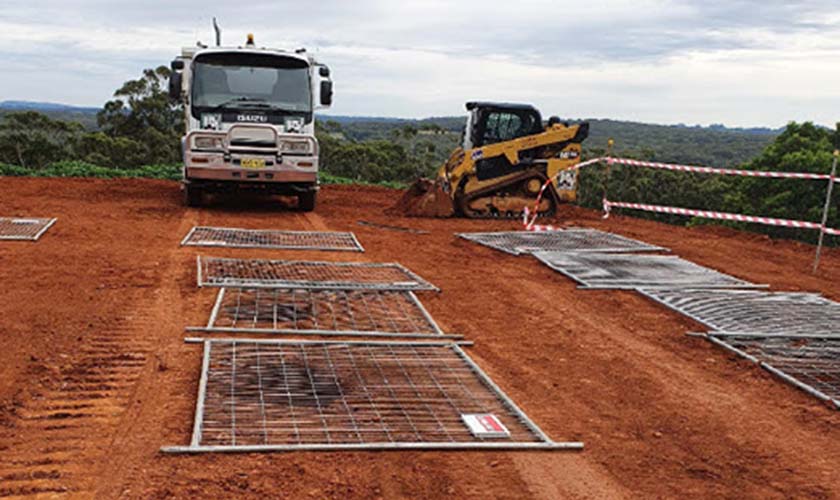
Safety information
The risk of falls into pier holes on construction sites is a known risk and continues to present a significant risk of fatality or serious injury.
You must implement ‘reasonably practicable’ control measures to manage the risks associated with falls in and around pier holes. Make sure:
- pedestrian and/or vehicle access to the area is prevented, or where this is not reasonably practicable, pier hole covers are installed to minimise the risks associated with falls
- pier hole covers are designed by competent person(s) to withstand all potential pedestrian traffic and impact forces, and vehicular traffic where it is deemed permissible. Fence panels are not rated as penetration covers and should not be used as a control measure
- pier hole covers are installed in accordance with their design, including fixing the covers securely in place and being clearly labelled to prevent unauthorised removal or movement
- pier hole covers are designed to minimise ingress of materials and debris
- pier hole covers are only removed by authorised persons and when it is safe to do so
- inspections of pier hole covers occur routinely and following unplanned events e.g. adverse weather
Excavating pier holes more than 1.5 metres deep is considered ‘high risk construction work’. You must have a Safe Work Method Statement for the work being conducted.
On-the-spot fines of up to $3,600 may be issued for placing workers lives at risk by not protecting them from falls from heights.
More information
Height access worker fatality (18 March 2021)
A 52-year-old worker has suffered fatal injuries after falling eight storeys at a Liverpool construction site. The worker was repairing flashing on the side of a building using an industrial rope access system at the time of the incident.
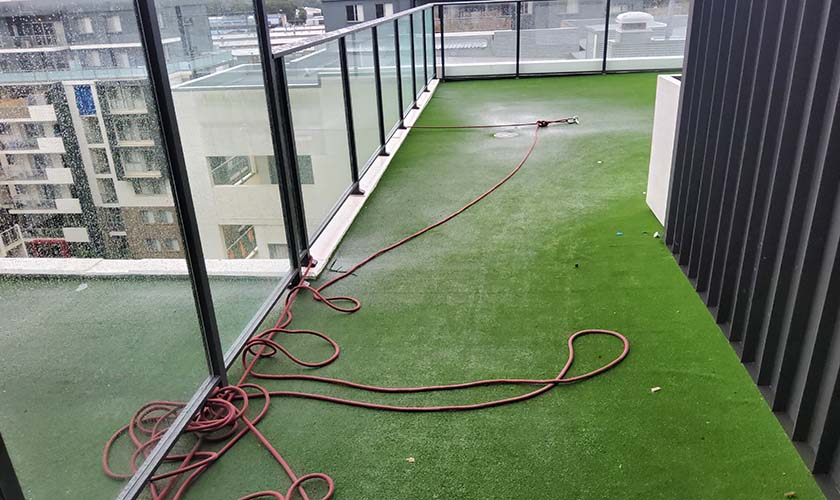
Safety information
Work involving industrial rope access should only be undertaken when other means of accessing the work area are not reasonably practicable, such as scaffolding or an Elevated Work Platform.
When it is necessary to use an industrial rope access system you must implement ‘reasonably practicable’ control measures to manage the risks associated with working at heights.
Prior to connecting to an industrial rope access system ensure:
- work has been planned, including hazard identification and risk assessment of rope access related tasks, and a suitable rope access system is designed
- anchor points have been inspected by a competent person and certified as safe to use, and information is available regarding their safe use, for example, load ratings
- the anchor points are marked with their load rating and the load correlates with the certification
- a visual inspection is conducted of the anchor points and site to ensure a safe access system can be implemented, and to determine what equipment will be needed to provide safe access to, and descent from, the work area
- consideration is given to how post-installation/certification modifications to the site may affect the useability of anchor points, for example, changes to the surface, or additional surfaces around anchor points
- the building façade is inspected for areas that may compromise the rope access equipment, and for materials that could be loosened and fall during the work
- all equipment to be used is inspected by a competent person and is safe to use
- a spotter is on site, has clear sight of the workers, communication means, and clear procedures are established
- emergency rescue procedures are established and clearly communicated to all workers
- all workers are competent in the technique, including emergency procedures, and have been trained in the correct operation of the particular equipment they are using
- exclusion zones are established and enforced that exclude and alert the public that industrial rope access systems are in use below the work area and near any anchorage locations
- the work is planned to account for the expected weather conditions
Industrial rope access systems should include:
- a main working rope and a back-up safety rope, each anchored independently to the other
- safe access to anchor points to set up the rope access system
- a full body or work positioning sit harness with shoulder straps
- descending/ascending devices and back up devices that are suitable for the type of work being undertaken, and appropriate for the size/type of rope and combined weight of the rope access technician and any equipment worn
- descenders that automatically stop the descent if the rope access technician loses control, i.e. lock automatically in the hands-free mode, and preferably should also fail to safe in all modes of operation, for example, stop the descent automatically when gripped too tightly in panic (panic locking)
- preferably, back up devices that require minimal manipulation by the rope access technician, and fail to safe in all modes of operation, for example, prevent or arrest a fall even when gripped in panic
- the correct personal protective equipment (PPE) for the tasks being undertaken, for example, helmets, gloves, hearing protection, goggles or masks
The use of industrial rope access systems is considered high risk construction work if it involves construction work where there is a risk of a person falling more than 2 metres. The Work Health & Safety Regulation 2017 requires that high risk construction work must not be carried out unless a safe work method statement (SWMS) is prepared for the work.
More information
- Managing the risk of falls at the workplace code of practice
- AS/NZS 4488.2 – Industrial rope access systems – Selection, use and maintenance
- IRATA International code of practice for industrial rope access
- AS/NZS 22846.1 Rope access systems Part 1: Fundamental principles for a system of work
- AS/NZS 22846.2 Rope access systems Part 2: Code of practice
Construction garbage chute collapse (17 February 2021)
A 26-year-old casual worker employed by a labour hire company sustained neck injuries when he was pinned underneath a construction garbage chute as it collapsed. The chute, designed for free-flowing material, was filled vertically with soil when it collapsed. The worker had only been on site for a week and a half.
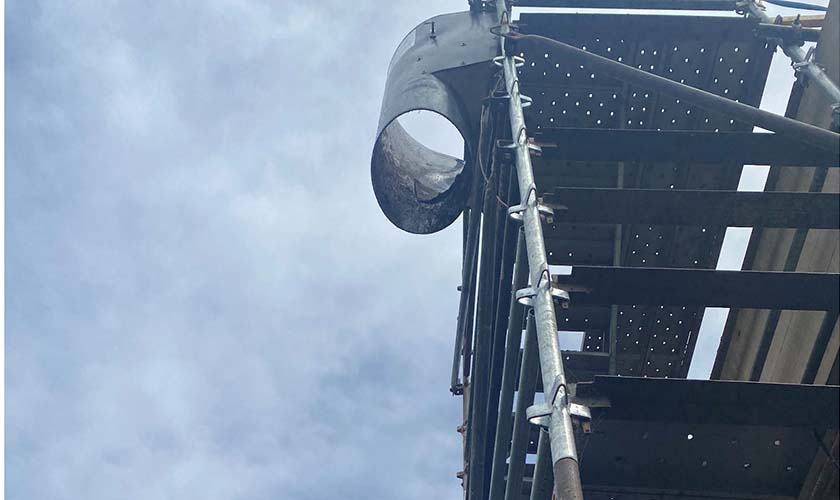
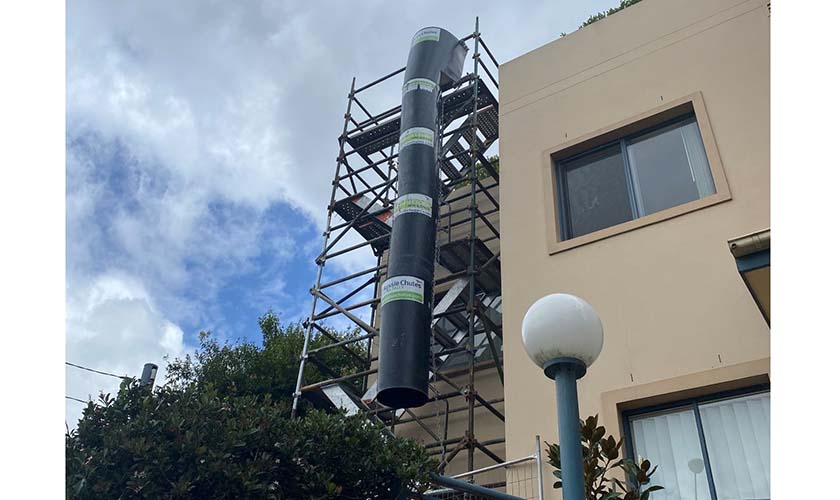
Safety information
Implement ‘reasonably practicable’ control measures to manage the risks associated with using construction garbage chutes.
When planning to install a chute at a workplace, make sure it can be installed, used and dismantled in accordance with the designer’s requirements. Consider:
- the type and weight of materials expected to be moved
- the planned location of the chute, including local weather conditions e.g. exposure to wind
- the means of support required to support the chute and the intended materials and
- any risks that may be introduced by its installation.
Where the designer or manufacturer’s information is not sufficient to manage all associated risks, consult with the designer or manufacturer. Where this is not practical, consult with a competent person.
Installing a chute
When installing a chute on site make sure:
- the chute is installed in accordance with the designer or manufacturer’s instructions, or those of a competent person
- the chute is secured to the scaffold or other supporting structures ensuring any weight placed on the fixtures does not impact overall integrity
- no alterations or changes to design of the chute or its method of support / fastening are made without prior approval from the designer, manufacturer, or competent person
- any joins in the chute are tightly secured to help support the chute against high wind gusts and prevent breakages as large garbage passes through
- a visual inspection of the chute and its fastenings is completed before any work begins
- the chute system is isolated and not used if there is any damage or unusual performance identified, until advice has been received from a competent person on how to manage the risks.
Using the chute
When using the chute on site make sure:
- you provide clear instructions for what can, and what cannot, be placed in the chute and ensure this is communicated and understood by all workers onsite
- additional measures are put in place when using wet materials or large articles that can cause blockages and/or overloading (e.g. spotters that confirm the movement of the material/articles)
- you immediately stop using the chute system if it becomes blocked or overloaded
- any material put into the chute is not heavier than the weight rating of the chute
- guardrails are in place to protect any opening in the chute to prevent workers falling into the chute
- a perimeter is enforced around the landing spot at the bottom of the chute to prevent injuries from falling garbage or debris – consider barricades, guardrails and warning signs
- the top of the chute is covered to prevent falls when not in use.
At risk workers
If you have at risk workers, such as labour hire, CALD, migrant or young workers on your site, make sure:
- they have met the supervisor
- someone suitably skilled inducts them onto the site
- they are told about any places they should not go, and why
- someone suitably skilled shows them how to do the job and use any equipment or machinery required
- they understand any instructions provided – language and literacy barriers need to be considered
- they are supplied with any required safety equipment and know how to use it correctly
- they understand what to do in an emergency, including where any evacuation points are located and who to contact if required
- they are encouraged to raise safety concerns and understand who they should speak to about their concerns.
Download a PDF of this Incident Information Release - Construction garbage chute collapse (PDF 244kb)
More information
- Code of Practice – Construction work (PDF 1MB)
- Code of Practice - Managing the risk of falls in housing construction (PDF 2.2MB)
- Code of Practice – How to manage work health and safety risks (PDF 555kb)
- At risk workers information page
- Induction of labour hire workers for host employers guide
- SafeWork NSW translated resources hub
Young worker falls through penetration (1 February 2021)
A 19-year-old labour hire worker suffered serious injuries after falling more than 12 metres through an open penetration at a Shellharbour construction site. The worker was drilling holes into Dincell wall panels in the lift shaft on Level 2 when he fell through the open penetration to the concrete lower ground floor.
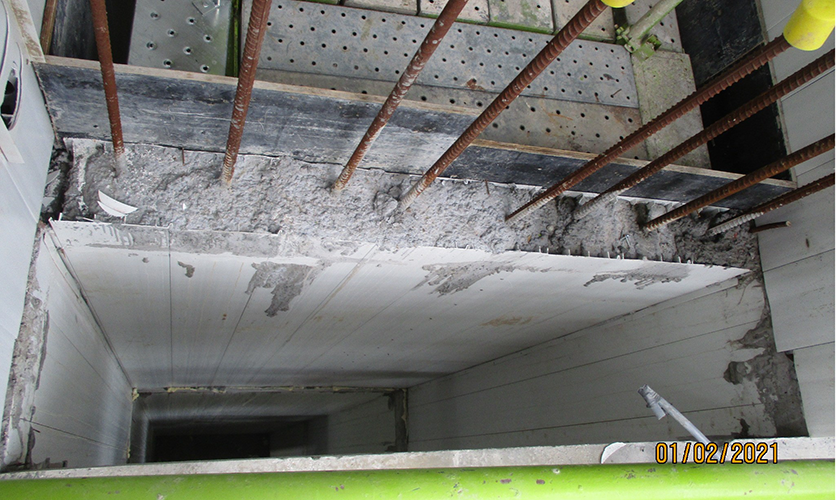
Safety information
Implement ‘reasonably practicable’ control measures to manage the risks associated with falls through penetrations while completing formwork and other construction. Make sure you:
- install edge protection or cover any penetrations that will be exposed during the stripping/dismantling process, such as:
- leading or perimeter edge protection – handrails should comply with AS 1657, or
- fit-for-purpose penetration covers that withstand the load of workers and materials. Ensure they are secured in position and are clearly identified so they are not mistaken for construction material
- include cast-in-mesh as a back-up system to protect penetrations in concrete slabs. They should be 50mm x 50mm or smaller mesh size and made of material capable of withstanding potential loads
- ensure workers always use a suitable work platform for the task, such as scaffolds, elevated work platform, boom or scissor lift where possible. Workers must be trained to use the work platform or scaffold
- provide a safe way to access and exit the work area
- prepare a safe work method statement for all high-risk construction work
- have an emergency plan in place and ensure it has been adequately explained to all workers.
SafeWork NSW inspectors regularly blitz construction sites to check compliance and talk with businesses and workers about how to work safely at heights. Use this Construction Falls from Heights Blitz checklist (PDF 504kb) to find out if your construction site is working at heights safely.
More information
Partial building collapse (25 January 2021)
A building in Crows Nest partially collapsed after excavation work had been undertaken at an adjacent construction site. Workers were completing steel fixing and formwork for a capping beam when they observed cracking and evacuated the site before the collapse. Fortunately, no workers or members of the public were injured.
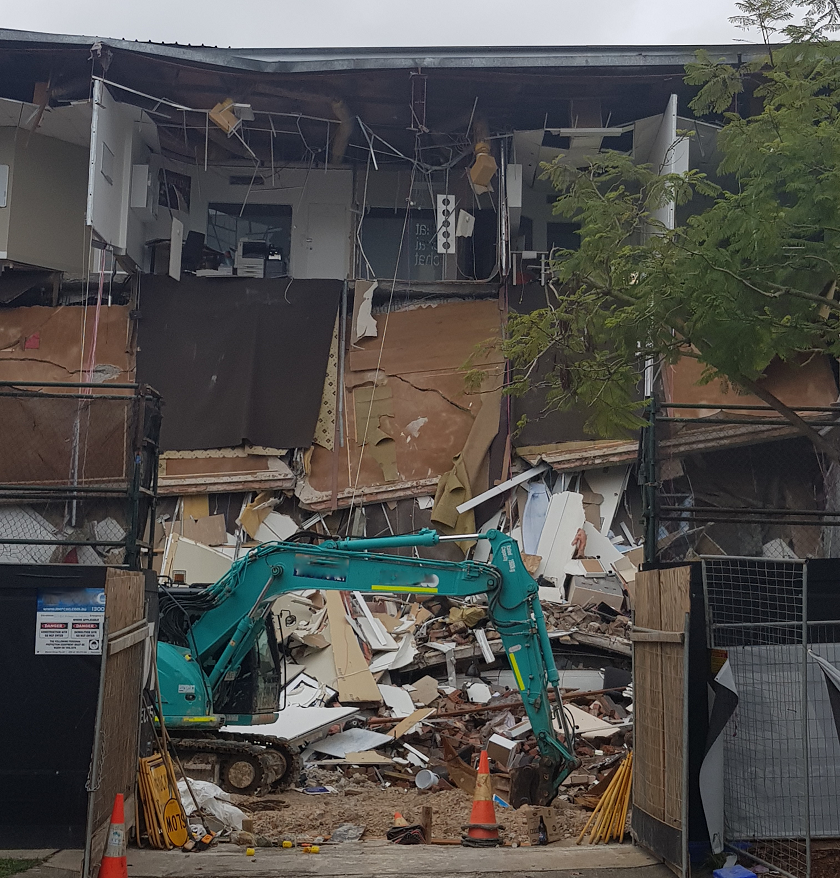
The site of the collapse
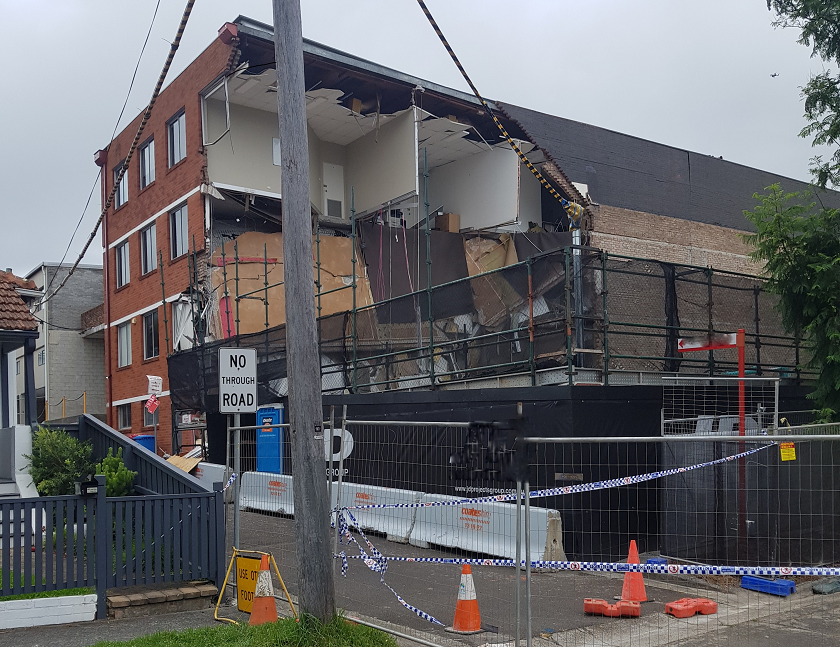
Safety information
Implement ‘reasonably practicable’ control measures to manage the risks associated with unplanned structural collapse before, during and after excavation work.
Before excavation work
Seek engineering advice
- consult with experienced and qualified competent persons such as engineers and specialist excavation contractors regarding all potentially affected structures and the proposed excavation methods, depths, and sequence
- carry out the necessary testing and analysis to determine the soil and groundwater conditions of the site in consultation with a geotechnical engineer
- determine the size, type, and extent of a potentially affected structure’s foundations by obtaining all relevant information and carrying out the necessary inspections and testing in consultation with a structural engineer
- obtain written advice from competent persons regarding any temporary or permanent control measures required to adequately support all potentially affected structures, their foundations, and excavated faces. For example, structural supports to adjacent foundations or structures; designs for benching, battering, shoring, piling and/or earth anchors, limitations to excavation depths or distances from structures, limitations to de-watering, limitations to excavation methods or sequencing
- carry out detailed inspections of any potentially affected structure and record the results in a dilapidation report to be shared with all relevant parties
- develop a monitoring plan for all potentially affected structures which may include implementing survey markers and/or vibration monitoring devices.
Plan your work
- incorporate all ‘hold-points’ into your construction program as required by competent persons
- consider the type of plant being used, including the size, type position and reach to minimise the risk of plant colliding with existing structures and overhead powerlines
- establish exclusion zones to protect workers from unplanned structural collapses
- ensure safe access and working areas
- have designated areas for the storage of excavated, demolition or construction materials.
During excavation work
- ensure the adjacent building’s foundations are not undermined
- ensure any requirements identified by the structural or geotechnical engineers are in place
- continue to consult with experienced and qualified professionals at critical stages of the excavation work and following unplanned events, e.g. heavy rainfall. Do not proceed beyond pre-determined ‘hold-points’ without written confirmation from the relevant party.
- ensure all workers carrying out the excavation are competent (e.g. check qualifications, experience, and any required licences)
- provide clear instructions to site workers and visitors including any updates as required
- ensure the work is supervised by a competent person and in accordance with the planned methods and sequencing
- if issues arise, stop, take action to ensure everyone is safe, and consult with all parties about how to rectify the issues.
More information
- Excavation work code of practice (PDF 4MB)
- Demolition work code of practice - Safe Work Australia (PDF 1.3MB)
Incident animation - building collapse
This animation profiles a serious incident that occurred when a building collapsed during excavation of an adjacent construction site. The animation highlights what went wrong and what you can do to stay safe when doing this type of work.
Workers engulfed in chemical fire (2 December 2020)
A worker and an apprentice were waterproofing a laundry in Seaforth when it appears vapours from an adhesive and solvent ignited. The small room they were working in was engulfed in a fire ball, resulting in burns to 55% of one worker’s body, and 45% of the other’s body. Both workers were transported to Royal North Shore Hospital.
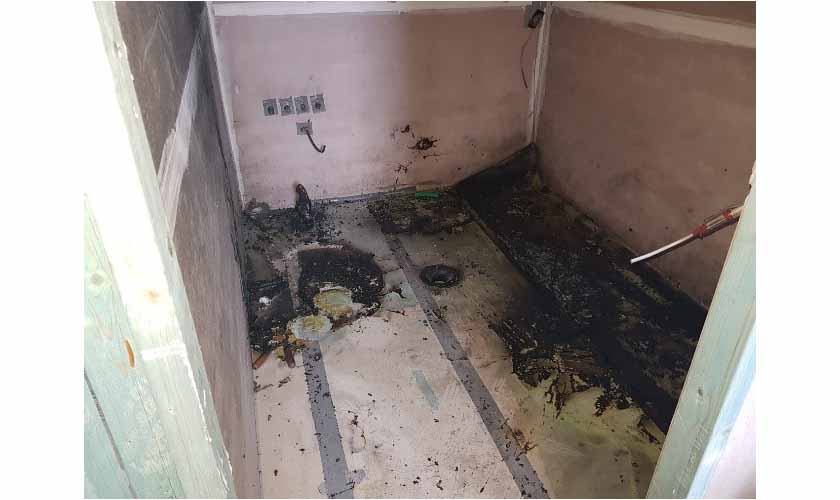
Safety information
Consider ‘reasonably practicable’ control measures to manage the risks associated when working with chemicals.
You must:
- Remove all ignition sources such as heat welders and heat guns. Assess the distance of possible ignition sources from the hazardous area, considering ventilation and minimum 3 metre distances. Make sure flammable chemicals are stored in a cool, well ventilated area, away from heat and keep containers closed when not in use
- Make sure workers have access to safety data sheets and adhere to instructions on labels
- Make sure emergency preparedness on site such as suitable extinguishers and access to running water
- Make sure personal protective equipment is worn as per the safety data sheet for the product
- Make sure flammable chemicals are used in a well ventilated area to minimise the risk of a hazardous atmosphere developing
- Consider the use of mechanical ventilation that is specifically rated for hazardous areas
More information
View the latest incident information releases at safework.nsw.gov.au
Fall into void (19 November 2020)
A worker has fallen approximately 8m into a lift shaft while working on the refurbishment of a building in Sydney. The worker was removing timber rafters from a roof frame when he fell and sustained serious injuries.
This is the twelfth incident information release SafeWork NSW has published this year relating to falls from heights in the construction industry. Falls from heights are the biggest killer on NSW construction sites.
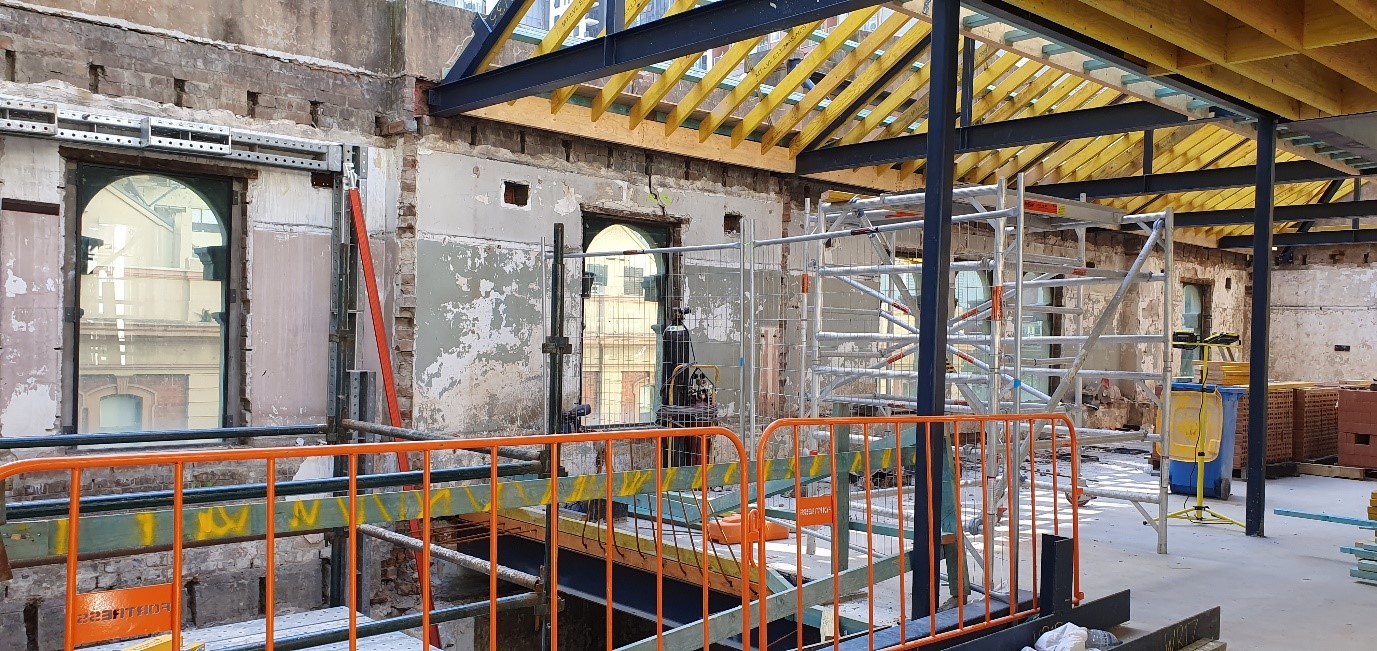
Safety information
Consider ‘reasonably practicable’ control measures to manage the risks associated with working at heights.
Consultation and coordination between a principal contractor and sub contractors on site is essential to ensure any task being undertaken is done so in a safe manner and does not impact others around you. Businesses cannot delegate their work health and safety duties to someone else.
Make sure:
- workers always use a suitable work platform for the task, such as scaffolds, elevated work platform, boom or scissor lift
- workers are trained how to use the suitable work platform or scaffold
- workers are provided with a safe way to access and exit the work area
- you prepare a safe work method statement for all high-risk construction work
- you have a plan in place in case of an emergency.
SafeWork NSW inspectors regularly blitz construction sites to check compliance and talk with businesses and workers about how to work safely at heights. Use this checklist (PDF 504kb) to find out if your construction site is working at heights safely.
More information
Scaffold standard breaks glass atrium causing worker to fall (12 November 2020)
A 32 year old worker fell approximately 4m after the glass atrium roof he was standing on smashed. Scaffolding immediately above the glass atrium roof was being dismantled and a scaffold standard fell onto and smashed the glass panel the worker was standing on. The worker suffered pelvic and limb injuries, concussion, severe cuts and bruising in the fall. A courier walking through the foyer of the building at the time also suffered minor injuries as a result of the incident.
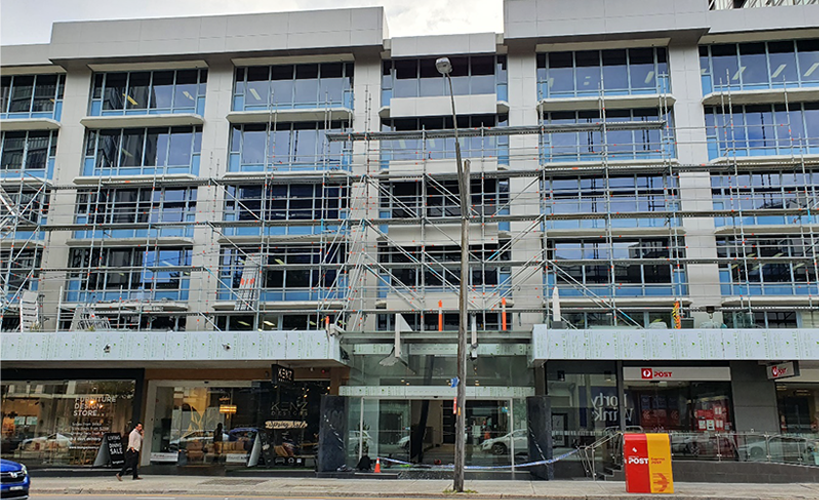
Safety information
Reasonably practicable control measures must be implemented to manage the risks associated with dismantling scaffold and working at heights. You must make sure:
- workers must hold the correct High Risk Work Licence when dismantling scaffolding
- workers are provided with an adequate Safe Work Method Statement (SWMS) before starting any high-risk construction work, which should be kept on-site until the scaffold is dismantled
- any work undertaken at the workplace is done in accordance with the SWMS provided
- principal contractors have systems in place to ensure proper planning and sequencing of trades so that the scaffold remains structurally safe and compliant throughout the build, including ensuring components are stacked appropriately through the dismantling process
- exclusion zones are established so that only workers involved in dismantling process can access the area
- consideration is given to damage that may occur from falling objects and controls are implemented to minimise this risk, including those that may impact areas outside of the workplace and other persons
- new workers to the workplace are provided with adequate information and supervision to manage health and safety, such as inductions
- work is undertaken from secure surfaces/platforms that are specifically designed to support the weight of persons and/or construction materials.
Scaff Safe 2020
SafeWork NSW continues to target scaffold safety on construction sites. Inspectors are attending worksites and talking with employers and workers to ensure compliance. Inspectors are also working with scaffold suppliers and installers to ensure scaffolds are built to standard and are safe.
On-the-spot fines of $720 for individuals and $3,600 for employers can be issued to those who place workers lives at risk from falls from heights, or for undertaking scaffolding work without a high risk work licence.
More information
- Safe Work Australia: Scaffolds and scaffolding work general guide
- Construction falls from heights safety checklist (PDF 503kb)
- Guidance material on falling objects
- AS\NZS 4576-1995 Guidelines for scaffolding
Fall through formwork infill panel (27 October 2020)
A 40-year-old steel worker suffered a fractured leg and ankle injury after falling approximately 2.4 metres through a formwork deck infill panel that gave way on a construction site in Newcastle.
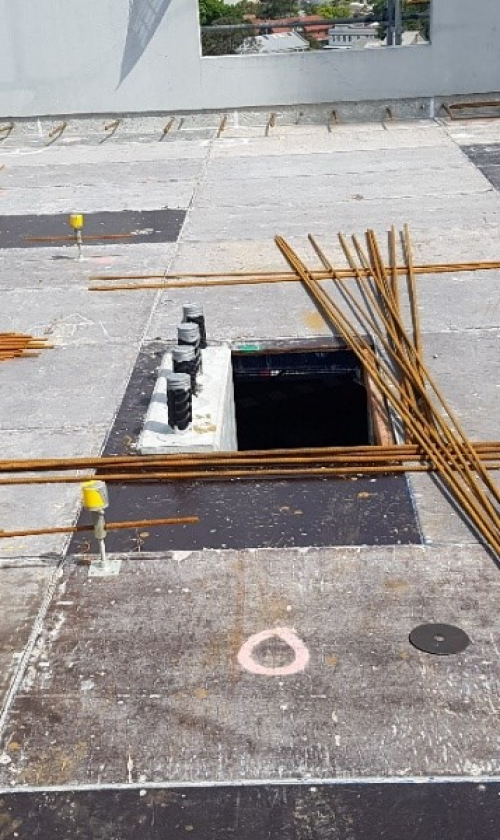
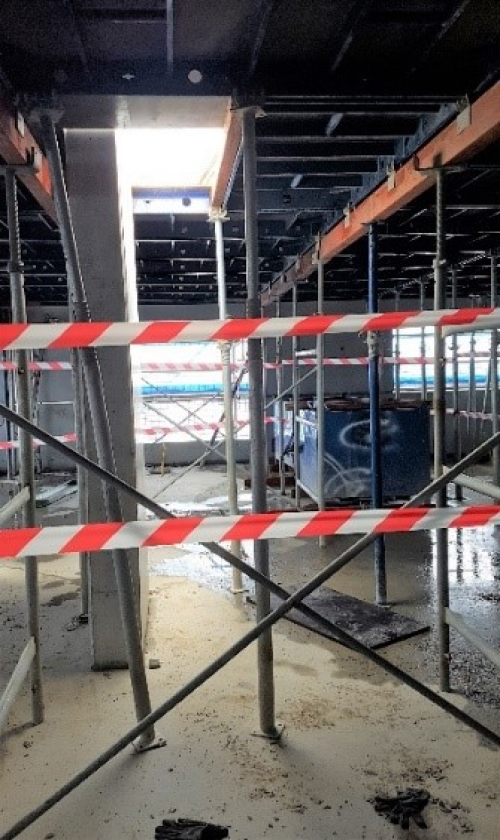
The location where the incident occurred.
Safety information
Implement ‘reasonably practicable’ control measures to manage the risks associated with infill panel in formwork.
You must ensure:
- access to the area is prevented, or where an infill panel is used, the panel and supporting components such as props, frames, bearers and joists are designed and installed to withstand pedestrian traffic
- the design of formwork and infill panels is developed by a competent person
- supporting falsework, props or components are protected and secured to prevent unauthorised alterations and accidental dislodgement
- components used to support infill panels are incorporated into the design and installed in accordance with the manufacturer’s instructions or the instructions of a competent person
- visual inspections of the infill panel and supporting components are included in all formwork inspections to ensure they remain structurally sound and installed in accordance with their design
Formwork inspections should be undertaken:
- routinely as the formwork is being constructed and while workers can access the area
- prior to loading
- periodically following loading
Inspections should also occur following unplanned events (e.g. adverse weather). Inspections should be recorded and include evidence of the condition of the formwork at the time of the inspection (e.g. photographs).
Certification that the formwork complies with AS3610 and the design should only be provided upon completion of the formwork, including the completion of rectification works and re-inspection of any identified issues.
On-the-spot fines of up to $3,600 may be issued for placing workers lives at risk by not protecting them when working at heights.
More information
Mobile elevating platform tip overs - two incidents in 2020
This page references the Work Health and Safety Regulation 2017, which has since been remade as the Work Health and Safety Regulation 2025. Any references to clauses of the 2017 Regulation should now be read as references to the corresponding sections in the 2025 Regulation where applicable.
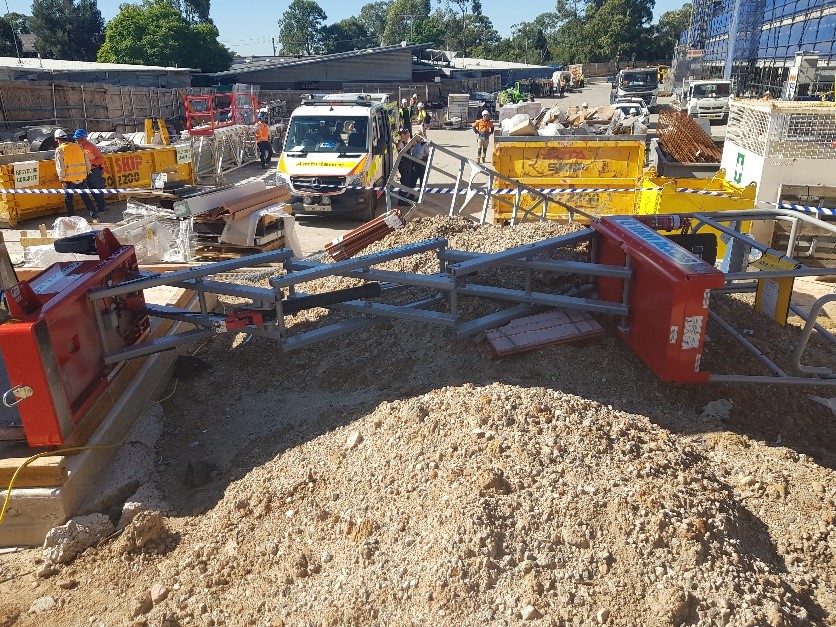
Kingswood
Date of incident: 17 April 2020
A worker on a manually propelled scissor type MEWP, approximately 3 metres high, was using a handheld battery powered screw gun to affix cladding panels to the side of a steel structure. The force applied by the worker in drilling the screws contributed to the MEWP tipping and impacting the ground. The worker sustained bruising to his arm and shoulder as a result of the incident.
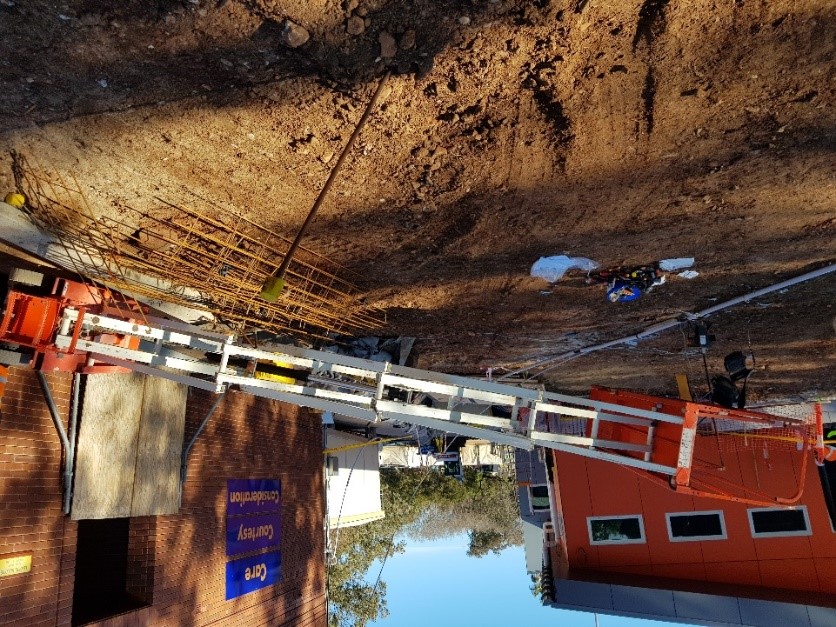
Tamworth
Date of incident: 20 July 2020
An electrician and an apprentice were using a scissor type MEWP to remove 34 metres of conduit, containing an electrical cable, from the side of a two-storey building. The MEWP was elevated to just below 6 metres and driven on a concrete path as the brackets were removed one by one. When the final bracket was removed the workers lifted the conduit over their heads and dropped it to the ground. It fell onto the handrail of the platform. The weight and momentum of the conduit contributed to the MEWP to tipping over with both workers inside. Both workers suffered spinal fractures and one worker a fractured eye socket.
Safety information
If working at height, planning should be undertaken to ensure the safest method and correct equipment is used for the job. The decision to use a specific MEWP should not be based solely on the availability of a MEWP at a workplace.
When selecting the type of MEWP to be used be aware of the limitations regarding terrain, slope, wind loading and manual side force. Some MEWPs are not designed for outdoor use or have different operation limitations for outdoor use. Note a maximum side manual force of 200 N is equivalent to a 20kg force at waist height.
If you have determined that a MEWP is the most suitable method to perform the work at height, you must implement ‘reasonably practicable’ control measures to manage the risks associated with using the MEWP throughout the job. These include:
- choose the right MEWP for the job and only use it for the purpose it was designed
- ensure that information, instruction and training is provided to workers who use MEWPs
- train workers in emergency procedures so occupants can be rescued in the event of an emergency
- hold a high-risk work licence for boom type MEWPs with a boom length over 11 metres
- carry out a prestart (pre-operational) inspection and record the information in the logbook
- ensure the MEWP is suitable for the ground conditions, including gradeability
- do not exceed the safe working load of the platform (some MEWPs have dual ratings to limit the number of people in the platform if used outdoors)
- do not exceed the manual side force (as shown on the compliance plate) when carrying out activities such as drilling, pushing
- do not work in locations where the loss of control of external objects could impact the platform of the MEWP, e.g. tree branches, steelwork
- do not use indoor rated MEWPs outdoors
- make sure outdoor rated MEWPs are not operated outside if wind speed rating exceeds the maximum limits (as shown on the compliance plate)
- wear a safety harness if there is a risk of falling from a height and ensure it is attached to a designated anchor point on the MEWP
Further information
You can also refer to the following guidance materials:
- Work Health and Safety Regulation 2025:
- SafeWork NSW – Code of practice – Managing the risk of plant in the workplace (PDF 2.1MB)
- SafeWork NSW – Code of practice – Managing the risk of falls at workplaces (PDF 4.1MB)
- AS 2550.10-2006 Cranes hoists and winches – Safe use – Mobile elevating work platforms (PDF 597kb)
7 metre fall on construction site - 23 September 2020
A 29-year-old concrete cutter fell approximately 7 metres after temporary edge protection gave way on a construction site at Caringbah. He was taken to hospital with back and pelvic injuries.
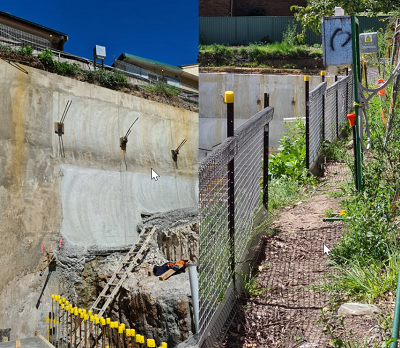
Safety information
Consider ‘reasonably practicable’ control measures to manage the risks associated with falls on construction sites.
You must:
- develop a plan – in consultation with workers and before work begins – for managing the risk of falls on site, including in and around excavations
- make sure excavations, trenches and openings are securely fenced to prevent falls and unauthorised access
- ensure that temporary edge protection has sufficient height and strength
- provide safe access for workers that is clearly defined and free of debris or stored materials
- limit access to excavations and trenches to only those required to work in or near the area
- have adequate site fencing to prevent unauthorised access to the site.
Statistics
Falls from heights are the biggest killer on NSW construction sites. This is the ninth incident information release published by SafeWork NSW this year relating to a serious fall incident.
On-the-spot fines of up to $3,600 may be issued for placing workers lives at risk by not protecting them when working at heights.
More information
Fall from a work platform (14 Aug 2020)
A 43-year-old worker suffered serious head injuries after falling from a work platform while installing ceiling joists at a residential construction site in Bellevue Hill. He was standing on a plank, that at one end was resting on the top of an A frame ladder and the other end resting on scaffolding. The plank was set up to raise the worker high enough to install the roof section.
Safety information
Consider ‘reasonably practicable’ control measures to manage the risks while working at heights on work platforms or scaffolds.
Make sure:
- you always use a suitable work platform for the task, such as scaffolds, elevated work platform, boom or scissor lift
- workers are trained how to use the suitable work platform or scaffold
- workers are provided with a safe way to access and exit the work area
- you prepare a safe work method statement for all high-risk construction work
- you have a plan in place in case of an emergency
When using scaffold, make sure:
- you use a system suitable for the task and compliant to AS/NZS 1576.1:
- Working platforms at least 450mm wide
- Edge protection installed on platforms that are 2m or higher
- Edge protection installed on other platforms where the nature of work prevents worker being fully aware of proximity to platform edge
- scaffolds are erected and dismantled by competent persons in accordance with manufacturer’s instructions, and by persons who hold the appropriate class of high-risk work licence where required
- the scaffold is stable at all times, including during erection, in situ, during and after any alterations, and when dismantling
- people can’t access incomplete scaffolds
Statistics
Falls from heights are the biggest killer on NSW construction sites and this is the eighth incident information release this year published by SafeWork NSW due to a serious fall from height incident. Most serious falls incidents occur from a height of four metres or less.
On-the-spot fines of up to $3,600 may be issued to those placing workers lives at risk by not adequately protecting them when working at heights.
More information
- Scaffold safety checklist
- Working at heights guidance material
- Managing the risks of falls in housing construction – Code of practice
- Managing the risk of falls at workplaces – Code of practice
- Pocket guide to construction safety
View the latest incident information releases at safework.nsw.gov.au
Falls through roofs (4 August 2020)
Since the start of this year, we've been notified of 10 incidents where a worker has fallen through a roof, resulting in either a serious injury or fatality.
Falls from heights continues to be a major cause of fatalities and serious injuries at workplaces across NSW.
Sydney
A 52-year-old subcontractor fell more than three metres onto a concrete pavement at a school in Wahroonga. He was cleaning the roof gutters when he stepped onto polycarbonate roof sheeting and it gave way. He suffered severe head injuries and passed away in hospital.

Wahroonga school
Molong
A 21-year-old apprentice carpenter fell through perspex roof sheeting at a manufacturing plant in Molong, in western NSW. He fell seven metres onto a concrete floor, fracturing his wrist, ribs and pelvis.
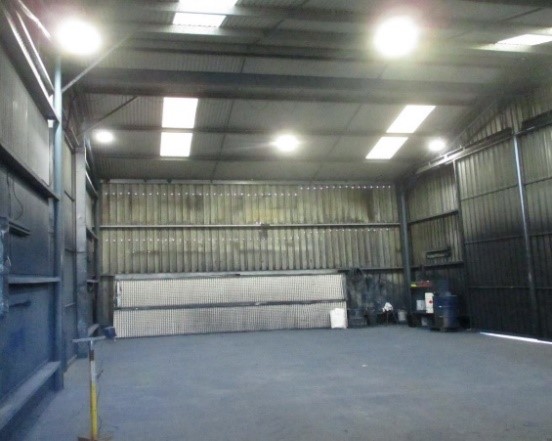
Molong manufacturing plant
Alectown
A 27-year-old roofing contractor fell more than three metres through the roof of a sheering shed at a rural property near Parkes. He was installing solar panels when the alsynite roof sheeting gave way. He fractured his back.
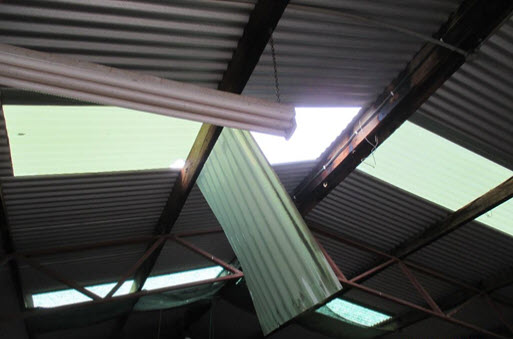
Roof of shearing shed
Safety information
Not all areas on a roof are safe to walk on. Even roof sheeting that claims to be okay to walk on is reliant on correct installation and can become brittle over time. Don’t walk on skylights, or plastic and asbestos roof sheeting, unless assessed as structurally sound by a competent person.
Consider what tasks can be done without accessing the roof. For example, work from underneath using a scaffold or elevated work platform.
If you must access the roof, check its condition, the roofing materials, fixings and safety mesh to determine the safest path.
If sheeting appears brittle, you must manage the risks of falling through the roof.
You must:
- install guardrails around non-trafficable areas, or use a work positioning system
- cover non-trafficable sheeting securely and place warning signs nearby
- work from temporary work platforms (crawling boards) or roof ladders, where appropriate
- install safety mesh
- use an adjustable fall-arrest system, such as a harness, with proper anchor points, and train workers in how to use them
- prepare a site-specific safe work method statement (SWMS) for all high risk construction work
- have plans in place in case of emergency, particularly with respect to the use of fall arrest systems.
More information
Worker crushed between punt and piles (3 July 2020)
A worker was crushed between a punt and piles at a marine construction site at King Street Wharf, Sydney.
While measuring the piles, the worker accidentally knocked the punt controls, propelling it forward, crushing him between the piles and the punt, before he fell into the water. He suffered broken ribs, a broken collar bone and a punctured lung.
NSW Water Police and Australian Maritime Safety Authority also responded to the incident.
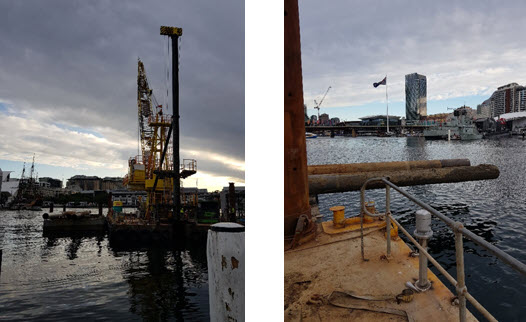
Site of incident
Safety information
Implement ‘reasonably practicable’ control measures to manage the risks associated with working on water.
You must:
- perform the task from land, where practical
- make sure operator controls are properly located or guarded to prevent accidental activation
- consider the conditions, such as weather and swell, and choose a safer location if necessary
- make sure there is a safe system of work for doing the task on water, and prepare a safe work method statement (SWMS) if the task is considered high risk construction work
- make sure workers are trained in the correct procedures/SWMS
- make sure there are enough workers to do the task safely, such as operating the vessel, acting as spotter when visibility is poor, and helping with emergency rescues
- make sure all plant, equipment, e-stops and lanyards are used and are functioning as per manufacturer’s specifications
- manage the risk of falling overboard - use guardrails, harnesses, safety lines and life-jackets.
More information
- Code of practice for managing the risk of plant in the workplace
- National Standard for Commercial Vessels – Part C – Section 1 Arrangement, accommodation and personal safety
- AMSA Guidance Notice – Unpowered Barges
- AMSA National Law – Exemption 41 (unpowered barges)
- Construction safe work method statement
Fatal fall through pergola (15 May 2020)
This section references the Work Health and Safety Regulation 2017, which has since been remade as the Work Health and Safety Regulation 2025. Any references to clauses of the 2017 Regulation should now be read as references to the corresponding sections in the 2025 Regulation where applicable.
Date of incident: 15 May 2020
A 51-year-old labourer suffered serious head injuries after falling nearly three metres onto a tiled surface at a house in Eastwood. He stepped off the roof onto plastic covering a pergola and it gave way. He later died in hospital.
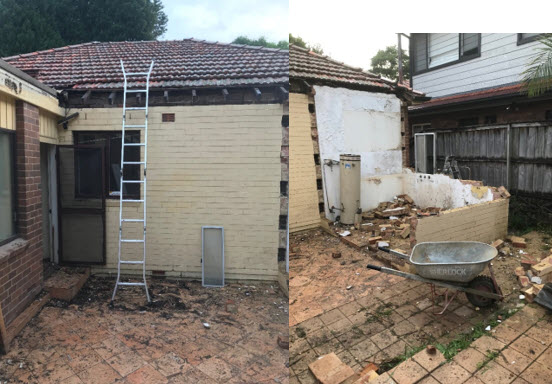
Safety information
Falls from heights is the number one killer on construction sites in NSW and every year there are dozens of serious incidents. Many of these incidents involve a ladder being used incorrectly or stepping on an unstable surface.
Consider ‘reasonably practicable’ control measures to manage the risks associated with working on ladders and roofs.
Before starting work on a roof, inspect the condition of skylights, plastic sheeting and asbestos cement sheeting, wire mesh and anchor points. To determine if surfaces are safe to walk on, check the material, how it’s fixed and whether it’s brittle.
Make sure you:
- plan the work to avoid walking on brittle material
- work from a solid construction to avoid standing on the roof - use temporary work platforms, such as crawling boards and ladders
- install barriers, such as guardrails, covers and warning signs
- install safety mesh
- use a scaffold or scissor/boom lift
- use an adjustable fall-arrest system, such as a harness, with proper anchor points – train workers how to use them
When working in situations where a ladder may be required, you must:
- consider using an elevated work platform or scaffold, rather than a ladder
- choose the right ladder for the job. It should meet Australian standards and the load requirements of the job. An A-frame or extension ladder may be appropriate for some tasks, but a platform ladder is safer
- inspect the ladder for damage before using
- only use a ladder if you’re physically capable of doing so safely
- set-up a ladder on a flat, stable surface, or use leg levellers, anti-slip gutter guards and stabilisers
- maintain three points of contact when climbing or descending the ladder - two hands and one foot, or two feet and one hand
- only take small items up or down a ladder – never large or heavy items such as building materials. Wear a toolbelt to enable you to maintain three points of contact
- never lean or reach away from the ladder
- not exceed the working load limit on the ladder
- only use A-frame ladders locked in fully open position
- secure your extension ladder at the top, bottom or both - or have someone hold it
- make sure the ladder is one metre past the stepping point
- extension ladders are angled at a ratio of 1:4 - position the base of the ladder one metre away from the structure for every four metres of height
- not climb or work past the second-last rung of a ladder, and never straddle the top of an A-frame ladder
- make sure fall prevention is used at the stepping off point of the work area
- remain facing the ladder and climb to the bottom rung before stepping off.
Businesses are reminded of their duty to identify hazards and manage risks to health and safety in accordance with the provisions of the Work Health and Safety Act 2011 and Work Health and Safety Regulation 2017.
More information
Telehandler overturned - 22 April 2020
A worker suffered cuts and bruises when his telehandler overturned as it was lifting a 650kg piling cage, while located across a sloping driveway.
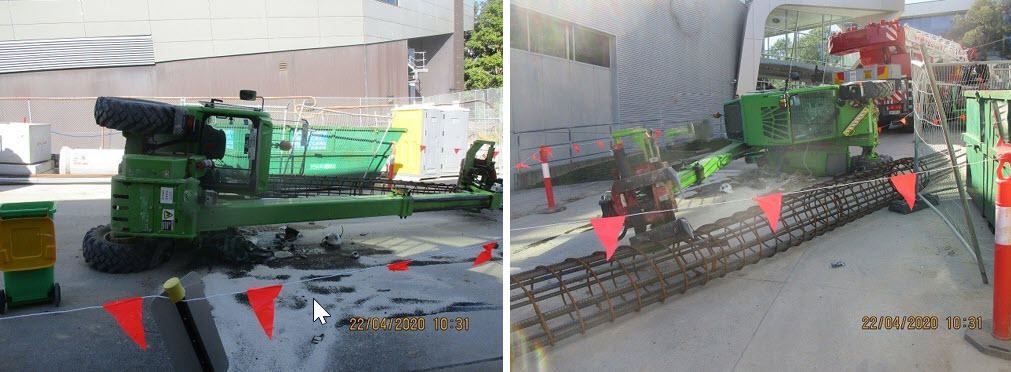
Resting place of telehandler
Safety information
Telehandlers are generally used with fork tynes. If allowed by the manufacturer, other attachments, such as bale grabs, buckets, work platforms, lifting hooks and crane jibs can be used.
The correct attachment must be used for the task. For example, tynes must not be used to freely suspend a load.
When travelling with a load, the load should be as close to the ground as possible, and the boom retracted.
A freely suspended load affects the stability of a telehandler, due to the raised boom and swinging load. Instability is even greater when working on a slope as the load swings further from the point it is connected to the telehandler.
When lifting a load with a telehandler, make sure:
- you follow the telehandler operating instructions
- the telehandler has the appropriate attachments for the task
- you know the maximum slope for operating the telehandler, and its limitations
- you assess the slope of the ground
- you don’t travel across the slope, unless within the limits of the telehandler
- you use ground support, if required, to maintain stability
- you use percentage deration charts when working on a slope
- you use exclusion zones.
Operator licences
If the telehandler has a capacity greater than three tonne and is configured as a crane, you must have a high-risk work licence – non slewing crane (CN class) or a slewing mobile crane licence.
If the telehandler has a capacity less than three tonne, you must be trained and competent in operating the telehandler and attachments.
To use a slewing telehandler, with a slewing limit greater than five degrees, you must have a high-risk crane licence – C0, C1, C2 or C6.
If the telehandler is used as a work platform, with a boom length of 11 metres or more, you must have a high-risk work licence – elevated work platform (WP class). If the boom is less than 11 metres, you must be trained and competent in operating the telehandler and attachments.
More information
- Guidance note: Telehandlers – Design and licensing
- Code of practice for managing the risk of plant in the workplace
- Working with or around plant safety alert
- Code of practice for moving plant on construction sites
- AS 2550.19 Cranes, hoists and winches - Safe use Part 19 Telescopic handlers
Fall through formwork void (29 April 2020)
Date of incident: 29 April 2020
At a construction site in Belrose, a 36-year old dogman fell through an open void in a deck as he was instructing a crane operator to lower materials. He fell three metres, impaling his left shoulder on a steel bar.
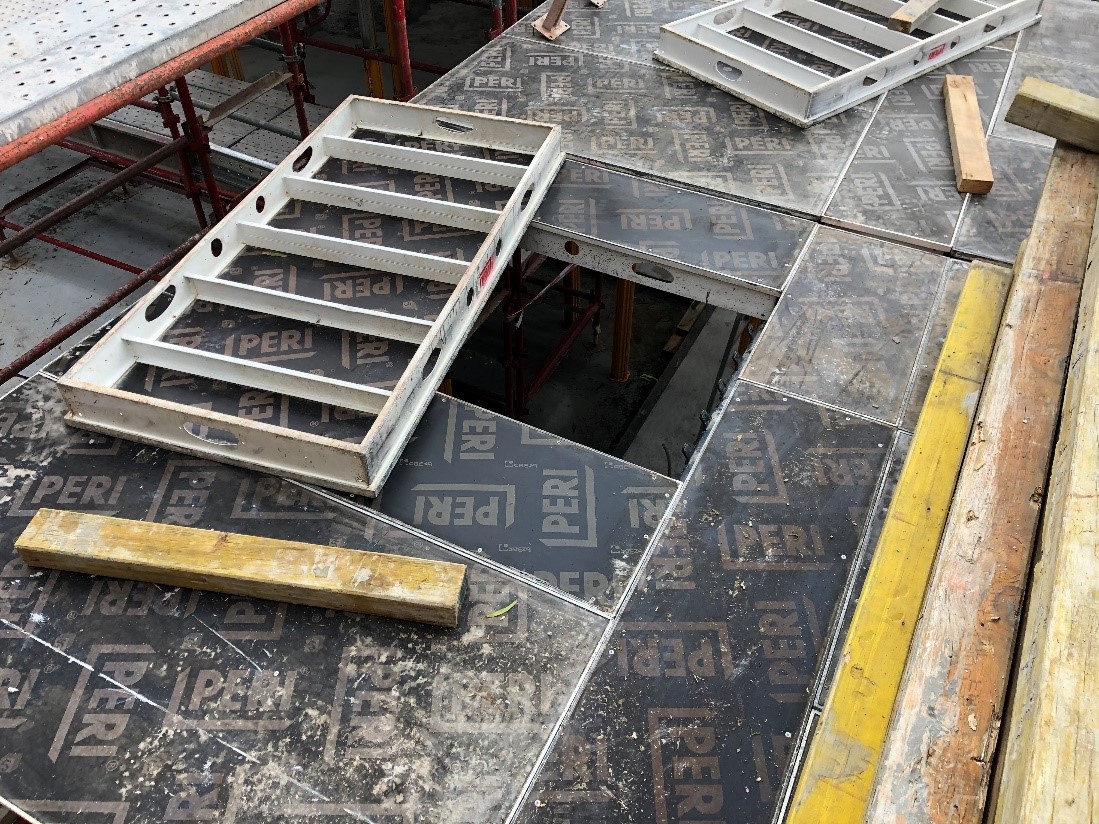
The void the worker fell through
Safety information
Falling from a height is the number one cause of death and permanent disability in the formwork industry. Most incidents involve open voids on formwork decks and unprotected edges.
Consider ‘reasonably practicable’ control measures to manage the risks associated with falls from formwork decks and through open voids.
Make sure:
- all voids have edge protection or are covered, and that covers are securely fixed in place and marked ‘Danger: penetration below’
- you install guardrails and other edge protection, such as perimeter scaffolds and formwork screens, into pre-assembled systems before they’re lifted into position
- leading edges are minimal
- you work below the formwork deck, using temporary work platforms, and limit the distance between joists to 450 mm
- catch platforms are used when other edge protection is not reasonably practicable
- guardrails comply with Australian standards
- access to incomplete decks is prevented.
More information
- Formwork
- Working at heights
- Code of practice for managing the risk of falls at workplaces
- Code of practice for construction
- AS 1657: Fixed platforms, stairways and ladders
Fall down ventilation duct (23 Mar 2020)
This section references the Work Health and Safety Regulation 2017, which has since been remade as the Work Health and Safety Regulation 2025. Any references to clauses of the 2017 Regulation should now be read as references to the corresponding sections in the 2025 Regulation where applicable.
Date of incident: 23 March 2020
A 24 year old worker suffered broken hips, a dislocated shoulder and a broken jaw when he fell more than 20 metres down a ventilation duct. Falls from heights is the number one killer on NSW construction sites.
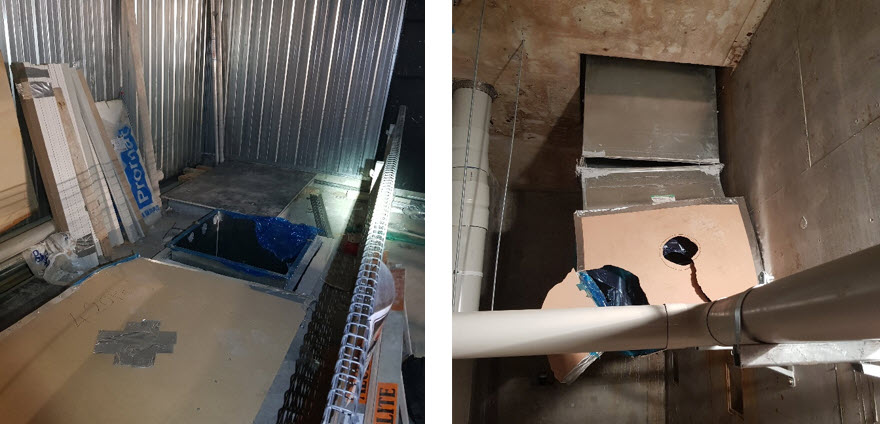
The duct opening (left) and the exit point (right)
The investigation
- SafeWork NSW inspectors responded to the incident.
- SafeWork NSW commenced an investigation to determine the cause and circumstances of the incident.
Safety information
Businesses are reminded of their duty to identify hazards and manage risks to work health and safety in accordance with the provisions of the Work Health and Safety Act 2011 and Work Health and Safety Regulation 2017.
You must consider ‘reasonably practicable’ control measures to manage the risk of falls from heights.
Make sure you:
- establish and highlight ‘no go’ zones around openings and penetrations during construction work
- immediately make safe any opening or penetration after it is formed using edge protection and or covers that are strong enough to withstand the load of a worker and materials, fix them in place, and mark them so they’re not mistaken for construction material.
Further information
Fatal fall in carpark (19 February 2020)
Date of incident: 19 February 2020
An 80-year-old man fell in the carpark of a supermarket in western NSW after appearing to trip on a piece of plywood, lying at the rear of a ute. The man suffered an injury to the left side of his head and died in hospital a week after the fall.
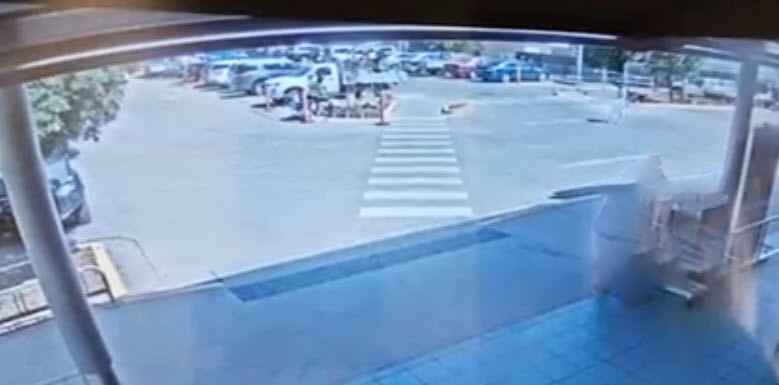
The site just before incident happened. Note plywood at rear of ute.
Safety information
Consider ‘reasonably practicable’ control measures to manage the risks associated with working in public areas.
Make sure you:
- prepare a safe work zone in consultation with the client, principal contractor and subcontractor
- work zones don’t obstruct safe access to public areas
- fence and identify your work area from general public areas
- use appropriate signage
- use alternate pedestrian access, if required, with signs
- materials are contained within your isolated work zone
- good housekeeping practices are maintained in and around the work zone
- serious incidents and near misses are immediately reported to the site controller
- serious incidents are reported to us
- contact ambulance and police, if required.
More information
Fatality: fall through roof (9 January 2020)
This section references the Work Health and Safety Regulation 2017, which has since been remade as the Work Health and Safety Regulation 2025. Any references to clauses of the 2017 Regulation should now be read as references to the corresponding sections in the 2025 Regulation where applicable.
Date of incident: 9 January 2020
A worker died after falling more than two metres through a fibro roof at Wollongong, while attempting to get onto a ladder to get off the roof.
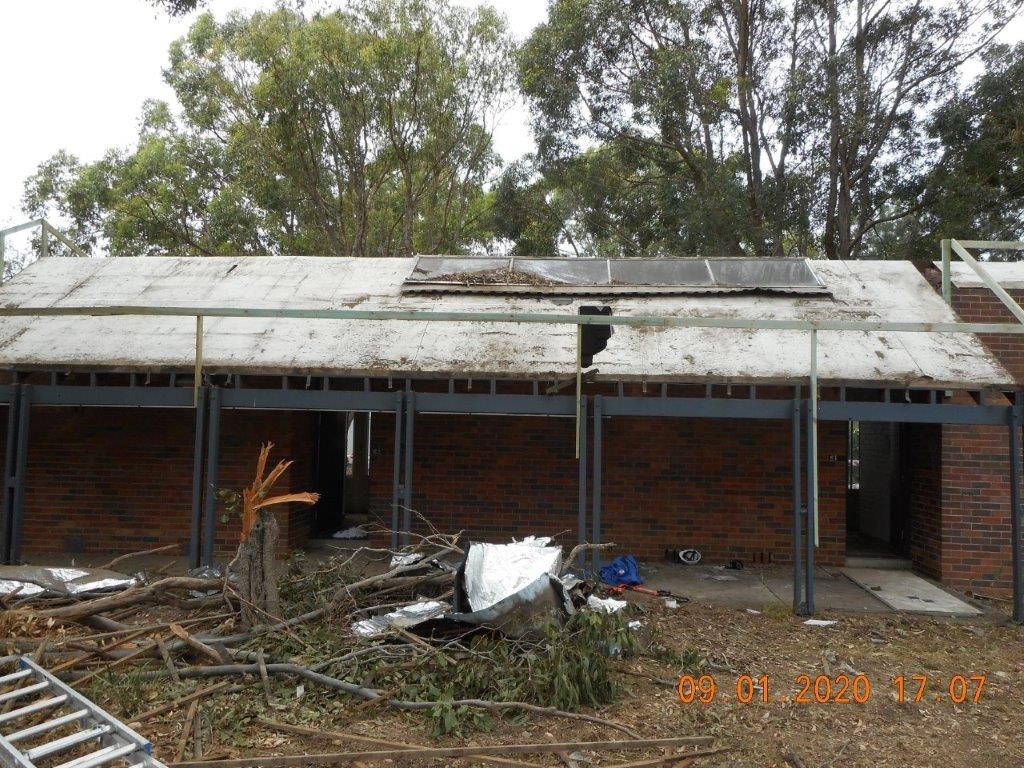
The investigation
- SafeWork NSW inspectors responded to the incident.
- SafeWork NSW commenced an investigation to determine the cause and circumstances of the incident.The investigation
Safety information
Businesses are reminded of their duty to identify hazards and manage risks to health and safety in accordance with the provisions of the Work Health and Safety Act 2011 and Work Health and Safety Regulation 2017.
Consider ‘reasonably practicable’ control measures to manage the risks associated with falls.
Before starting work on a roof, you should inspect the condition of sheeting to determine if it can be walked on, such as a skylight, plastic or asbestos cement. Also, inspect the supporting roofing materials and fixings.
Make sure:
- you plan the work to avoid walking on brittle material
- you use an elevated work platform or boom lift, if possible
- you use temporary work platforms, such as crawling boards,
- you use a fall arrest system, such as a harness, with anchor points – train workers how to use it
- you install safety mesh.
When you use a ladder, make sure:
- it’s at a 1:4 ratio
- it’s tied off at the top (and/or footed) and extends at least 900mm past the landing
- you don’t unclip the lanyard until standing on the ladder
- you review your control measures.
Further information
Solar installation fall from roof (7 January 2020)
This page references the Work Health and Safety Regulation 2017, which has since been remade as the Work Health and Safety Regulation 2025. Any references to clauses of the 2017 Regulation should now be read as references to the corresponding sections in the 2025 Regulation where applicable.
Date of incident: 7 January 2020
An apprentice electrician fractured his pelvis and vertebrae after falling more than three metres from a roof while installing solar panels at a construction site in Parklea.
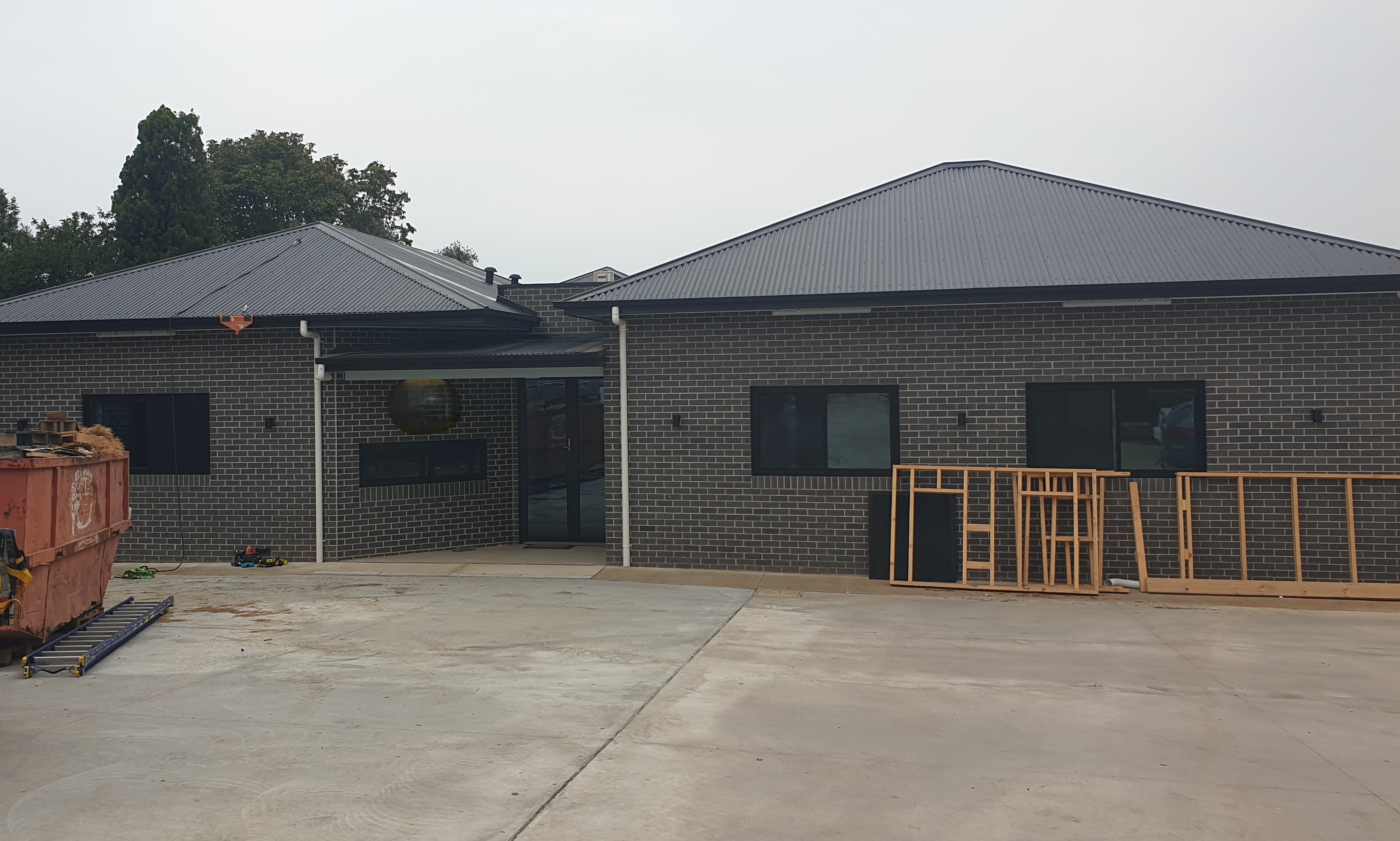
Worker fell from roof off this building.
The investigation
- SafeWork NSW inspectors responded to the incident.
- SafeWork NSW commenced an investigation to determine the cause and circumstances of the incident.The investigation
Safety information
Businesses are reminded of their duty to identify hazards and manage risks to health and safety in accordance with the provisions of the Work Health and Safety Act 2011 and Work Health and Safety Regulation 2017.
Consider ‘reasonably practicable’ control measures to manage the risks associated with falls from roofs. Make sure:
- you work from the ground or on a solid construction, wherever possible
- before accessing the roof, you:
- plan the work and use the right equipment to access the roof
- discuss the work with all workers
- check the condition of the roof and type of roofing material
- the roof is dry and clean
- workers have a safe means of access and egress to work areas
- a fall prevention device – temporary work platform, edge protection, guardrails or scaffolding – is used and workers know how to use them
- a fall-restraint or fall-arrest system – harness, lifeline or industrial safety net – is only used when edge protection or work platforms are not reasonably practicable
- you securely cover and mark, or edge protect, all open penetrations in the roof
- ladders are placed at a ratio of 1:4 to the wall, secured at the top and bottom, and extended at least one metre above the roof edge – and you always maintain three points of contact
- you consider using an elevating work platform or scaffolding instead of a ladder
- your workers always use equipment properly.
More information
- Video safety alert – Solar Installation – risks of falls
- Video safety alert – Solar Installation – electrical risks
- Code of practice for managing the risk of falls at workplaces
- Code of practice for managing the risk of falls in housing construction
- Construction falls from heights safety checklist (for principle contractors and site supervisors)
Fall through plastic skylight panel (6 December 2019)
This page references the Work Health and Safety Regulation 2017, which has since been remade as the Work Health and Safety Regulation 2025. Any references to clauses of the 2017 Regulation should now be read as references to the corresponding sections in the 2025 Regulation where applicable.
Date of incident: 6 December 2019
A 31-year-old man suffered critical injuries when he fell more than 10 meters through a plastic roof-panel at a school in Croydon.
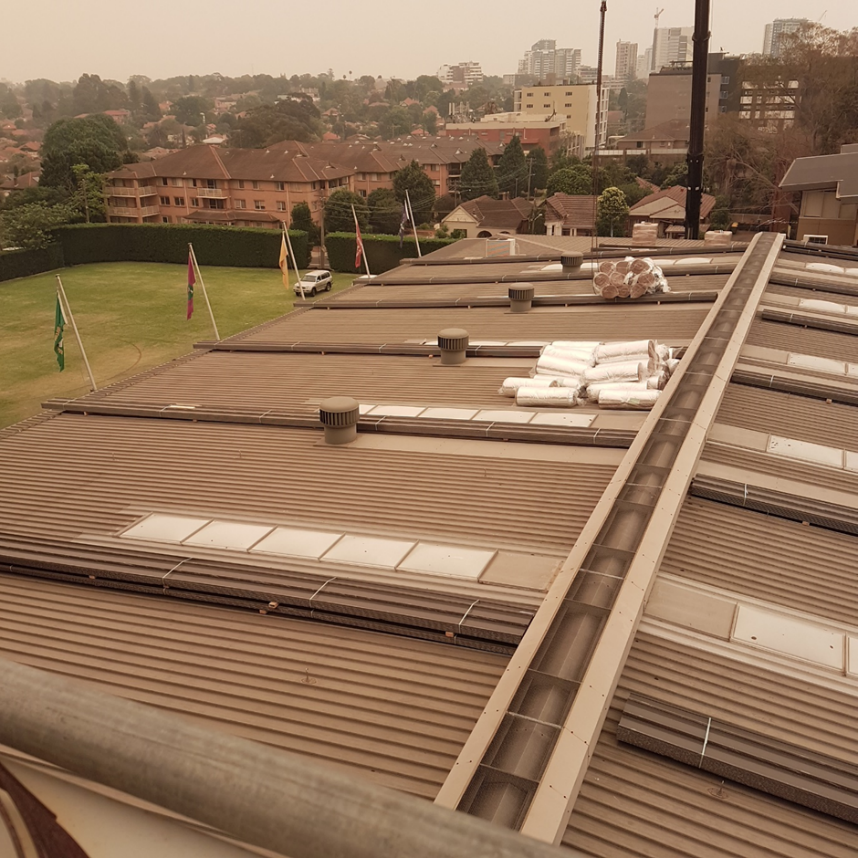
Worker fell from this roof
The investigation
- SafeWork NSW inspectors responded to the incident.
- SafeWork NSW commenced an investigation to determine the cause and circumstances of the incident.The investigation.
Safety information
Businesses are reminded of their duty to identify hazards and manage risks to health and safety in accordance with the provisions of the Work Health and Safety Act 2011 and Work Health and Safety Regulation 2017.
Consider ‘reasonably practicable’ control measures to manage the risk of falls.
Before starting work on a roof, carry out an inspection to determine:
- the condition of sheeting that shouldn’t be walked on, such as a skylight, plastic or asbestos cement sheeting
- the presence and integrity of safety wire mesh
- the suitability of anchor points.
To determine if surfaces are safe to walk on, check the surrounding material, how it’s fixed and whether it’s brittle.
Make sure you:
- plan the work to avoid walking on brittle material
- work from a solid construction to avoid standing on the roof
- use temporary work platforms, such as crawling boards and ladders
- install barriers, such as guardrails, covers, and warning signs
- install safety mesh
- use a scaffold or scissor/boom lift
- use an adjustable fall-arrest system, such as a harness, with proper anchor points – train workers how to use it.
More information
Worker falls in trench (21 October 2019)
Date of incident: 21 October 2019
While putting pickets and bunting around an excavation on a construction site in Marsden Park, a 30-year-old labourer fell three metres into the trench, suffering fractures to his leg.
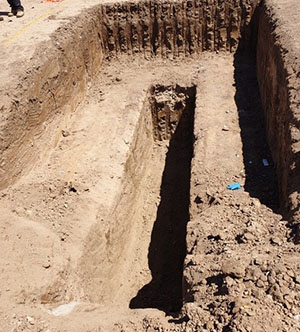
Construction site
The investigation
- SafeWork NSW inspectors responded to the incident.
- SafeWork NSW commenced an investigation to determine the cause and circumstances of the incident.
Safety information
Consider ‘reasonably practicable’ control measures to manage the risks of falling into an excavation at a workplace, including:
- developing a plan – in consultation with your workers and before work begins – on managing the risks of falls in and around excavations
- considering barrier fencing to further minimise accidental encroachment – perimeter barriers should be effective
- considering a suitable location for inspection, and access and egress for emergency situations
- consulting with an engineer to determine distances where shoring, benching and battering should be used – and monitor distances, particularly after rain
- using a landing platform – or scaffold towers for big excavations – to ‘in-fill’
- preparing a safe work method statement when there is a risk of falling more than two metres – and ensure workers are inducted and supervised in its implementation
- backfilling or covering the excavation.
Further information
Pressurised pipe incident (29 November 2019)
This page references the Work Health and Safety Regulation 2017, which has since been remade as the Work Health and Safety Regulation 2025. Any references to clauses of the 2017 Regulation should now be read as references to the corresponding sections in the 2025 Regulation where applicable.
Date of incident: 29 November 2019
Incident overview
A fire system installer suffered fatal head injuries when he was working on a pipe as part of the installation of a fire-fighting system on the 21st floor of a construction site in Darling Harbour.
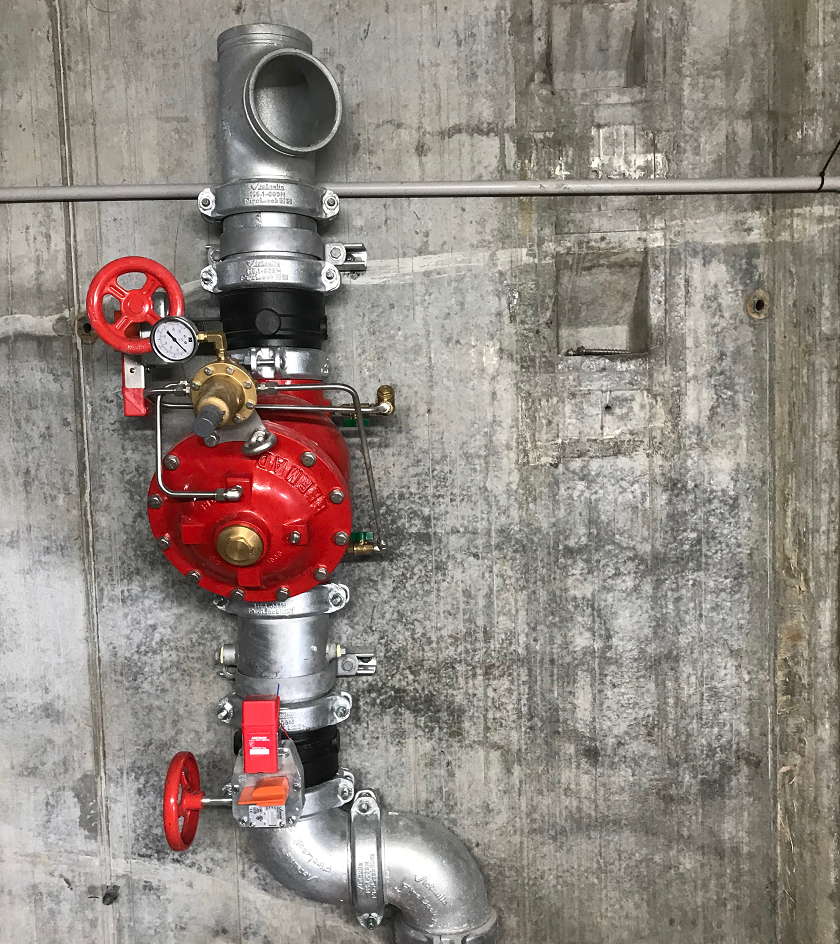
The investigation
SafeWork NSW inspectors responded to the incident.SafeWork NSW commenced an investigation to determine the cause and circumstances of the incident.
Safety information
Businesses are reminded of their duty to identify hazards and manage risks to health and safety in accordance with the provisions of the Work Health and Safety Act 2011 and Work Health and Safety Regulation 2017.
Businesses must implement ‘reasonably practicable’ control measures to manage the risks associated with working on pressurised pipes, including:
- develop safe systems of work and apply isolation procedures that identify, lock out and tag out all energy sources while work or testing is being carried out. Where reasonably practicable provide engineering controls such as guards and removing workers from the area
- ensure end-caps are installed according to the manufacturer's specifications, including tightening fasteners to the specified torque using appropriate tools (eg calibrated manual torque wrench and correct size sockets)
- piping that is temporarily capped is to be fitted with a pressure gauge to identify any potential stored energy. Provide a vent valve or drain to release pressure prior to work commencing
- all inspections of associated pressure equipment are to be carried out by a competent person in accordance with the manufacturer’s recommendations.
Further information
- Managing the risks of plant in the workplace
- AS2118.1:2017 Automatic fire sprinkler systems – General systems
- AS2419.1 Fire hydrant installations – System design, installation and commissioning
Fall from scaffold (11 September 2019)
Date of incident: 11 September 2019
Incident overview
A 48 year old male worker fell approximately 5.7 metres from the top deck of a mobile scaffold he was dismantling on a residential site in Sydney. He sustained serious head injuries and later died as a result of these injuries. This is the eighth incident information release we've published this year that highlights a serious incident involving a fall from heights or scaffold.
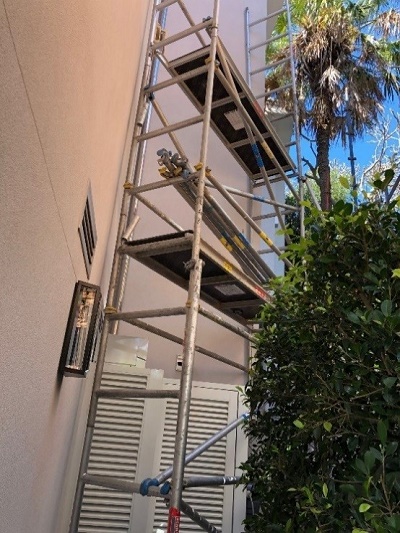
The investigation
- SafeWork NSW inspectors responded to the incident.
- SafeWork NSW commenced an investigation to determine the cause and circumstances of the incident.
Safety information
Each year SafeWork NSW responds to incidents where workers are injured falling from a height. Most of these incidents involve falls from scaffolds, roofs, ladders, through open penetrations and from unprotected edges.
Consider reasonably practicable control measures to manage the risk of falling from a mobile scaffold. Ensure:
- The scaffold is suitable for the task and set up on a firm, level foundation.
- A copy of the manufacturer’s assembly instructions is available and instructions are followed.
- All required components are installed, including guardrails, toeboards, diagonal bracing and internal access.
- The components are inspected before assembly and in good condition.
- The workers assembling the scaffold are competent and hold a high risk work scaffolding licence (if a person or object could fall more than four metres from the scaffold deck).
- Site specific risks are identified, communicated to workers and controlled.
- A safe work method statement is prepared for all high-risk construction work Additionally, for mobile scaffolds that remain on the same work site for more than 30 days:
- Regularly inspect assembled scaffolds to determine whether all components are present, correctly installed and in good condition.
- Implement a process for replacing faulty components and/or removing the scaffold from service if found to be defective.
Further information
Refer to the following guidance materials:
Wall collapse (3 September 2019)
Date of incident: 3 September 2019
While being demolished, a seven-metre brick wall collapsed onto a neighbouring property in the Sydney suburb of Balgowlah. Although no-one was injured, occupants were evacuated and Public Works said the property would need to be demolished because of the damage and unstable structure
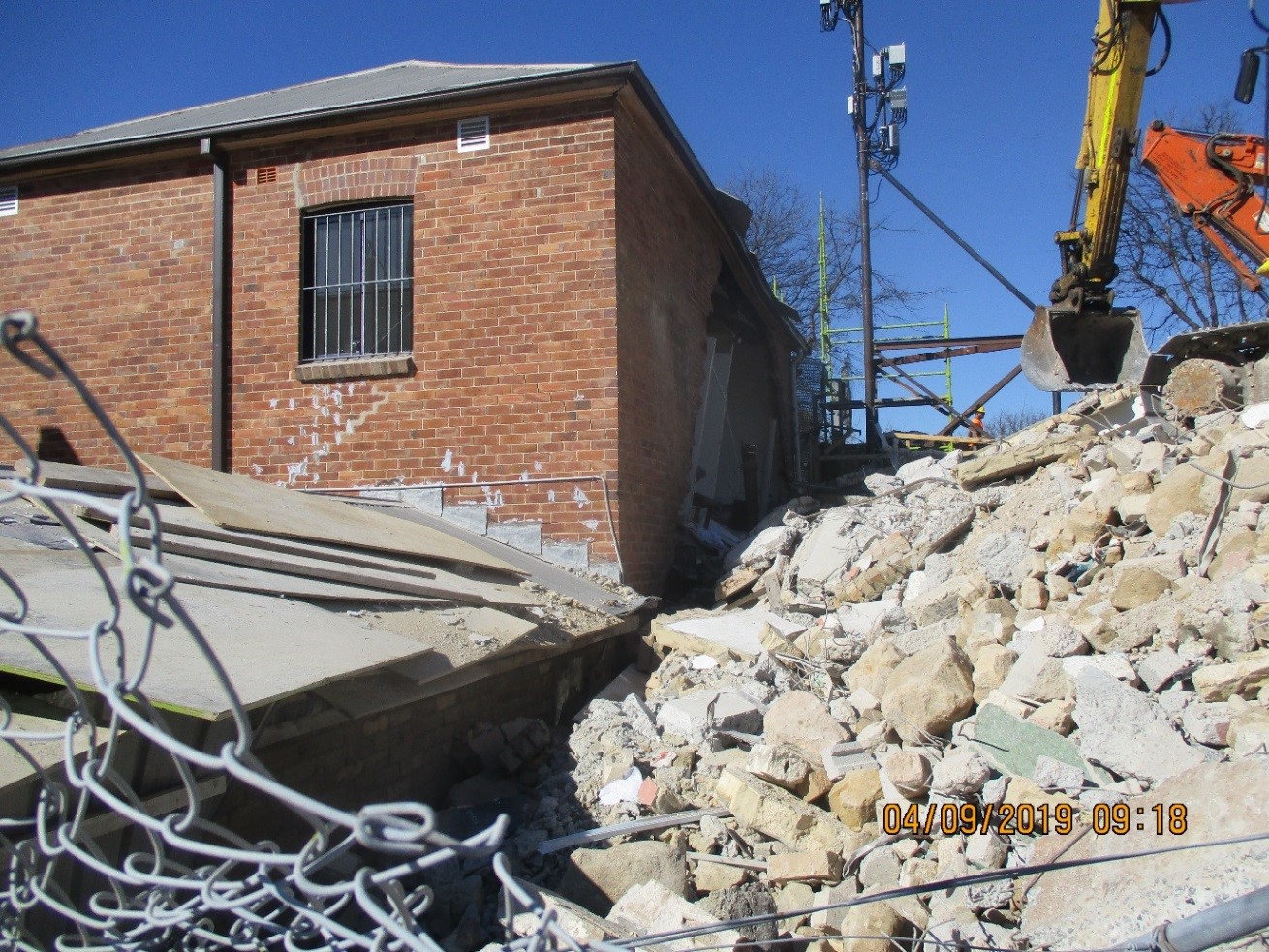
Collapsed wall during demolition
The investigation
- SafeWork NSW inspectors responded to the incident.
- SafeWork NSW commenced an investigation to determine the cause and circumstances of the incident.
Safety information
Consider ‘reasonably practicable’ control measures to manage the risks associated with unplanned structural collapse during demolition and excavation work. Before starting demolition work:
- Collect all structural documentation for the building, such as ‘as-built’ structural drawings, geotechnical reports and designer safety reports.
- Get a competent person to give you an engineering report, if structural or geotechnical information isn’t available, if the structure has been damaged or weakened (by fire or deterioration), or if the demolition method will impose substantial stress on the building.
- Get a competent person to check the building for asbestos, make sure it’s removed and get a clearance certificate before starting to demolish.
- Consult with all relevant competent persons during the planning of the demolition works, considering the structural documentation and/or engineering investigation reports.
When planning the works, consider the:
- effect of the proposed demolition methods and sequence on the stability and integrity of the structure being demolished, and any adjacent or adjoining buildings, at all stages of the demolition
- maximum permissible wind speed for partially demolished structures
- plant to be used for the work, including the size, type, position and reach
- ground conditions and how that may affect the use of plant or other demolition methods
- safe access and safe working areas.
Also:
- Tell all relevant people when ‘hold-points’ are required during the demolition sequence, to allow for the inspection and/or testing by competent persons.
- Make sure workers are competent and have received training and instructions on the demolition methods and sequencing.
When undertaking demolition work:
- Make sure the work is supervised by a competent person and done in accordance with the planned methods and sequence.
- Use braces, propping or shoring, to make sure the building and any nearby structures are safe and structurally stable at all times.
- Use exclusions zones to protect workers from falling objects, unplanned structural collapse and moving plant – even when work has stopped for the day, or if the risk of a structural collapse exists.
- Implement fall protection devices if work is done at heights.
- Don’t work from the top of a wall that is being demolished.
- Make sure adequate controls are in place to minimise exposure to silica dust.
- Wear safety glasses, ear muffs, dust masks, gloves and long-sleeved clothing.
When removing entire wall sections using manual demolition methods that incorporate hand tools, such as jackhammers, sledge hammers, and picks, avoid weakening the wall by:
- starting demolition at the top course of bricks using a hammer and chisel
- removing an entire row before starting the next.
Further information
Fall through ventilation shaft (21 August 2019)
Date of incident: 21 August 2019
Incident overview
A 38-year-old man sustained fatal injuries when he fell through a construction site ventilation shaft in Jordan Springs, in western Sydney. The worker was clearing building material from the roof, when he fell down the shaft.
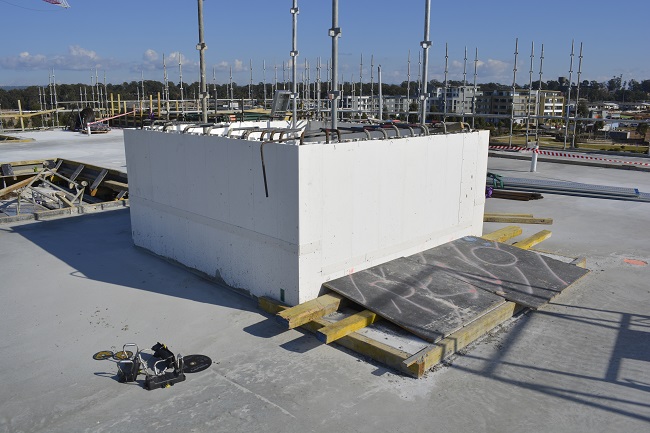
The investigation
- SafeWork NSW inspectors responded to the incident.
- SafeWork NSW commenced an investigation to determine the cause and circumstances of the incident.
Safety information
Falls from heights are a major cause of fatalities and serious injuries in NSW workplaces. You must consider ‘reasonably practicable’ control measures to manage the risk of falls from heights.
You should:
- Give your workers a safe means of access and egress to work areas.
- Identify penetrations and install covers or guardrails
- Use covers that are strong enough to withstand the expected load of workers and materials; fix them in place to prevent accidental removal; and mark them so they’re not mistaken for construction material.
- Guardrails should comply with the AS/NZS 4994 series or AS 1657.
- Identify where penetrations may open once formwork is removed and install covers or guardrails before stripping.
- Put mesh into concrete slabs, as a backup to covers or guardrails.
Further information
- Managing the risk of falls at workplaces code of practice
- Construction work code of practice
- Formwork code of practice
- Formwork and falsework guidance material - SafeWork Australia
- SafeWork pocket guide to construction safety
- Erecting and dismantling formwork - safety videos
- Falls through voids - safety video
- Specific laws about working safely at heights - WHS Regulation 2017 Part 4.4 Falls
Engineer crushed by reversing excavator (19 August 2019)
Date of incident: 19 August 2019
Incident overview
A 32 year old engineer suffered multiple fractures and internal injuries on a road works construction site, when he was crushed between a reversing excavator and a stationary light vehicle. He was transported by ambulance from the Bringelly site to Westmead Hospital where he underwent surgery.
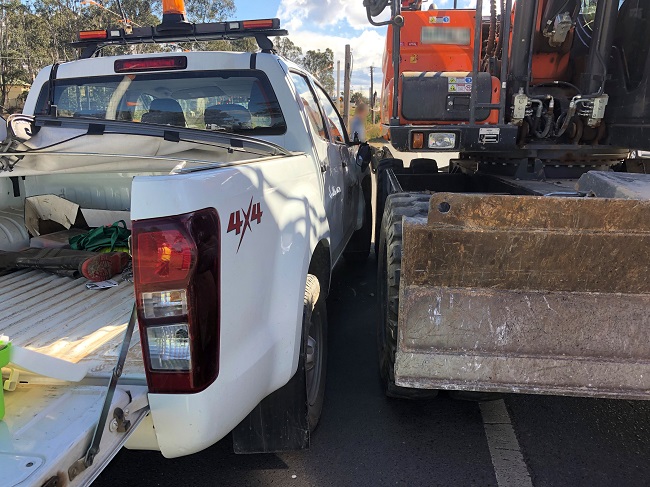
The investigation
- SafeWork NSW inspectors responded to the incident.
- SafeWork NSW commenced an investigation to determine the cause and circumstances of the incident.
Safety information
Consider ‘reasonably practicable’ control measures to manage the risk of mobile plant. Use the following risk management process:
- Identify traffic hazards
- consult with workers and mobile plant operators
- determine where mobile plant and vehicles are in use
- determine potential locations and circumstances where people, plant and vehicles could collide – eg. when getting off plant
- Eliminate the risk, if possible
- If elimination isn’t possible, minimise it:
- use bollards, barriers, safety rails or exclusion zones to separate people from moving plant and vehicles
- use alarms to warn people of moving plant – eg. reversing alarm, flashing lights
- plan the site’s layout to minimise plant and vehicle hazards – eg. have drive-through access to minimise reversing, locate loading areas close to storage areas
- establish traffic flow patterns, develop right of way procedures, use signs and speed limits
- have dedicated traffic controllers
- restrict access
- have mobile phone procedures
- wear high-visibility garments.
- Document procedures in a traffic management plan
- Train, instruct and supervise your workers on the control measures.
Further information
Refer to the following guidance materials for further information:
Roofer fall from height (9 July 2019)
Date of incident: 9 July 2019
Incident overview
A 22 year old male worker was undertaking re-roofing activities at a school auditorium in Hunters Hill when he fell approximately 8.5 metres through a penetration. The penetration had been covered with a sheet of black plastic and weighted down with sand bags, following the removal of a roof mounted air vent.The worker was transported to Royal North Shore Hospital where he was treated for a dislocated hip, broken leg and broken elbow.
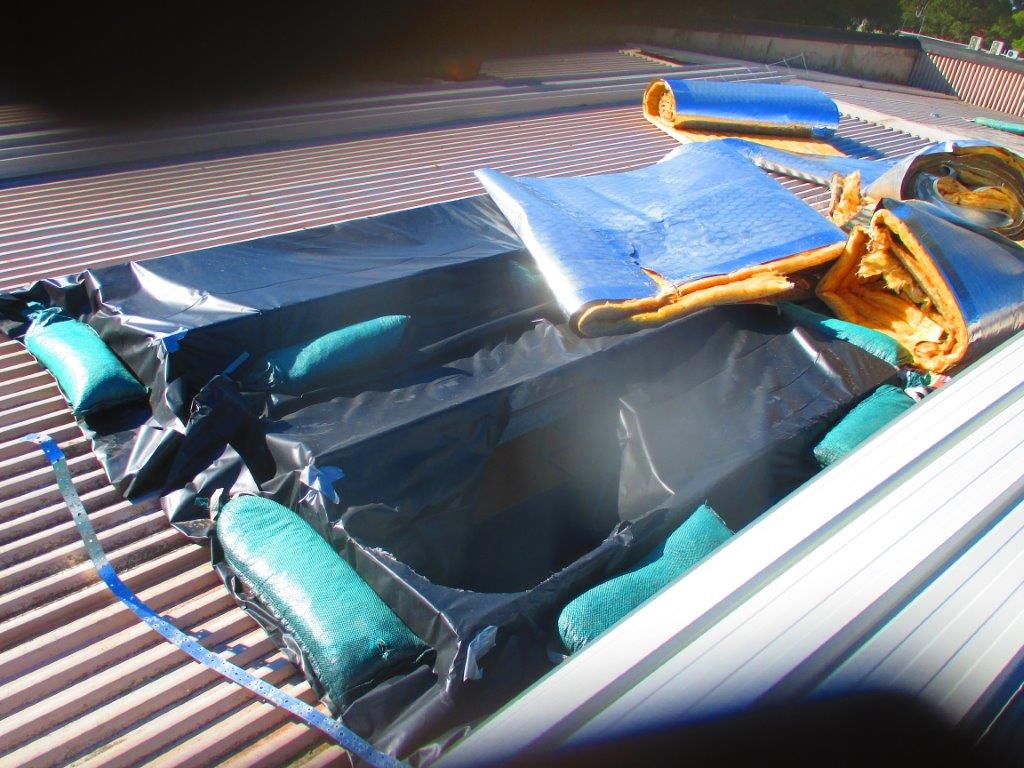
Image of the roof penetration the injured worker fell through.
The investigation
- SafeWork NSW inspectors responded to the incident.
- SafeWork NSW commenced an investigation to determine the cause and circumstances of the incident.
Safety information
You should consider ‘reasonably practicable’ control measures to manage the risk of falls. Before starting work on an existing roof, carry out an inspection (from below). You should:
- Determine the presence and condition of non-trafficable sheeting and other brittle roof sheeting such as sky lights, plastic roof sheeting or asbestos cement sheeting.
- Determine the presence and condition of safety mesh.
- When determining whether roof surfaces are safe to walk on, consider the product materials and method of fixing, including any possible deterioration in strength. (Note: products may become brittle and fixings may become less rigid over time.)
Implement these control measures to prevent workers from falling through roofs or skylights:
- Plan the work to avoid accessing unsafe or non-trafficable areas.
- Work from an elevated work platform or boom lift to avoid standing on the roof itself.
- Install temporary work platforms and roof ladders where appropriate (eg crawling boards).
- Install barriers (eg guard rails or covers) that are secured and labelled with warning signs.
- Install safety mesh when installing the roof sheeting.
- Install a fall restraint / arrest system (harness system) that has adequately-installed anchorage points, and train and instruct workers in its use.
- Ensure workers are competent in using fall restraint / fall arrest systems and are able to assess the need to adjust the length to limit slack as they move.
Apply these measures consistently and review them as work progresses.
Further information
You can also refer to the following guidance materials:
- Our guide to working at heights includes information on managing the risks of falls, including codes of practice and guides to working on roofs.
- Managing the risk of falls in housing construction code of practice.
- Managing risks of falls in a workplace code of practice
- SafeWork pocket guide to construction safety
Formwork collapse during concrete pour (25 May 2019)
Date of incident: 25 May 2019
Incident overview
During a concrete pour at a multi-storey building under construction, the formwork collapsed, placing three workers on the deck at risk of falling up to six metres onto broken reinforcement and support frames. The workers avoided injury by grabbing onto and climbing up the reinforcement mesh and debris.
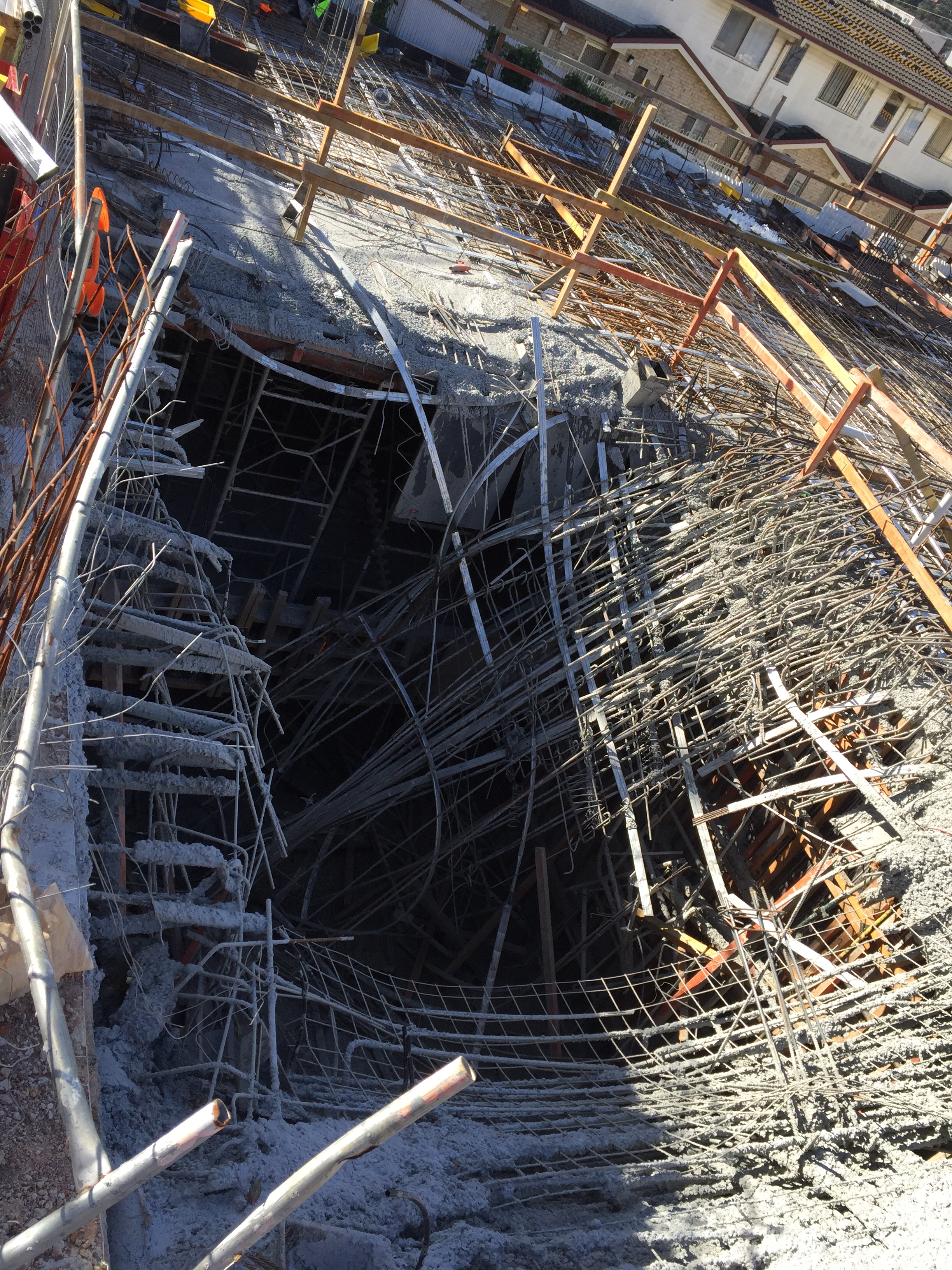
Construction site showing where the collapse occurred.
The investigation
- SafeWork NSW inspectors responded to the incident.
- SafeWork NSW has commenced an investigation to determine the cause and circumstances of the incident.
Safety information
Businesses must consider all ‘reasonably practicable’ control measures to manage the risk of a formwork collapse.
These include:
- A ‘competent person’ must design the formwork to retain its shape and withstand loads such as reinforcing, concrete and any associated materials and the dynamic loads imposed by pouring, agitating, the movement of people or environmental factors such as wind and rain.
- Install the formwork in accordance with the design and instructions from the designer - formwork should be rigid, watertight, braced and tied together to maintain position and shape during construction.
- Check variations to the design and ensure they are verified in writing by the designer, engineer or other competent person.
- Don’t mix components from different formwork systems unless a competent person (eg engineer), has authorised the component use.
- Put measures in place (eg bracing), to prevent vertical support feet, on inclined surfaces, from slipping.
- Before loading with weight, ensure a competent person (eg an engineer with experience in structural design -certifying engineer) inspects and certifies completed formwork and its supporting structures meet the design specifications and are structurally sound.
- Place concrete in accordance with the specified sequence and pour rate in order to maintain the stability of the formwork.
- Monitor formwork as it is being loaded to check for signs of potential failure or collapse and to ensure vertical and horizontal movements do not exceed specifications.
- Provide all workers with information and training specific to the formwork system, including:
- details of the formwork system, tasks, activities and components
- design intention regarding installation, use, movement, alterations and dismantling
- control measures to minimise identified risks
- how to inspect materials used in the formwork system.
Further information
- Formwork information page (templates, videos and other information)
- Working at heights
- Code of practice for managing the risk of falls in housing construction
- Code of practice for managing the risk of falls at workplaces
- Erection and dismantling formwork webinar
- Formwork and falsework guidance material (Safe Work Australia)
- Code of practice for formwork (Worksafe Queensland)
- Australian standard – Formwork for concrete
Loadshifting crush injury (24 May 2019)
This page references the Work Health and Safety Regulation 2017, which has since been remade as the Work Health and Safety Regulation 2025. Any references to clauses of the 2017 Regulation should now be read as references to the corresponding sections in the 2025 Regulation where applicable.
Incident date: 24 May 2019
Event
Crush injury while moving concrete blocks
Location
Lane Cove West
Incident overview
A worker was using an excavator fitted with forklift tines to load large concrete blocks from the ground onto a flatbed truck.
While lifting a concrete block, it moved, pinning another worker (who was helping with the lift) against the truck. The worker received a suspected fractured pelvis.
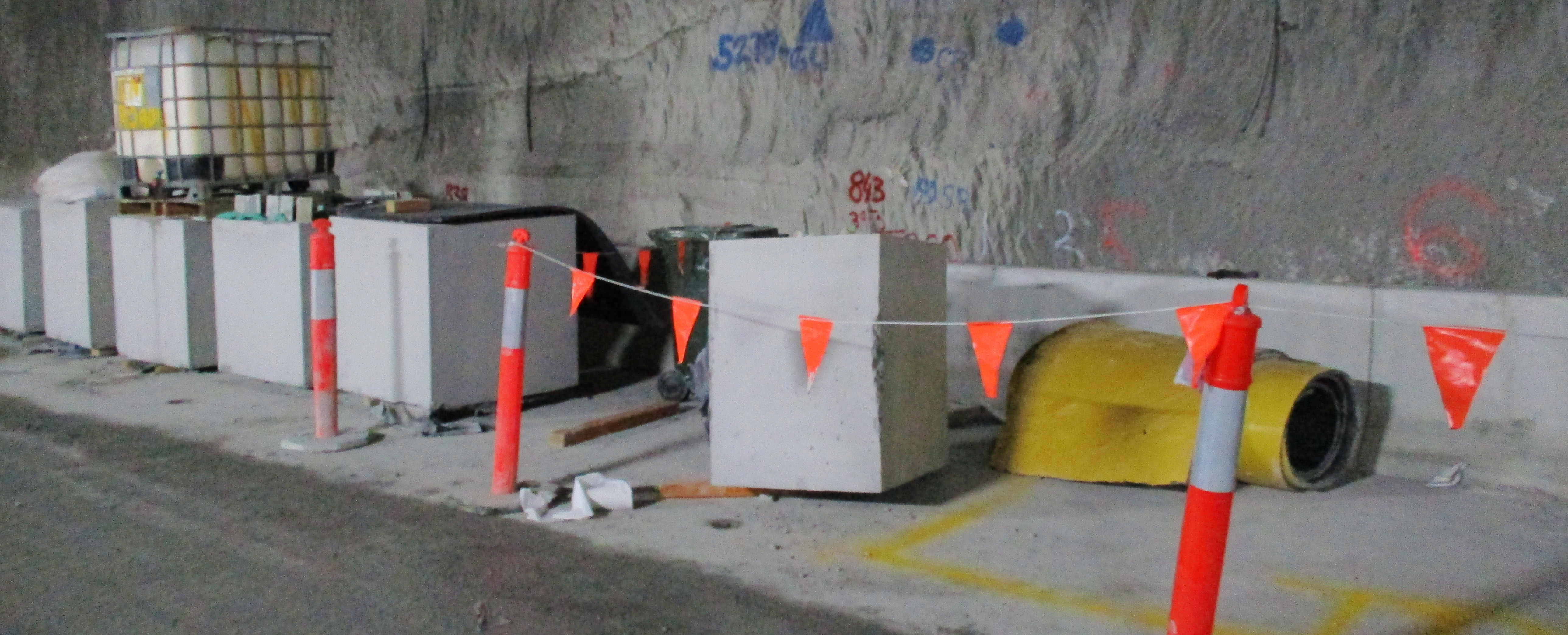
The concrete block that was being moved at the time of the incident.
The investigation
SafeWork NSW Inspectors responded to the incident.
Our Prosecution Guidelines (January 2018) outline our approach to prosecutions and Safe Work Australia’s National Compliance and Enforcement Policy provides guidance on their approach to compliance. These documents set out factors that will be considered in determining the investigative approach and appropriate outcome.
Safety Information
Businesses must consider reasonably practicable control measures to manage the risks when moving heavy loads. These include:
- Ensure mobile plant attachments are fit for purpose, appropriate for the item of plant, and properly fitted and connected prior to use
- Ensure all loads are lifted, carried and stored in a manner that ensures the stability of the mobile plant, the security of the load and any attachments
- Always consider the weight, size and composition of the load when making decisions about what equipment and safe method to use before doing any lift
- Travel with the load lowered to allow the operator to see and maintain stability of the load
- Avoid lifting any unsecured loads
- Never exceed the rated capacity of the lifting equipment
- Never sling a load from the tines
- Ensure all operators of any lifting equipment are appropriately trained and correctly licenced.
Businesses are reminded of their duty to identify hazards and manage risks to health and safety in accordance with the provisions of the Work Health and Safety Act 2011 and Work Health and Safety Regulation 2017.
Support
Our Coordinator Family Liaison can provide information on counselling and other support to injured workers and to close family members when a relative has died or is seriously injured in the workplace. Contact us on 13 10 50 or contact@safework.nsw.gov.au
Visit www.coroners.justice.nsw.gov.au for information about the State Coroner.
Further information
You can also refer to the following guidance materials:
- Machinery and equipment safety page
- Forklift safety page
- Forklift load handling safety video
- Forklift information sheet for owners and operators
- Industrial lift trucks – general guide
- How to manage work health and safety risks - Code of practice
About this information release
We have issued this information to draw attention to the occurrence of a serious injury while lifting a heavy load. This type of injury occurs across multiple industries. Investigations are ongoing and further information may be published as it becomes available.
The information contained in this publication is based on knowledge and understanding at the time of writing. Users are reminded of the need to ensure any information upon which they rely is up to date and to check the currency of the information with the appropriate SafeWork NSW officer or the user’s independent adviser. No conclusions should be drawn from the information in this publication about the cause of the incident or the culpability of any party.
All photographs were taken by SafeWork NSW.
Painter fall from heights (19 April 2019)
This page references the Work Health and Safety Regulation 2017, which has since been remade as the Work Health and Safety Regulation 2025. Any references to clauses of the 2017 Regulation should now be read as references to the corresponding sections in the 2025 Regulation where applicable.
Incident date: 19 April 2019
Location
Willoughby
Incident overview
A painter working from the side of a house fell from a ladder and broke his ankle. He was taken to hospital for treatment.
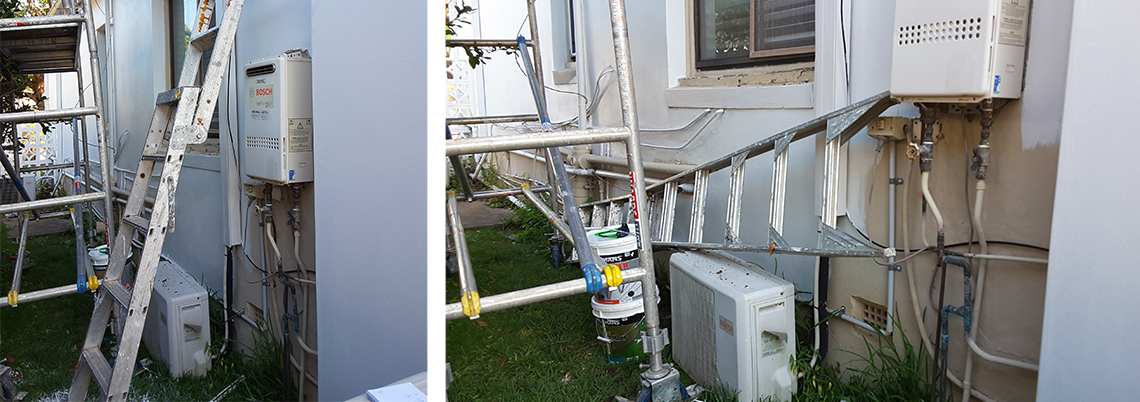
The ladder was not secured properly.
The investigation
- SafeWork NSW Inspectors responded to the incident.
- SafeWork NSW has commenced an investigation to determine the cause and circumstances of the incident.
Our Prosecution Guidelines (January 2018) outline our approach to prosecutions and Safe Work Australia’s National Compliance and Enforcement Policy provides guidance on their approach
to compliance. These documents set out factors that will be considered in determining the investigative approach and appropriate outcome.
Safety Information
Businesses are reminded of their duty to identify hazards and manage risks to health and safety in accordance with the provisions of the Work Health and Safety Act 2011 and Work Health and Safety Regulation 2017.
Businesses are reminded to consider reasonably practicable control measures to manage the risk of falls from heights, particularly when working on ladders.
It’s best to work from the ground whenever possible and only use ladders for simple access jobs, or for short duration light duty work.
You should also consider alternatives to a ladder, such as scaffolding or an elevated work platform.
If a ladder is the only option, the following precautions can help avoid injury:
- Choose the right ladder for the job. It should meet Australian standards and the load requirements of the job.
- Inspect the ladder for damage before each use.
- Only use a ladder if you are physically-capable of doing so.
- Set up the ladder on a flat, stable surface. If this isn’t possible then use a ladder that includes ladder safety devices like leg levellers, anti-slip gutter guards and stabilisers.
- Always maintain three points of contact when climbing or descending the ladder. This means two hands and one foot, or two feet and one hand.
- Only take small items up or down a ladder – never large or heavy items such as building materials. Only carry items that allow you to maintain three points of contact.
- Never lean or reach away from the ladder while using it.
- The combined weight of the person using the ladder and any items or tools should never exceed the working load limit on the ladder.
- A-frame (Step) ladders should only be used when locked in the fully-open position.
- If you’re using a straight ladder or an extension ladder, secure it at the top, bottom or both. If this isn’t possible then have someone hold the ladder in place while in use.
- Straight/extension ladders should be angled at a ratio of 1:4. That is, position the base of the ladder 1 metre away from the structure for every 4 metres of height.
- Do not work from the top two rungs of a ladder, and never straddle the top of an A-frame ladder.
- When climbing down, remain facing the ladder and climb to the bottom rung before stepping off.
Support
Our Coordinator Family Liaison can provide information on counseling and other support to injured workers and to close family members when a relative has died or is seriously injured in the workplace. Contact us on 13 10 50 or contact@safework.nsw.gov.au
Visit www.coroners.justice.nsw.gov.au for information about the State Coroner.
Further information
You can also refer to the following guidance materials:
- Safe use of ladders video
- Managing the risk of falls in housing construction Code of Practice
- Managing risks of falls in a workplace Code of Practice
- Ladder safety page – Safe Work Australia
- Australian standards related to ladders
About this information release
We have issued this information to draw attention to the occurrence of a serious injury in the painting industry. Investigations are ongoing and further information may be published as it becomes available.
The information contained in this publication is based on knowledge and understanding at the time of writing. Users are reminded of the need to ensure any information upon which they rely is up to date and to check the currency of the information with the appropriate SafeWork NSW officer or the user’s
independent adviser. No conclusions should be drawn from the information in this publication about the cause of the incident or the culpability of any party.
All photographs were taken by SafeWork NSW.
Scaffold collapse (1 April 2019)
Incident overview
Two formworkers were working on a multi-storey mixed-use construction in Macquarie Park. They were on a concrete slab working beside the base of scaffolding approximately 9 stories high when it collapsed, crushing both workers. One worker was transferred to hospital with critical injuries while the
other died at the scene.
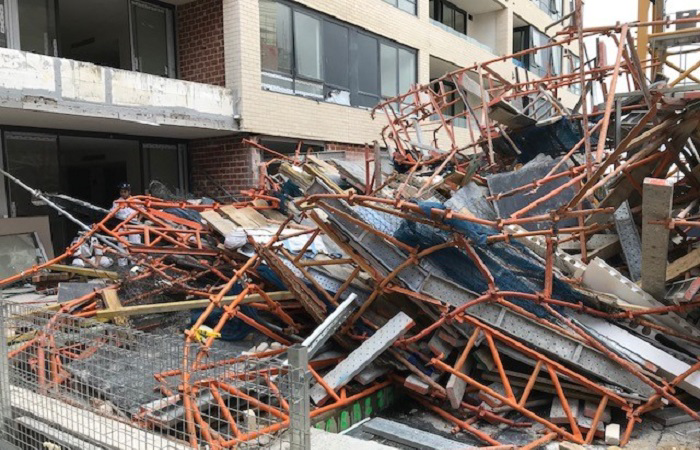
Investigation and Prosecution
SafeWork NSW conducted an investigation to determine the case and circumstances of the incident.
On 17 December 2020, the construction company was convicted for breaches against the NSW WHS Act 2011 and fined $900,000 as a result of the incident. The company was also served a Proposed Project Order, which required them to contribute a further $104,000 and establish a working group to deliver a scaffolding industry safety standard over a 12 month period.
Safety information
Businesses are reminded to consider reasonable and practicable control measures to manage the risk of scaffold collapse:
- Ensure the scaffold is stable at all times, including during erection, in situ, during and after any alterations, and when dismantling.
- Ensure the scaffold can withstand all anticipated loads, including the weight of workers, all stored material and any loads due to weather such as wind and rain (particularly where containment sheeting is used).
- Ensure dismantled scaffold components are not stored on the existing scaffold unless it is designed to withstand these loads.
- Know the duty rating (light, medium, heavy or special) and number of decks that can be loaded within a bay.
- Ensure the scaffold is adequately tied to its supporting structure, in accordance with instructions from a competent person. Consult with the scaffold designer, manufacturer, supplier or an engineer, and prevent unauthorised removal or changes.
- Develop systems of work that allow construction activities such as bricklaying, painting, rendering, glazing and cladding installation to be completed without unplanned changes to, or removal of, scaffold ties, e.g. work down from the top of the building as the scaffold is progressively dismantled,
or relocate ties so they do not interfere with the work. - Ensure altering or partially dismantling the scaffold does not weaken it, e.g. removing returns or adjacent bays may require additional ties or bracing on the remaining scaffold.
- Ensure only competent persons with a relevant class of high risk work licence undertake scaffolding work including making alterations.
- Protect the scaffold from damage by vehicles, plant, equipment or materials.
- Use a scaffold that is suitable for the tasks and construction process.
- Provide all workers adequate information, instruction, training and supervision regarding the control measures required to prevent the collapse of the scaffold.
- Have a competent person who holds the same or higher class of high risk work licence appropriate to the class of scaffolding regularly inspect the scaffold, to ensure it has not been modified or altered by unauthorised persons.
- Prepare a safe work method statement for all high risk construction work.
Further information
You can also refer to the following guidance materials:
- Safe Work Australia - Scaffolds and scaffolding work general guide
- Safe Work Australia – Guide for scaffold inspection and maintenance
- SafeWork NSW Erecting, altering and dismantling scaffolding – part 1 – prefabricated steel modular scaffolding
- Scaffolding collapse safety alert – 14 Sept 2018
- Dogging, rigging and scaffolding licencing information
- AS/NZS1576 Part 1: Scaffolding – general requirements
- AS/NZS4576: Guidelines for scaffolding
- Construction work Code of Practice
- Managing the risk of falls at workplaces Code of Practice
Structural collapse (28 February 2019)
This page references the Work Health and Safety Regulation 2017, which has since been remade as the Work Health and Safety Regulation 2025. Any references to clauses of the 2017 Regulation should now be read as references to the corresponding sections in the 2025 Regulation where applicable.
Incident date: 28 February 2019
Event
Structural collapse
Location
Moorebank
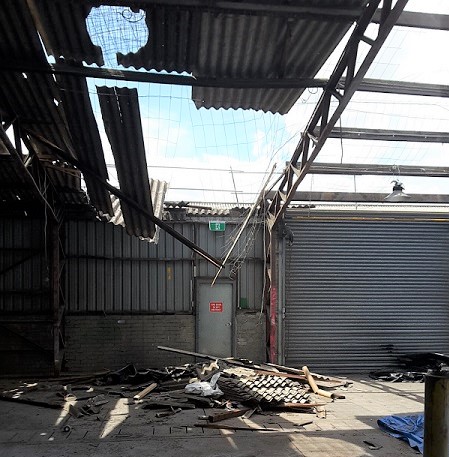
Incident overview
Eight workers were removing an asbestos roof and stacking the asbestos sheets on the existing roof.
The condition of the timber roof structure was unable to support the weight of the stacked sheets.
Part of the roof collapsed and two workers fell with the asbestos sheets to the concrete floor below. The fall was approximately four metres.
The workers were not wearing any safety harnesses at the time of the incident, however there was temporary roof edge protection and roof safety mesh in place.
Activities undertaken at the site include asbestos removal work.
The investigation
SafeWork NSW Inspectors responded to the incident.
Our Prosecution Guidelines (January 2018) outline our approach to prosecutions and Safe Work Australia’s National Compliance and Enforcement Policy provides guidance on their approach
to compliance. These documents set out factors that will be considered in determining the investigative approach and appropriate outcome.
Safety information
Businesses are reminded of their duty to identify hazards and manage risks to health and safety in accordance with the provisions of the Work Health and Safety Act 2011 and Work Health and Safety Regulation 2017.
When working on existing structures, such as during refurbishment, renovation or demolition work, a competent person should assess the integrity of the structure and determine whether it is strong enough to support the weight of workers and materials, and, will remain stable during the work. Additional
propping or bracing may be required, and roofing material may need to be to be lowered as they are removed rather than stacked on the roof.
Work should be conducted from the ground or a solid construction such as an elevated work platform (EWP) or scaffolding. Where work at a height is required, a safe means of access and adequate fall protection must be provided. Any existing permanently installed fall protection devices such as roof safety mesh, fall arrest anchorages and similar controls should be assessed before use to ensure they have been installed correctly and have not deteriorated over time.
Where harness-based fall arrest is to be used a rescue plan must be developed and tested to ensure it is effective.
Further information
Please refer to the following guidance materials:
- Working at heights webpage (includes safety videos, posters and other practical information)
- Managing the risk of falls at workplaces COP
- Construction work COP
- Demolition work COP
- How to safety remove asbestos COP
- SafeWork Pocket Guide to Construction Safety
About this information release
We have issued this information to draw attention to the occurrence of a serious injury in the construction industry. Investigations are ongoing and further information may be published as it becomes available.
The information contained in this publication is based on knowledge and understanding at the time of writing. Users are reminded of the need to ensure any information upon which they rely is up to date and to check the currency of the information with the appropriate SafeWork NSW officer or the user’s
independent adviser. No conclusions should be drawn from the information in this publication about the cause of the incident or the culpability of any party.
All photographs were taken by SafeWork NSW.
Excavator incident (12 February 2019)
This page references the Work Health and Safety Regulation 2017, which has since been remade as the Work Health and Safety Regulation 2025. Any references to clauses of the 2017 Regulation should now be read as references to the corresponding sections in the 2025 Regulation where applicable.
Incident date
12 February 2019
Event
Bucket of excavator being loaded onto a truck hit worker
Location
Macquarie Fields
Incident Overview
While loading an excavator onto the back of a truck, a worker who was strapping down the excavator was struck by a falling object. As the operator of the excavator moved the bucket a smaller bucket inside it toppled out and struck the worker. The worker sustained injuries to his head, back and leg.
The site
The site is located at Macquarie Fields. Work being done at the site includes earth moving and construction work.
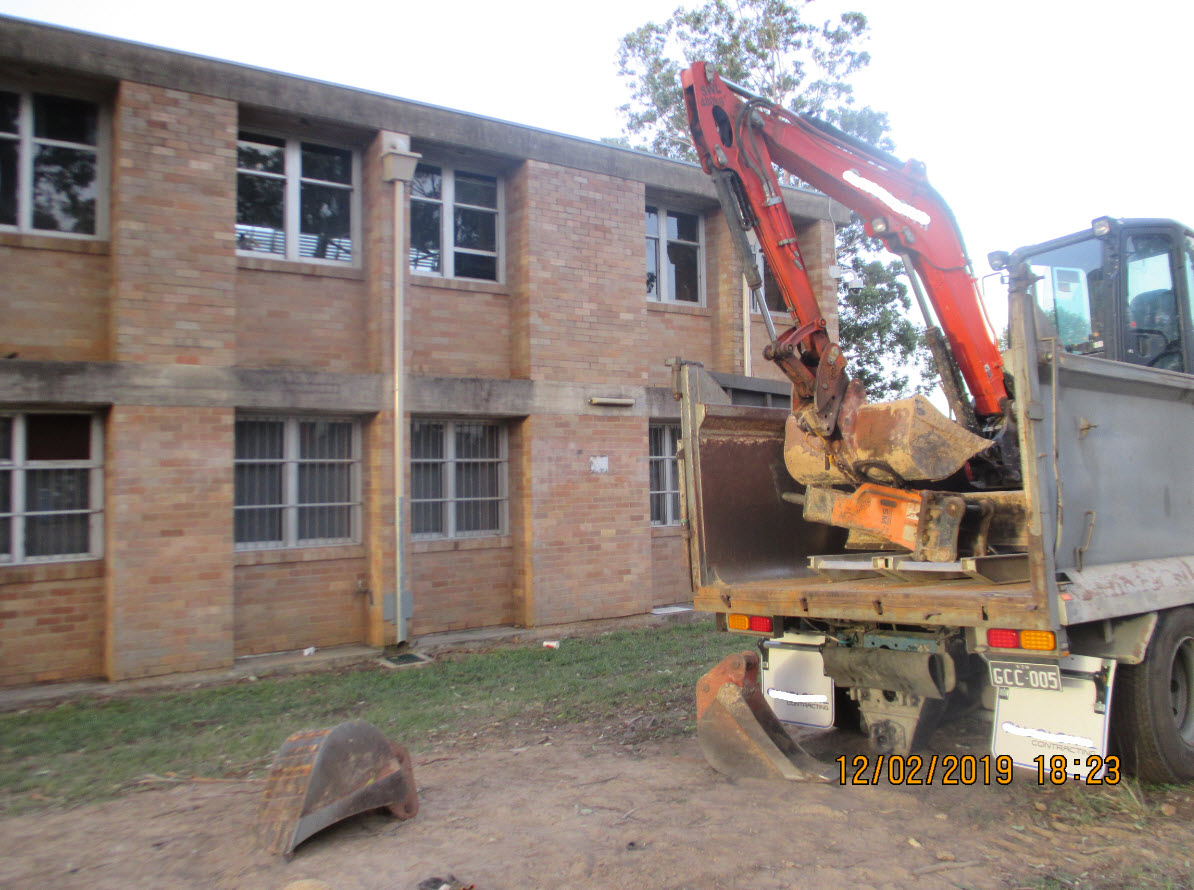
Image: The site where work was being done.
The investigation
SafeWork NSW Inspectors responded to the incident.
Our Prosecution Guidelines (January 2018) outline our approach to prosecutions and Safe Work Australia’s National Compliance and Enforcement Policy provides guidance on their approach to compliance. These documents set out factors that will be considered in determining the investigative approach and appropriate outcome.
Safety Information
Businesses are reminded of their duty to identify hazards and manage risks to health and safety in line with the provisions of the Work Health and Safety Act 2011 and Work Health and Safety Regulation 2017. Each year SafeWork NSW responds to incidents where workers have been injured while using earth moving equipment. Workers in the construction industry are commonly injured; however any worker using earth moving machinery is at risk. Businesses are reminded to consider reasonably practicable control measures to manage the risk of injury while operating, or working near, earth moving machinery. Clear, established lines of communication between the operators of plant and nearby workers is vital, and should be implemented with control measures such as barriers, exclusion zones and traffic management. Workers should be trained and supervised when working closely with plant, and all maintenance should be done by competent, accredited people.
Further information
Please refer to the following guidance materials:
Excavation work Code of Practice
Moving Plant on Construction Sites: Code of Practice
Safety Alert – Working with or around mobile plant
About this information release
We have issued this information to draw attention to the occurrence of a serious injury in the earth moving industry. Investigations are ongoing and further information may be published as it becomes available. The information contained in this publication is based on knowledge and understanding at the time of writing. Users are reminded of the need to ensure any information upon which they rely is up to date and to check the currency of the information with the appropriate SafeWork NSW officer or the user’s independent adviser. No conclusions should be drawn from the information in this publication about the cause of the incident or the culpability of any party.
All photographs were taken by SafeWork NSW.
Fall from heights (5 February 2019)
This page references the Work Health and Safety Regulation 2017, which has since been remade as the Work Health and Safety Regulation 2025. Any references to clauses of the 2017 Regulation should now be read as references to the corresponding sections in the 2025 Regulation where applicable.
Incident date
5 February 2019
Event
Fall from heights landing on reinforcing bar
Location
Gosford
Incident Overview
A 32 year old male worker was doing formwork at a multi-storey construction site in Gosford and fell approximately 2.8 metres. He landed on a reinforcing bar and his leg was impaled.
The site
The site is located at Gosford. Work being done at the site includes formwork for a multi-storey residential construction.
The investigation
- SafeWork NSW Inspectors responded to the incident.
- SafeWork NSW has commenced an investigation to determine the cause and circumstances of the incident.
Our Prosecution Guidelines (January 2018) outline our approach to prosecutions and Safe Work Australia’s National Compliance and Enforcement Policy provides guidance on their approach
to compliance. These documents set out factors that will be considered in determining the investigative approach and appropriate outcome.
Safety Information
Businesses are reminded of their duty to identify hazards and manage risks to health and safety in line with the provisions of the Work Health and Safety Act 2011 and Work Health and Safety Regulation 2017.
Each year SafeWork NSW responds to incidents where workers have been injured as a result of falls from heights. Most of these incidents involve open penetrations on formwork decks and unprotected edges/voids.
Workers in the construction industry are most commonly injured; however any worker working at heights is at risk.
Businesses are reminded to consider reasonably practicable control measures to manage the risk of falls from heights by ensuring open penetrations are covered and covers are secured.
Further information
Please refer to the following guidance materials:
- Managing the risk of falls at workplaces COP
- Construction work COP
- Formwork COP
- SafeWork Pocket Guide to Construction Safety
- Safework Australia Formwork Guide
About this information release
We have issued this information to draw attention to the occurrence of a fatality/serious injury/serious incident in the construction industry. Investigations are ongoing and further information may be published as it becomes available.
The information contained in this publication is based on knowledge and understanding at the time of writing. Users are reminded of the need to ensure any information upon which they rely is up to date and to check the currency of the information with the appropriate SafeWork NSW officer or the user’s
independent adviser. No conclusions should be drawn from the information in this publication about the cause of the incident or the culpability of any party.
All photographs were taken by SafeWork NSW.
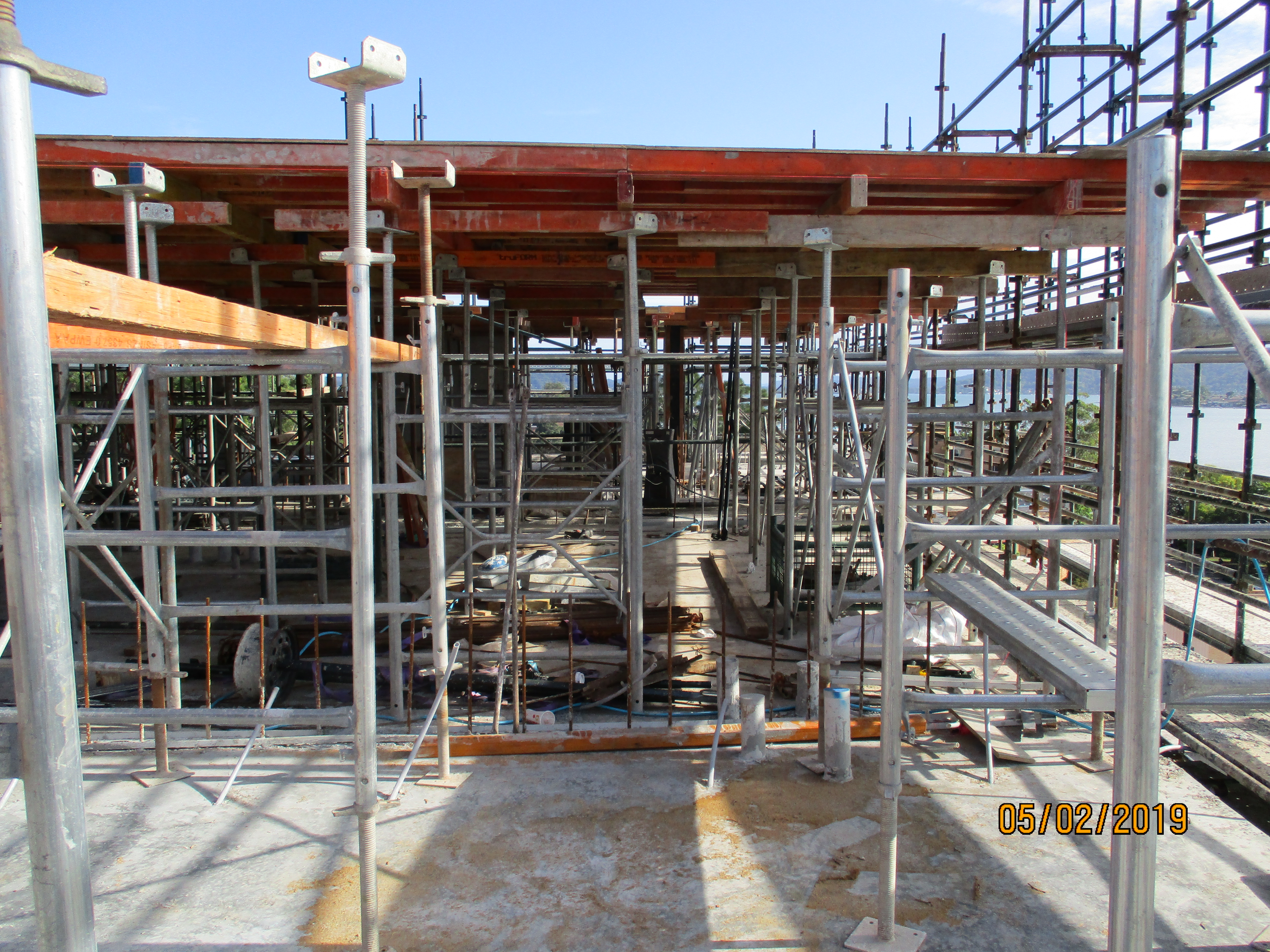
The site
The site is located at Gosford. Work being done at the site includes formwork for a multi-storey residential construction.
The investigation
- SafeWork NSW Inspectors responded to the incident.
- SafeWork NSW has commenced an investigation to determine the cause and circumstances of the incident.
Our Prosecution Guidelines (January 2018) outline our approach to prosecutions and Safe Work Australia’s National Compliance and Enforcement Policy provides guidance on their approach to compliance. These documents set out factors that will be considered in determining the investigative approach and appropriate outcome.
Safety Information
Businesses are reminded of their duty to identify hazards and manage risks to health and safety in line with the provisions of the Work Health and Safety Act 2011 and Work Health and Safety Regulation 2017.
Each year SafeWork NSW responds to incidents where workers have been injured as a result of falls from heights. Most of these incidents involve open penetrations on formwork decks and unprotected edges/voids.
Workers in the construction industry are most commonly injured; however any worker working at heights is at risk.
Businesses are reminded to consider reasonably practicable control measures to manage the risk of falls from heights by ensuring open penetrations are covered and covers are secured.
Further information
Please refer to the following guidance materials:
- Managing the risk of falls at workplaces COP
- Construction work COP
- Formwork COP
- SafeWork Pocket Guide to Construction Safety
- Safework Australia Formwork Guide
About this information release
We have issued this information to draw attention to the occurrence of a fatality/serious injury/serious incident in the construction industry. Investigations are ongoing and further information may be published as it becomes available.
The information contained in this publication is based on knowledge and understanding at the time of writing. Users are reminded of the need to ensure any information upon which they rely is up to date and to check the currency of the information with the appropriate SafeWork NSW officer or the user’s independent adviser. No conclusions should be drawn from the information in this publication about the cause of the incident or the culpability of any party.
All photographs were taken by SafeWork NSW.
Fall from height (12 December 2018)
This page references the Work Health and Safety Regulation 2017, which has since been remade as the Work Health and Safety Regulation 2025. Any references to clauses of the 2017 Regulation should now be read as references to the corresponding sections in the 2025 Regulation where applicable.
Incident date
12 December 2018
Event
Fall from height
Location
Denham Court
Incident Overview
A worker fell from a height while installing roof & guttering on a house in Denham Court, sustaining hand and shoulder injuries.
SafeWork NSW and NSW Police responded to the incident to investigate and make the site safe.
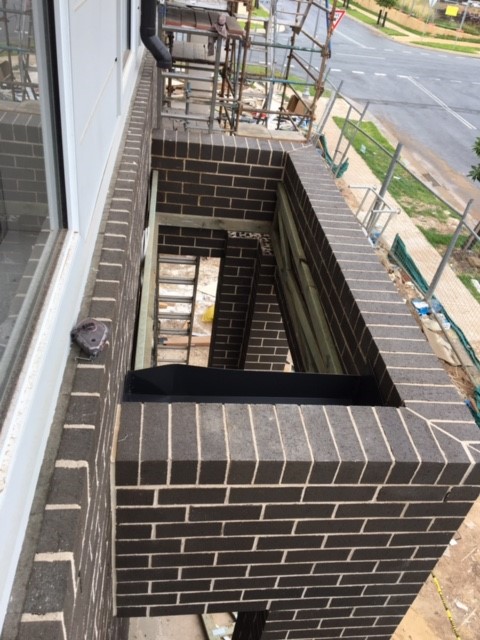
The location on the site the worker fell through
The site
The site is located at Denham Court. Activities being done on the site included the construction of a two storey home. The site is under the control of a principal contractor. A sub-contractor had been engaged to install box guttering and roofing.
The investigation
SafeWork NSW Inspectors responded to the incident.
Our Prosecution Guidelines outline our approach to prosecutions and Safe Work Australia’s National Compliance and Enforcement Policy provides
guidance on our approach to compliance. These documents set out factors that will be considered in determining the investigative approach and appropriate outcome.
Safety Information
Businesses are reminded of their duty to identify hazards and manage risks to health and safety in line with the provisions of the Work Health and Safety Act 2011 and Work Health and Safety Regulation 2017.
Each year SafeWork NSW responds to incidents where workers have been exposed to risks associated withfalls from heights. Most of these incidents involve unprotected edges or voids.
Businesses are reminded to consider reasonable and practicable control measures to manage the risk of falls from heights including:
- Remove the need to work from heights where possible;
- Use a suitable working platform such as scaffolds, boom lifts or scissor lifts;
- Provide adequate edge protection by using guardrails or perimeter scaffolding;
- Ensure scaffolds are inspected every 30 days and a handover certificate is issued;
- Prevent people accessing incomplete scaffolds;
- Ensure penetrations/voids are covered and clearly marked or have edge protection
- Provide workers with safe means of accessing and exiting work areas;
- Ensure ladders are secured and extend 1m past the landing; and
- Only use fall restraint or fall arrest systems when edge protection or work platforms are not reasonably practicable.
Further information
Please refer to the following guidance materials:
- Safe Work Australia's - formwork and falsework guideance material
- Managing the risk of falls at workplaces Code of Practice
- Maanging the risk of falls in housing construction Code of Practice
- SafeWork Pocket Guide to Construction Safety
About this information release
SafeWork NSW has issued this information to draw attention to the occurrence of a serious injury in the construction industry. Investigations are ongoing and further information may be published as it becomes available.
The information contained in this publication is based on knowledge and understanding at the time of writing. Users are reminded of the need to ensure any information upon which they rely is up to date and to check the currency of the information with the appropriate officer of SafeWork NSW or the user’s
independent adviser. No conclusions should be drawn from the information in this publication about the cause of the incident or the culpability of any party.
All photographs were taken by SafeWork NSW.
Fall through void (17 November 2018)
This page references the Work Health and Safety Regulation 2017, which has since been remade as the Work Health and Safety Regulation 2025. Any references to clauses of the 2017 Regulation should now be read as references to the corresponding sections in the 2025 Regulation where applicable.
Incident date
17 November 2018
Event
Fall from heights through open penetration/void
Location
Green Valley
Incident overview
A 29-year-old male air conditioning mechanic fell from the first floor of a residential construction site through a stair void. The worker suffered fatal head and neck injuries.
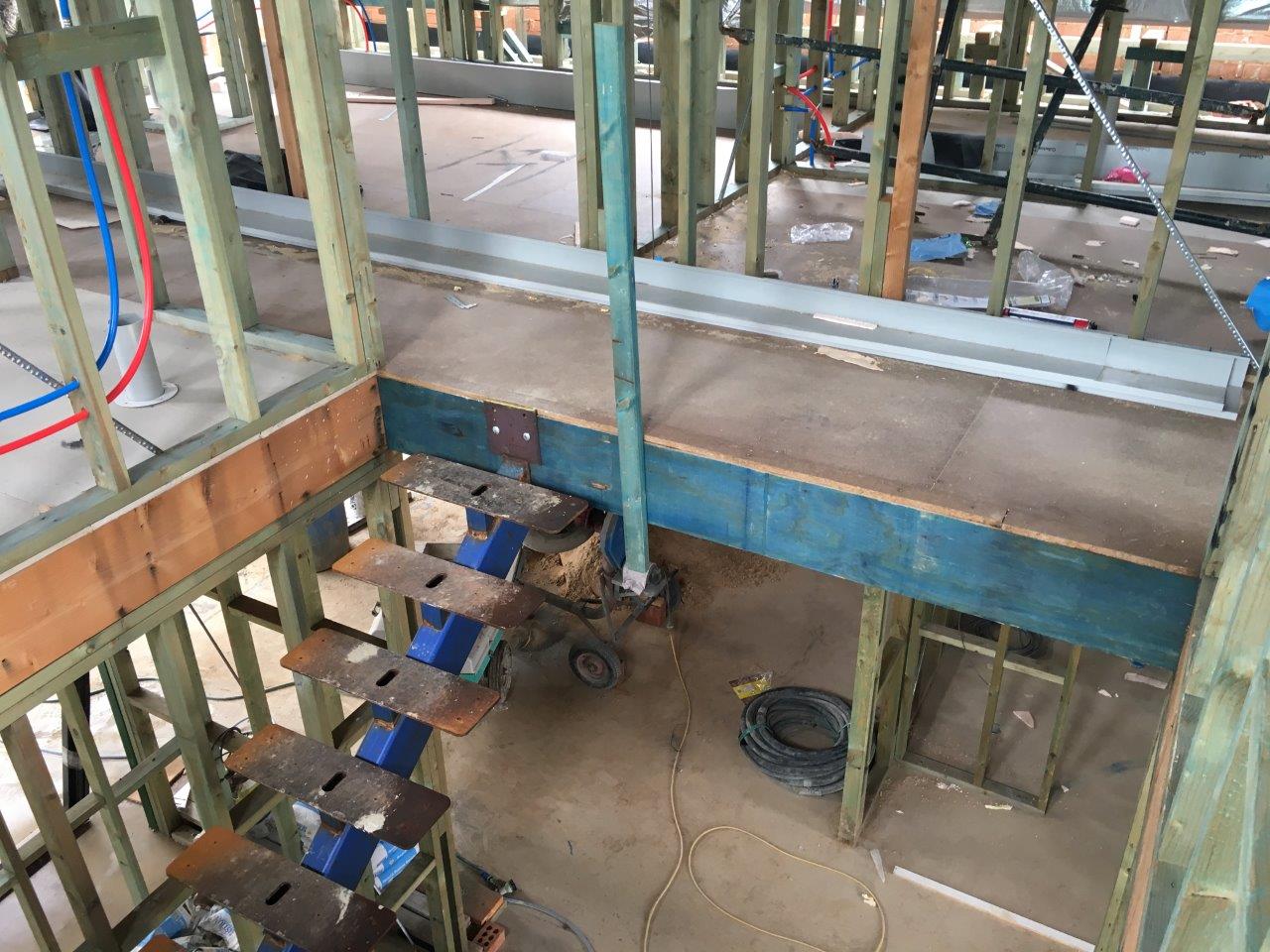
The site
The site is located at Green Valley. Activities undertaken at the site include the construction of a two-story residence.
The investigation
SafeWork NSW Inspectors responded to the incident.
SafeWork NSW has commenced an investigation to determine the cause and circumstances of the incident.
Our Prosecution Guidelines (January 2018) outline our approach to prosecutions and Safe Work Australia’s National Compliance and Enforcement Policy provides guidance on our approach to compliance. These documents set out factors that will be considered in determining the investigative approach and appropriate outcome.
Safety Information
Businesses are reminded of their duty to identify hazards and manage risks to health and safety in accordance with the provisions of the Work Health and Safety Act 2011 and Work Health and Safety Regulation 2017.
Each year SafeWork NSW respond to incidents where workers have been killed or seriously injured from falls from heights. Many of these incidents involve falling through penetrations.
Workers in the construction industry are most commonly injured from falling; however, any worker, working at height is at risk.
Businesses are reminded to consider reasonably practicable control measures to manage the risk of falls.
Before commencing work a business must:
- provide edge protection on all open edges where a worker can fall e.g. guardrails comprising top-rail, mid-rail and toe boards.
- cover stair voids with covers designed to withstand likely impact and static loads and fixed to prevent any dislodgement or accidental removal.
- provide workers with safe means of access and egress to work areas.
Further information
Please refer to the following guidance materials:
- Managing the risk of falls at workplaces Code of Practice
- Managing the risk of falls in housing construction Code of Practice
- SafeWork Pocket Guide to Construction Safety
About this information release
We have issued this information to draw attention to the occurrence of a fatality in the Construction industry. Investigations are ongoing and further information may be published as it becomes available.
The information contained in this publication is based on knowledge and understanding at the time of writing. Users are reminded of the need to ensure any information upon which they rely is up to date and to check the currency of the information with the appropriate SafeWork NSW officer or the user’s
independent adviser. No conclusions should be drawn from the information in this publication about the cause of the incident or the culpability of any party.
All photographs were taken by SafeWork NSW.
Contact with electricity (6 November 2018)
This page references the Work Health and Safety Regulation 2017, which has since been remade as the Work Health and Safety Regulation 2025. Any references to clauses of the 2017 Regulation should now be read as references to the corresponding sections in the 2025 Regulation where applicable.
Incident date
6 November 2018
Event
Electric Shock
Location
Guildford
Incident Overview
A 36-year-old worker was installing a steel reinforcement bar into a wall cavity on a construction site. While attempting to position the reinforcement bar to insert into the cavity, it extended past the edge of the scaffold and touched high voltage powerlines. The worker received serious injuries.
SafeWork NSW, NSW Police Force and other Emergency Services responded to the incident.
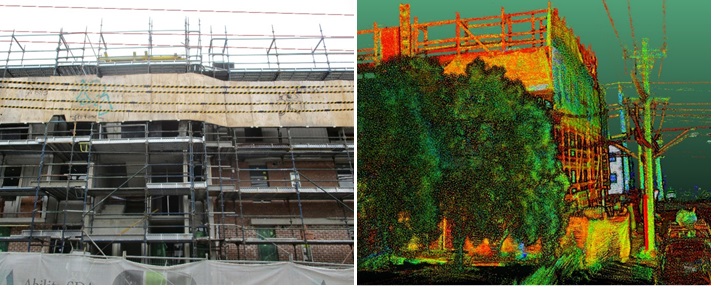
The site
The site is located at Guildford. Work being done at the site involves the construction of a low-rise apartment building.
The investigation
SafeWork NSW Inspectors responded to the incident.
Our Prosecution Guidelines outline our approach to prosecutions and Safe Work Australia’s National Compliance and Enforcement Policy provides guidance on our approach to compliance. These documents set out factors that will be considered in determining the investigative approach and appropriate outcome.
Safety Information
Businesses are reminded of their duty to identify hazards and manage risks to health and safety in accordance with the provisions of the Work Health and Safety Act 2011 and Work Health and Safety Regulation 2017.
Each year SafeWork NSW responds to many incidents where workers are seriously injured from coming in to contact with or working too close to overhead power lines where a ‘flashover or arc’ occurs. Workers can come in to contact with electric lines directly or indirectly through materials being handled or plant being operated near overhead power lines. Regardless of the voltage, which can be as high as 500,000 volts or as low as 230 volts, the consequences can be catastrophic.
Businesses and workers in the construction industry are reminded of the increased risks when working near overhead power lines. Businesses must ensure, so far as is reasonably practicable, that no person, plant or thing at the workplace comes within an unsafe distance of an overhead power line. If it is not reasonably practicable to ensure the safe distance of a person, plant or thing from an overhead or underground power line, the person conducting the business or undertaking at the workplace must make sure that:
- a risk assessment is done in relation to the proposed work, and
- control measures that are put in place are consistent with:
- the risk assessment, and
- if an electricity supply authority is responsible for the power line, any requirements of the authority.
Note the requirements in the AS/NZS 4576 of a 4 metre approach distance for metallic scaffolding used near overhead power lines – where any scaffolding, hand held tools, equipment or materials may come within this 4 metre approach distance, a hazard identification and written risk assessment must be undertaken and measures undertaken to control risks to persons.
Further information
Please refer to the following guidance materials:
- Code of Practice: Work Near Overhead Power Lines
- Erecting, altering and dismantling scaffolding - Part 1: Prefabricated steel modular scaffolding
About this information release
We have issued this information to draw attention to the occurrence of a serious injuryserious injuryserious injury in the construction industry. Investigations are ongoing and more information may be published as it becomes available.
The information contained in this publication is based on knowledge and understanding at the time of writing. Users are reminded of the need to make sure any information upon which they rely is up to date and to check the currency of the information with the appropriate SafeWork NSW officer or the user’s independent adviser. No conclusions should be drawn from the information in this publication about the cause of the incident or the culpability of any party.
All photographs were taken by SafeWork NSW.
Falling object from construction site (29 October 2018)
This page references the Work Health and Safety Regulation 2017, which has since been remade as the Work Health and Safety Regulation 2025. Any references to clauses of the 2017 Regulation should now be read as references to the corresponding sections in the 2025 Regulation where applicable.
Incident date: 29 October 2018
Event
Prefabricated concrete panel fall on construction site
Location
Bexley
Incident Overview
A 21 tonne, right angle shaped, prefabricated concrete panel was being lifted by a tower crane and a mobile crane in a dual lift. The panel was approximately 9.3 metres long by 2.5 metres wide.
As the panel was being lifted into position the lifting equipment and/or lifting point failed and the panel suddenly dropped. The reason for the failure is not yet known.
A hoist rope was damaged in the incident and the cranes were subjected to shock loading. Debris from the incident landed in a public area next to the site. There were no reported injuries.
SafeWork NSW, NSW Police Force, Fire and Rescue NSW and Public Works Engineers responded to the incident.
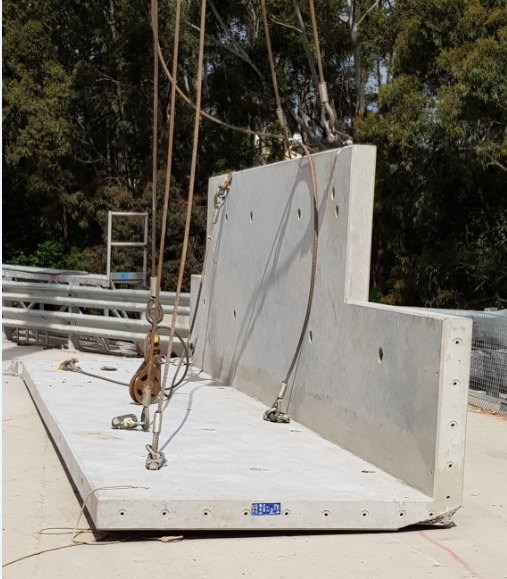
The site
The site
The site is in Bexley. Work being done at the site is part of the West Connex motorway project.
The investigation
SafeWork NSW Inspectors responded to the incident.
SafeWork NSW has commenced an investigation to determine the cause and circumstances of the incident.
Our Prosecution Guidelines outline our approach to prosecutions and Safe Work Australia’s National Compliance and Enforcement Policy provides guidance on our approach to compliance. These documents set out factors that will be considered in determining the
investigative approach and appropriate outcome.
Safety Information
Persons conducting a business or undertaking (PCBUs) are reminded of their duty to identify hazards and manage risks to health and safety in accordance with the provisions of the Work Health and Safety Act 2011 and Work Health and Safety Regulation 2017.
Principal Contactors and other businesses working in construction have additional and specific duties under Work Health and Safety (WHS) legislation. Those duties extend to the care of both workers and others – including members of the public. Businesses need to provide and maintain safe plant and structures
such as lifts and cranes, and risks related to structures collapsing or objects falling need to be managed..
The loads applied to prefabricated concrete elements during lifting depend on many factors. These include the orientation of the concrete element, the size and shape of the element and its centre of gravity, the location and capacity of the lifting points, and the lifting equipment and method used.
The force applied to a crane and lifting equipment can change a lot during a lift. An erection plan is needed to make sure the crane, lifting equipment and concrete element can withstand the applied loads.
The erection plan should be developed in consultation with relevant contractors, including the concrete element prefabricator. It should include drawings that have details on the types and locations of all lifting / bracing / fixing inserts and any component reinforcing.
Documents about the erection plan should be available on site. They should specify the erection sequence and orientation, the correct lifting points, clutches and the rigging details/configuration.
Lifting inserts and clutches must be compatible with each other - seek advice from the item manufacturer if you are unsure. Cranes with sufficient size to use the specified rigging and sling angles, and capacity to handle the calculated load share, must be used.
Before lifting anything, make sure the concrete has reached the required strength and the lift can be done as described in the erection plan. Do not deviate from the erection plan, without agreement of the erection designer.
Further information
Please refer to the following guidance materials:
- AS 3850.1-2015 Prefabricated concrete elements - General requirements.
- AS 3850.2-2015 Prefabricated concrete elements - Building construction.
- AS 1379 - 2007 Specification and supply of concrete (Guidance on sampling and testing systems for concrete)
- Code of Practice – Construction Work
- Code of Practice – Safe Design of Structures
About this information release
We have issued this information to draw attention to the occurrence of a serious incident in the construction industry. Investigations are ongoing and further information may be published as it becomes available.
The information contained in this publication is based on knowledge and understanding at the time of writing. Users are reminded of the need to ensure any information upon which they rely is up to date and to check the currency of the information with the appropriate SafeWork NSW officer or the user’s
independent adviser. No conclusions should be drawn from the information in this publication about the cause of the incident or the culpability of any party.
All photographs were taken by SafeWork NSW.
Hit by prefabricated concrete panel (11 September 2018)
This page references the Work Health and Safety Regulation 2017, which has since been remade as the Work Health and Safety Regulation 2025. Any references to clauses of the 2017 Regulation should now be read as references to the corresponding sections in the 2025 Regulation where applicable.
Incident date
11 September 2018
Event
Hit by falling object
Location
Seven Hills
Incident overview
A 10 tonne prefabricated concrete panel approximately 12m in length and 2.1m in width was being lifted off a truck using a crane and was to be rotated mid-air and moved into position as part of constructing a commercial premises. However, as it was being lifted it broke into pieces, striking and injuring
a 50 year old worker assisting with the lift.
NSW Police and Ambulance responded to the incident and the worker was conveyed to hospital and received treatment for his injuries.
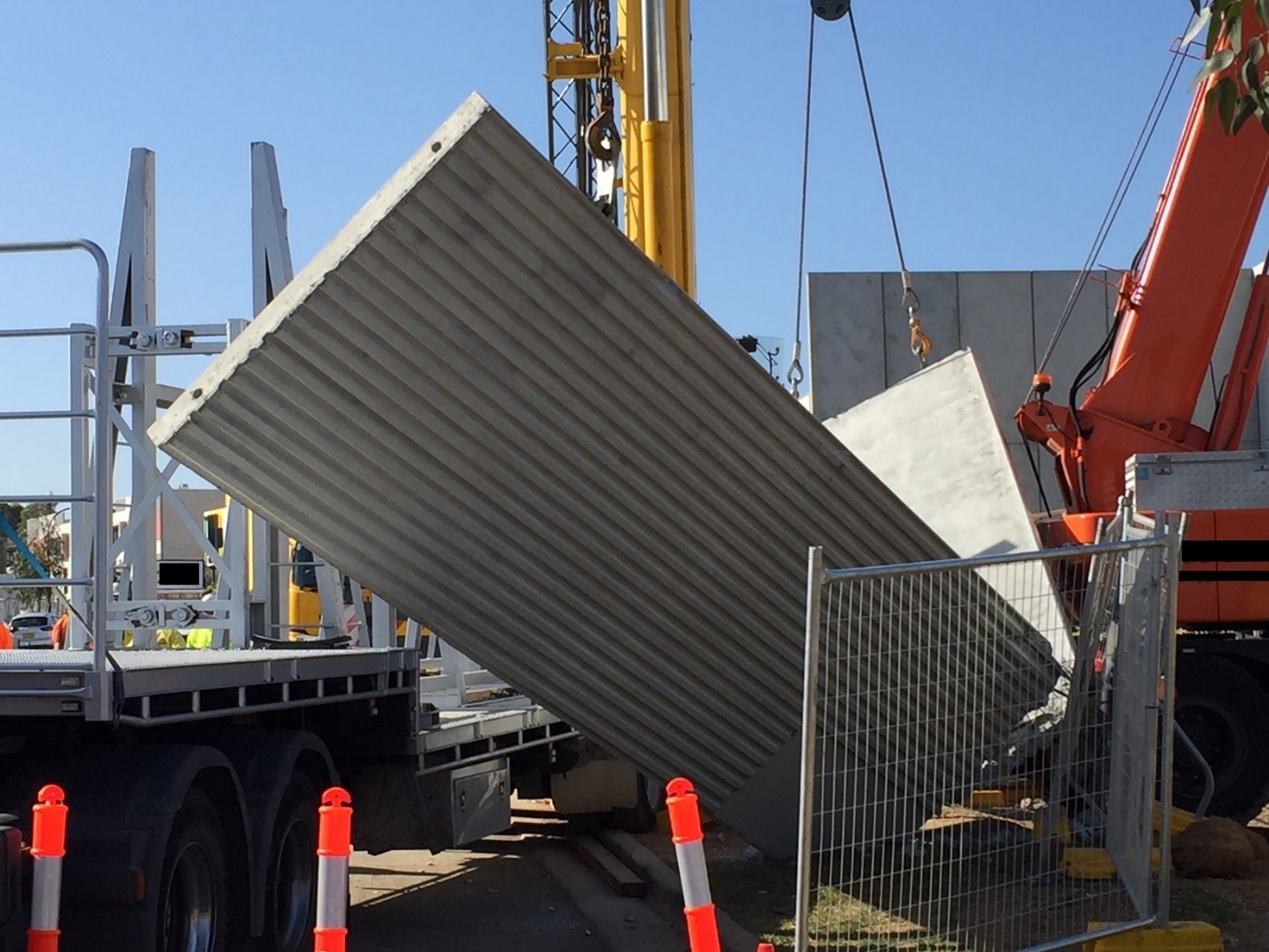
View of the pre-fabricated concrete panel which broke into pieces when being raised into place.
The site
The site is located at Seven Hills. The activity being undertaken at the time was the construction of a commercial premises using prefabricated concrete panels. The site is under the control of a principal contractor with several sub-contractors working onsite.
The investigation
SafeWork NSW Inspectors responded to the incident.
Our Prosecution Guidelines outline our approach to prosecutions and Safe Work Australia’s National Compliance and Enforcement Policy provides guidance on their approach to compliance.
These documents set out factors that will be considered in determining the investigative approach and appropriate outcome.
Safety information
Businesses are reminded of their duty to identify hazards and manage risks to health and safety in accordance with the provisions of the Work Health and Safety Act 2011 and Work Health and Safety Regulation 2017.
Tilt-up and pre-cast panels must be designed for both erection loads and for loadings experienced when they make up part of the completed building or structure (i.e. ‘in-service loads’). The loads applied to the panel during lifting off the casting bed, transport, handling, erection, and while
the panels are temporarily braced are different from loads applied when part of the final structure. The erection designer(s) must therefore design the panel for all types of loading. Erection crews must then ensure panels are lifted and braced in the manner specified by the erection designer(s).
Tilt-up panels should only be lifted when the concrete has cured long enough to attain the minimum required concrete strength specified by the lifting insert supplier. The minimum concrete strength for most proprietary brand lifting inserts is 25 MPa. Some inserts may require a higher
strength than 25 MPa.
Further information
Please refer to the following guidance materials:
- AS 3850.1-2015 Prefabricated concrete elements - Part 1: General requirements.
- AS 3850.2-2015 Prefabricated concrete elements - Part 2: Building construction.
- Guidance on sampling and testing systems for concrete is provided in AS 1379 - Specification and supply of concrete.
About this information release
We have issued this information to draw attention to the occurrence of a fatality/serious injury/serious incident in the prefabricated concrete industry. Investigations are ongoing and further information may be published as it becomes available.
The information contained in this publication is based on knowledge and understanding at the time of writing. Users are reminded of the need to ensure any information upon which they rely is up to date and to check the currency of the information with the appropriate SafeWork NSW officer or the user’s
independent adviser. No conclusions should be drawn from the information in this publication about the cause of the incident or the culpability of any party.
All photographs were taken by SafeWork NSW.
Fall through penetration (11 September 2018)
This page references the Work Health and Safety Regulation 2017, which has since been remade as the Work Health and Safety Regulation 2025. Any references to clauses of the 2017 Regulation should now be read as references to the corresponding sections in the 2025 Regulation where applicable.
Incident date
11 September 2018
Event
Fall through penetration
Location
Castle Hill
Incident overview
A 28-year-old bricklayer was undertaking work in a plant room of a major tunnel and civil infrastructure works project. He stood on the temporary platform covering a penetration which has shifted under his weight causing him to fall 7.1 metres to the concourse level below. The worker sustained a broken left femur, tibia, fibula and a broken left shoulder.
SafeWork NSW and NSW Ambulance responded to the incident and the worker was conveyed to hospital and received treatment for his injuries.
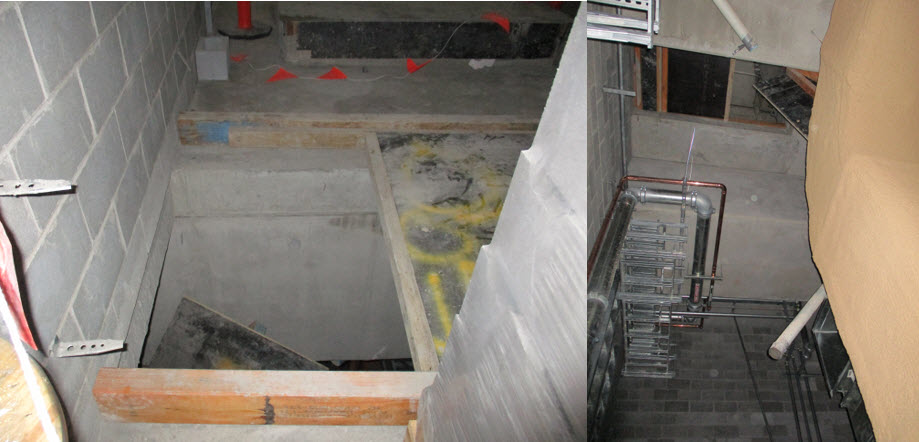
The site
The site is located at Castle Hill. Activities undertaken at the site include the construction of twin tunnels that will form part of the Sydney Metro Northwest automated rail system. The site is under the control of a principal contractor that is under the Comcare scheme with multiple sub-contractors
working onsite. The worker was an employee of a NSW bricklaying company subcontracted to undertake the bricklaying works.
The investigation
SafeWork NSW Inspectors responded to the incident.
SafeWork NSW has commenced an investigation to determine the cause and circumstances of the incident.
Our Prosecution Guidelines outline our approach to prosecutions and Safe Work Australia’s National Compliance and Enforcement Policy provides guidance on their approach to compliance.
These documents set out factors that will be considered in determining the investigative approach and appropriate outcome.
Safety information
Businesses and workers are reminded of their duty to identify hazards and manage risks to health and safety in accordance with the provisions of the Work Health and Safety Act 2011 and Work Health and Safety Regulation 2017.
Each year SafeWork NSW respond to incidents where workers have been killed or seriously injured from falls from a height. Many of these incidents involve falling through a penetration.
Workers in the Construction Industry are commonly at risk of falling from height; however, any worker working at height is at risk of falling.
Businesses are reminded to consider reasonably practicable control measures to manage the risk of falling from heights and working near penetrations including;
- Installing barriers, such as guard rails or covers, that are secured and labelled with warning signs in areas where penetrations are present
- Covering and marking, or installing guardrails around penetrations/voids
- Providing workers with safe means of access and egress to work areas
- Conducting a risk assessment prior to working near penetrations
Further information
Please refer to the following guidance materials:
- Managing the Risk of falls at Workplaces - Code of Practice
- Trapdoors and Penetration Covers in Construction (QLD Safety Alert)
- Prosecution results following Construction falls
- SafeWork NSW guide to working safely at heights
- Construction work code of practice 2014
About this information release
We have issued this information to draw attention to the occurrence of a serious injury in the construction industry. Investigations are ongoing and further information may be published as it becomes available.
The information contained in this publication is based on knowledge and understanding at the time of writing. Users are reminded of the need to ensure any information upon which they rely is up to date and to check the currency of the information with the appropriate SafeWork NSW officer or the user’s
independent adviser. No conclusions should be drawn from the information in this publication about the cause of the incident or the culpability of any party.
All photographs were taken by SafeWork NSW.
Fall through asbestos roof (10 September 2018)
This page references the Work Health and Safety Regulation 2017, which has since been remade as the Work Health and Safety Regulation 2025. Any references to clauses of the 2017 Regulation should now be read as references to the corresponding sections in the 2025 Regulation where applicable.
Incident date
10 September 2018
Event
Fall from height through roof
Location
Newcastle East
Incident Overview
A 26 year-old labourer was on the roof of a home helping remove asbestos cement corrugated roof sheeting when one of the sheets gave way and he fell approximately 4 metres.
The fall-arrest system used did not prevent the worker from hitting the wooden floor below. The worker sustained a suspected broken wrist.
SafeWork NSW and NSW Ambulance responded to the incident and the worker was taken to hospital and received treatment for his injuries.
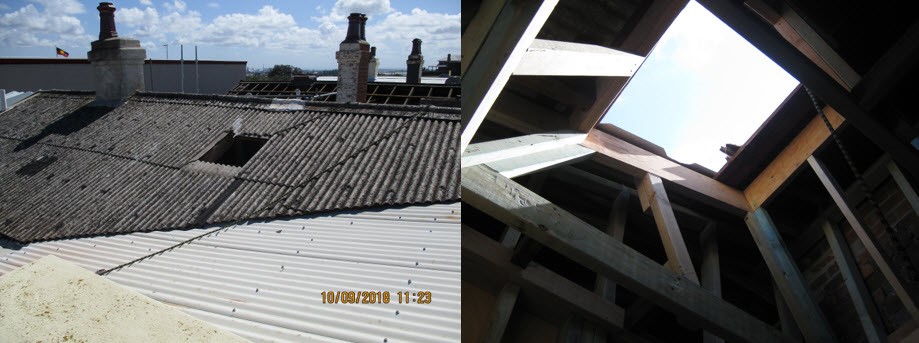
The site
The site is located at Newcastle East. The activity being undertaken at the time was the removal of asbestos roof sheeting on a residential dwelling. The site is under the control of a principal contractor with a sub-contractor engaged to undertake demolition and asbestos removal at the site.
The investigation
SafeWork NSW Inspectors responded to the incident
Our Prosecution Guidelines outline our approach to prosecutions and Safe Work Australia’s National Compliance and Enforcement Policy provides guidance on their approach to compliance.
These documents set out factors that will be considered in determining the investigative approach and appropriate outcome.
Safety Information
Businesses and workers are reminded of their duty to identify hazards and manage risks to health and safety in accordance with the provisions of the Work Health and Safety Act 2011 and Work Health and Safety Regulation 2017.
Each year SafeWork NSW respond to incidents where workers have died or been seriously injured from falls from heights. Many of these incidents involve falling through roof material. Asbestos cement roof sheeting is known to become brittle with age.
Businesses are reminded to consider reasonable and practicable control measures to manage the risk of falls.
Before starting work on an existing roof, carry out an inspection (from below) to determine:
- the presence and condition of non-trafficable sheeting such asbestos cement sheeting and other brittle roof sheeting such as sky lights or plastic roof sheeting
- for residential properties, the spacing and condition of roof purlins or trusses, including any gaps in purlins
- for commercial properties, the presence and condition of safety mesh.
When determining whether roofs are safe to walk on, consider that product materials may become brittle with age and fixings may become less rigid over time.
Control measures to prevent a person from falling through a non-trafficable roof or skylight include:
- plan to work from below whenever possible
- plan the work to avoid accessing unsafe or non-trafficable areas
- work from an elevated work platform or boom lift to avoid standing on the roof itself
- install temporary work platforms (crawling boards) and roof ladders as appropriate
- install barriers (such as guard rails or covers) that are secured and labelled with warning signs
- install safety mesh when installing the roof sheeting
- install a fall arrest system (harness system) which has adequately-installed anchorage points, along with training and instruction in the use.
- ensure workers using an adjustable length (traveller) fall arrest system are competent and aware that the rope line is to have minimal slack, to protect then in the event they fall through, when walking or working on roofs and are aware of the pendulum effect when using single anchorage points.
Ensure the selected control measures are being consistently applied and review the control measures as work progresses.
Further information
Refer to the following guidance materials:
- Our guide to working safely at heights includes information on managing the risks of falls, including codes of practice and guides to working on roofs.
- Safe work on roofs - Part 1: commercial and industrial buildings code of practice
- Safety Alert - Falls through skylights and plastic roof sheeting
- Australian Standard series AS/NZS 4994 – Temporary edge protection
- Australian Standard AS/NZS 1891.4 Industrial fall-arrest systems and devices Part 4: Selection use and maintenance
- Incident information releases, including Fall through plastic roof sheeting 23 August 2018
About this information release
We have issued this information to draw attention to the occurrence of a serious incident in the roofing industry. Investigations are ongoing and further information may be published as it becomes available.
The information contained in this publication is based on knowledge and understanding at the time of writing. Users are reminded of the need to ensure any information upon which they rely is up to date and to check the currency of the information with the appropriate SafeWork NSW officer or the user’s
independent adviser. No conclusions should be drawn from the information in this publication about the cause of the incident or the culpability of any party.
All photographs were taken by SafeWork NSW.
Scaffold collapse (07 September 2018)
This page references the Work Health and Safety Regulation 2017, which has since been remade as the Work Health and Safety Regulation 2025. Any references to clauses of the 2017 Regulation should now be read as references to the corresponding sections in the 2025 Regulation where applicable.
Incident date
07 September 2018
Event
Scaffold Collapse
Location
Bronte
Incident overview
Partially dismantled 4-storey scaffolding on a multi-story residential construction site in Bronte has fallen away from the building and onto the neighbouring unit complex.
No residents were in the neighbouring property at the time of the incident. There were no injuries reported.
The residents were provided with temporary accommodation and a section of the road was closed while repair work occur.
SafeWork NSW, NSW Police and the State Emergency Services responded to the incident and Engineers were on site to make the site safe.
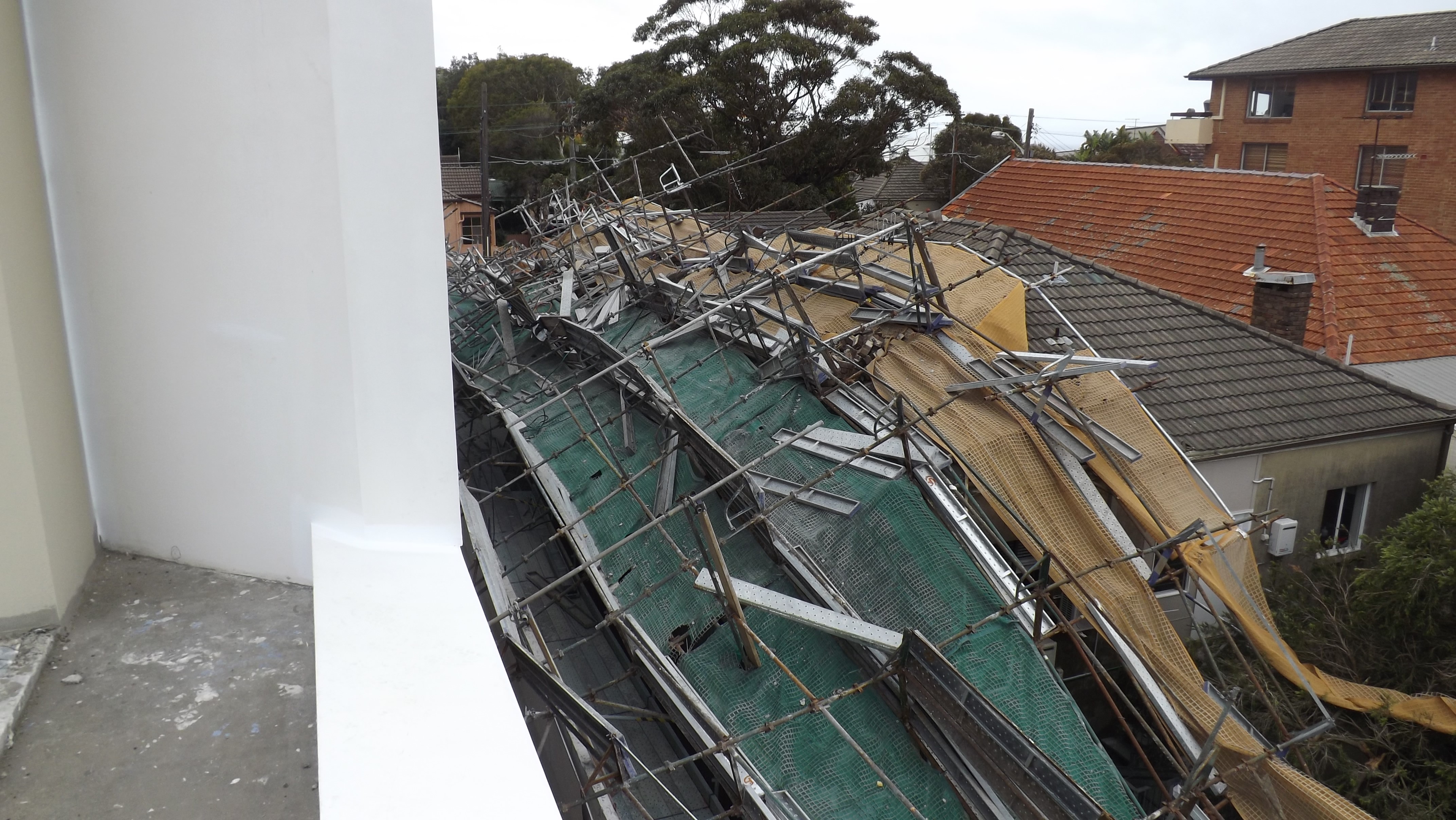
The site
The site is located at Bronte. Activities undertaken at the site include the dismantling of scaffolding. The site is under the control of a principal contractor with the activity being undertaken by a sub-contractor.
The investigation
SafeWork NSW Inspectors responded to the incident.
SafeWork NSW has commenced an investigation to determine the cause and circumstances of the incident.
Our Prosecution Guidelines outline our approach to prosecutions and Safe Work Australia’s National Compliance and Enforcement Policy provides guidance on their approach to compliance.
These documents set out factors that will be considered in determining the investigative approach and appropriate outcome.
Safety information
Businesses are reminded of their duty to identify hazards and manage risks to health and safety in accordance with the provisions of the Work Health and Safety Act 2011 and Work Health and Safety Regulation 2017.
Each year SafeWork NSW respond to incidents where the safety of workers, or nearby people, has been at risk from falling scaffolding.
Many of these incidents involve scaffolds with containment sheeting (eg shadecloth or mesh) which may place extra weight on a scaffold, particularly in bad weather when wind and rain can place additional live loads the materials.
A scaffold collapse not only puts workers lives at risk, but puts the public at significant risk of being hit by falling objects.
Businesses are reminded to implement control measures to manage the risk of scaffold collapse, such as ensuring:
- the design of the scaffold installation considers wind load from the scaffold containment sheeting
- provision and maintenance of sufficient ties of adequate strength for the loads, including wind load
- regular inspection of scaffold ties to check they are not modified or altered by unauthorised people (eg finishing trades who may loosen, relocate or remove ties to gain access to walls and openings)
- scaffolds are not left in a state of weakness when installing or dismantling the scaffolds (eg removing returns as they act like ties, or removing ties in preparation for dismantling).
Further information
Please refer to the following guidance materials:
- Australian Standard AS 1576 Series
- Scaffolding collapse safety alert
- SafeWork NSW Erecting, altering and dismantling scaffolding - part-1 - prefabricated steel modular scaffolding
- Safe Work Australia Scaffolds and scaffolding work general guide
- Safe Work Australia Guide for scaffold inspection and maintenance
About this information release
We have issued this information to draw attention to the occurrence of a serious incident in the construction industry. Investigations are ongoing and further information may be published as it becomes available.
The information contained in this publication is based on knowledge and understanding at the time of writing. Users are reminded of the need to ensure any information upon which they rely is up to date and to check the currency of the information with the appropriate SafeWork NSW officer or the user’s independent adviser. No conclusions should be drawn from the information in this publication about the cause of the incident or the culpability of any party.
All photographs were taken by SafeWork NSW.
Fall through form deck (5 September 2018)
This page references the Work Health and Safety Regulation 2017, which has since been remade as the Work Health and Safety Regulation 2025. Any references to clauses of the 2017 Regulation should now be read as references to the corresponding sections in the 2025 Regulation where applicable.
Incident date
5 September 2018
Event
Fall from form deck
Location
Blackbutt in Shellharbour
Incident overview
A 40-year-old steel fixer was subcontracted to work on steel pre-fabricated walls.
He was standing on a piece of plywood, on top of laid formwork, when it gave way and he’s fallen 2 to 2.5 metres to the floor below. The worker struck his head and sustained bruising to his left arm and grazing to his right arm.
SafeWork NSW, NSW Police and NSW Ambulance responded to the incident and the worker was taken to hospital for treatment for his injuries.
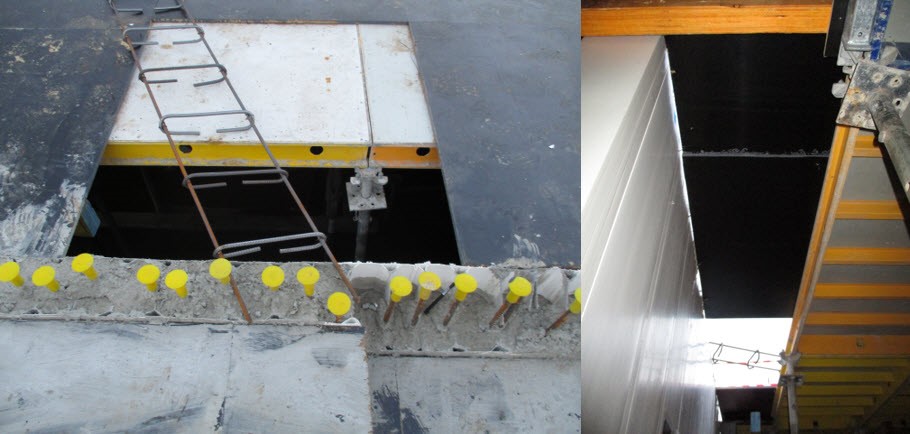
The site
The site is located at Blackbutt in Shellharbour. The activity being undertaken is the construction of a multi-story residential building. The site is under the control of a principal contractor with a subcontractor engaged to undertake the formwork decking on site.
The investigation
SafeWork NSW Inspectors responded to the incident.
Our Prosecution Guidelines outline our approach to prosecutions and Safe Work Australia’s National Compliance and Enforcement Policy provides guidance on their approach to compliance. These documents set out factors that will be considered in determining the investigative approach and appropriate outcome.
Safety information
Businesses are reminded of their duty to identify hazards and manage risks to health and safety in accordance with the provisions of the Work Health and Safety Act 2011 and Work Health and Safety Regulation 2017.
Each year SafeWork NSW respond to incidents where workers have fallen from a height. Many of these incidents involve formwork.
Workers in the construction industry are most commonly injured however, any worker working from heights is at risk.
Businesses are reminded to consider reasonable and practicable control measures to manage the risk of falls from heights including:
- The PCBU must deem the working deck is complete before allowing other workers to access the deck. the deck
- Installing barriers with signage in areas where formwork is incomplete
- Covering and marking, or installing guardrails around penetrations/voids Providing workers with safe means of access and egress to work areas.
Further information
Please refer to the following guidance materials:
- Formwork and falsework guidance material
- Incident information releases
- Managing the risk of falls at workplaces COP
- SafeWork NSW formwork webpage
- Managing the risk of falls in housing construction COP
- SafeWork pocket guide to construction safety
About this information release
We have issued this information to draw attention to the occurrence of a serious injury in the construction industry. Investigations are ongoing and further information may be published as it becomes available.
The information contained in this publication is based on knowledge and understanding at the time of writing. Users are reminded of the need to ensure any information upon which they rely is up to date and to check the currency of the information with the appropriate SafeWork NSW officer or the user’s independent adviser. No conclusions should be drawn from the information in this publication about the cause of the incident or the culpability of any party.
All photographs were taken by SafeWork NSW.
Fall through plastic roof sheeting (23 August 2018)
This page references the Work Health and Safety Regulation 2017, which has since been remade as the Work Health and Safety Regulation 2025. Any references to clauses of the 2017 Regulation should now be read as references to the corresponding sections in the 2025 Regulation where applicable.
Incident date
Event
Location
Incident overview
A 19-year-old first year apprentice electrician was on the roof of a single storey commercial building, assisting with the installation of solar panels. The worker stepped on a plastic roof sheet and fell approximately 7 metres. The rope line had excessive slack between the worker and the anchorage
point. The excessive slack in the rope line allowed the worker to fall the 7 metres to the concrete slab below.
The worker sustained multiple serious injuries from the incident. SafeWork NSW and NSW Ambulance responded to the incident and the worker was conveyed to hospital but later died from his injuries.
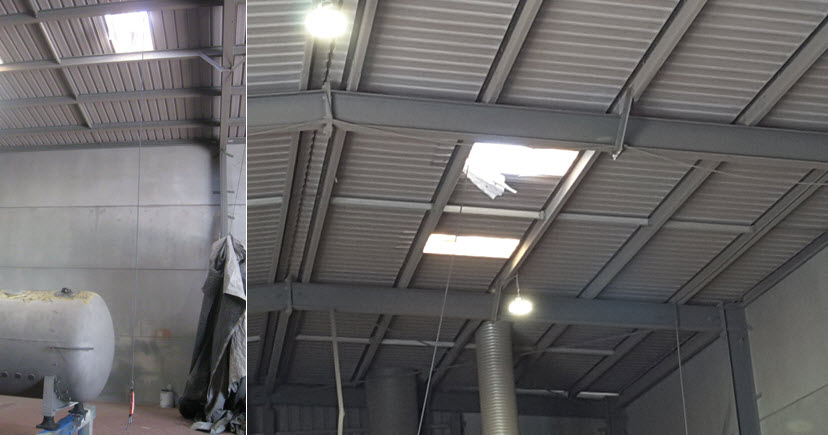
The site
Investigation and prosecution
SafeWork NSW conducted an investigation to determine the cause and circumstances of the incident.
On 18 June 2021, the solar company was convicted for breaches against the NSW WHS Act 2011 and fined $300,000 as a result of the incident.
Safety information
Businesses and workers are reminded of their duty to identify hazards and manage risks to health and safety in accordance with the provisions of the Work Health and Safety Act 2011 and Work Health and Safety Regulation 2017.
Each year SafeWork NSW respond to incidents where workers have died or been seriously injured from falls from heights. Many of these incidents involve falling through brittle or fragile roof material.
Businesses are reminded to consider reasonable and practicable control measures to manage the risk of falls.
Before commencing work on an existing roof, carry out an inspection from the ground to determine:
- the presence and condition of sky lights, plastic roof sheeting and other brittle roof sheeting such as asbestos cement sheeting.
- the presence and condition of safety mesh.
When determining whether roof surfaces are safe to walk on, consider the product materials and method of fixing, including any possible deterioration in strength. Note: products may become brittle and fixings may become less rigid over time.
Control measures to prevent a person from falling through a non-trafficable roof or skylight include:
- plan the work to avoid accessing unsafe areas
- work from a solid construction to avoid standing on the roof itself
- install temporary work platforms (crawling boards) and roof ladders as appropriate
- install barriers, such as guard rails or covers, that are secured and labelled with warning signs
- install safety mesh when installing the roof sheeting
- install a fall arrest system (harness system) which has adequately-installed anchorage points, along with training and instruction in the use.
- ensure workers using an adjustable length fall arrest system are competent and aware that the system is intended to provide protection against falling through the roof, not just falls off the edge, and therefore they need to adjust the length to limit slack as they move.
Ensure the selected control measures are being consistently applied, and review the control measures as work progresses.
Further information
Please refer to the following guidance materials:
- Our guide to working safely at heights includes information on managing the risks of falls, including codes of practice and guides to working on roofs.
- Safe work on roofs - Part 1: commercial and industrial buildings code of practice
- Safety Alert - Falls through skylights and plastic roof sheeting
- Australian Standard series AS/NZS 4994 – Temporary edge protection
- Australian Standard AS/NZS 1891.4 Industrial fall-arrest systems and devices Part 4: Selection use and maintenance
About this information release
We have issued this information to draw attention to the occurrence of a fatality in the Commercial Roofing industry. Investigations are ongoing and further information may be published as it becomes available.
The information contained in this publication is based on knowledge and understanding at the time of writing. Users are reminded of the need to ensure any information upon which they rely is up to date and to check the currency of the information with the appropriate SafeWork NSW officer or the user’s independent adviser. No conclusions should be drawn from the information in this publication about the cause of the incident or the culpability of any party.
All photographs were taken by SafeWork NSW.
Fall from height on construction site (3 August 2018)
This page references the Work Health and Safety Regulation 2017, which has since been remade as the Work Health and Safety Regulation 2025. Any references to clauses of the 2017 Regulation should now be read as references to the corresponding sections in the 2025 Regulation where applicable.
Incident date
3 August 2018
Event
Fall from height on construction site
Location
Church Street, Parramatta
Incident overview
A 62-year-old worker was undertaking formwork at a Parramatta construction site. He was placing a joist onto the falsework bearers below when he fell approximately 3.7 metres from the ply deck he was standing on to the deck below. He sustained a broken rib and a laceration to the back of his head.
SafeWork NSW and NSW Police responded to the incident. The worker was conveyed to hospital and received treatment for his injuries.

The site
The investigation
SafeWork NSW Inspectors responded to the incident.
Safety information
Businesses are reminded of their duty to identify hazards and manage risks to health and safety in accordance with the provisions of the Work Health and Safety Act 2011 and Work Health and Safety Regulation 2017.
Each year SafeWork respond to incidents where workers have fallen from a height. Fall prevention/protection measures include: guardrails, catch platforms, catch nets, and scaffold.
Businesses are reminded to consider reasonable and practicable control measures to manage the risk of falls from heights while installing formwork, including:
- eliminating the need to work from heights, eg use table forms or modular systems that can be erected from below
- using a temporary working platform, scaffolding, boom lift or scissor lift to install bearers and joists from below
- providing edge protection, eg guardrails on non-leading edges and catch platforms or catch nets at leading edges to limit the potential fall distance
- covering and marking, or installing guardrails around, penetrations/voids
- providing workers with safe means of access and egress to work areas
Further information
Please refer to the following guidance materials:
About this information release
We have issued this information to draw attention to the occurrence of a fatality/serious injury/serious incident in the construction industry. Investigations are ongoing and further information may be published as it becomes available.
The information contained in this publication is based on knowledge and understanding at the time of writing. Users are reminded of the need to ensure any information upon which they rely is up to date and to check the currency of the information with the appropriate SafeWork NSW officer or the user’s independent adviser. No conclusions should be drawn from the information in this publication about the cause of the incident or the culpability of any party.
All photographs were taken by SafeWork NSW.
Struck by plant on construction site (30 July 2018)
This page references the Work Health and Safety Regulation 2017, which has since been remade as the Work Health and Safety Regulation 2025. Any references to clauses of the 2017 Regulation should now be read as references to the corresponding sections in the 2025 Regulation where applicable.
Incident date
Event
Location
Incident overview
A 36-year-old male worker was agitating concrete being poured into a column. A blockage in the pipework has caused a build-up of pressure. Several pump and delivery line components failed, resulting in the rubber discharge hose striking the worker.
SafeWork NSW and NSW Ambulance responded to the incident. The worker was conveyed to Hospital and he received treatment for his injuries.
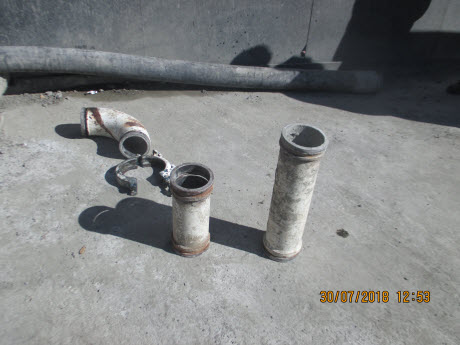
The site
The site
The investigation
SafeWork NSW Inspectors responded to the incident.
Safety Information
Businesses are reminded of their duty to identify hazards and manage risks to health and safety in accordance with the provisions of the Work Health and Safety Act 2011 and Work Health and Safety Regulation 2017.
Each year, we respond to incidents where workers have been struck by plant, including concrete placing equipment. Many of these incidents involve the sudden escape of pressurised concrete, the dislodgement or failure of pipeline components, or the sudden movement of the plant and/or components resulting from pressure build-up within the equipment.
Workers in the construction industry are most commonly injured.
Due to the cyclic loading of the pulsating pump, the risk of mechanical or structural failure of concrete pumping equipment is increased when compared to other plant, particularly risks associated with:
- fatigue failure of welds
- restraining devices such as pins and circlips becoming dislodged.
Businesses are reminded to consider reasonably practicable control measures to manage the risk of structural or mechanical failure of concrete placing equipment by ensuring that:
- operators of concrete placing booms hold the relevant high-risk work licence
- periodic inspection, testing and maintenance is undertaken in accordance with the manufacturer’s instructions, including pipe wall thickness testing
- welding or repair work on the concrete pump or any associated equipment is only undertaken by a welder or service provider holding the appropriate qualifications and, where possible, in possession of the manufacturer’s current specifications
- pre-operational inspections are undertaken, including the visual inspection of structural components and other critical components such as fasteners, pins, shafts, welds and locking devices such as pipe clamps are secured with safety pins, and clamp and anchor nuts are tightened adequately
- all lines, pipes, couplings and fittings can withstand the maximum pump pressure (including during blockages) or the pump pressure is adjusted so that it does not exceed pipeline capacity
- all metal pipes and pipeline components are identified and checked for compatibility
- pipes are anchored at intervals specified by the manufacturer, and near joints to prevent bending and casing fatigue failures
- reducers are only used as per the manufacturer’s recommendations to avoid overload of the delivery line
Further information
Please refer to the following guidance materials:
- SafeWork NSW Code of Practice: Managing the risks of plant in the workplace
- Australian Standard AS2550.15, Cranes—Safe use Part 15: Concrete Placing equipment
- Concrete pump delivery Industry guidelines
About this information release
We have issued this information to draw attention to the occurrence of a serious injury in the construction industry. Investigations are ongoing and further information may be published as it becomes available.
The information contained in this publication is based on knowledge and understanding at the time of writing. Users are reminded of the need to ensure any information upon which they rely is up to date and to check the currency of the information with the appropriate SafeWork NSW officer or the user’s independent adviser. No conclusions should be drawn from the information in this publication about the cause of the incident or the culpability of any party.
All photographs were taken by SafeWork NSW.
Falling object from construction site - 6 July 2018
This page references the Work Health and Safety Regulation 2017, which has since been remade as the Work Health and Safety Regulation 2025. Any references to clauses of the 2017 Regulation should now be read as references to the corresponding sections in the 2025 Regulation where applicable.
Incident date
6 July 2018
Event
Falling object from construction site
Location
Princes Highway at Rockdale
Overview
During the demolition of an existing commercial premises, parts of the front façade fell onto the pedestrian footpath, scattering debris onto the footpath and the Princes Highway. The incident occurred during strong winds. As a result, two northbound lanes of the highway were closed. There were no reported injuries.
SafeWork NSW, NSW Police, Fire and Rescue and Public Works Engineers responded to the incident.
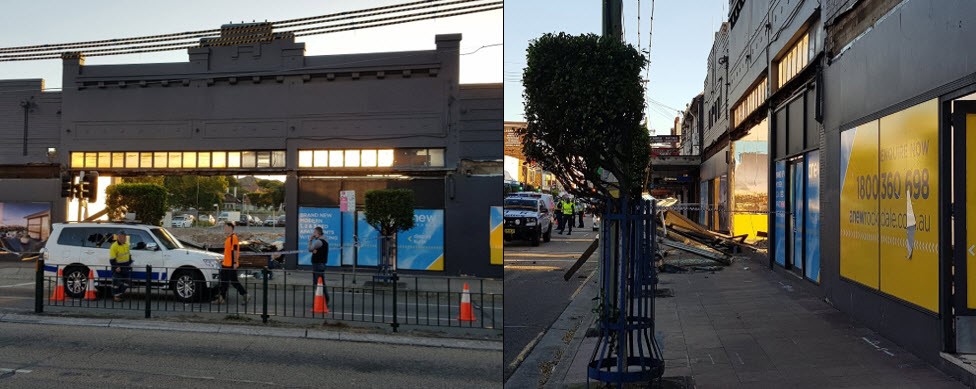
Front and side view of the building façade with a view of the façade collapse onto the footpath.
The site
The site is located on Princes Highway at Rockdale. The site is currently undergoing demolition and is under the control of a principal contractor. A sub-contractor had also been engaged to carry out demolition works on the site. At the time of the incident, the front façade and partial return/buttress walls were the only building elements yet to be demolished. The front façade consisted of brickwork, and glass windows and doors.
The investigation
- SafeWork NSW Inspectors responded to the incident.
- SafeWork NSW has commenced an investigation to determine the cause and circumstances of the incident.
SafeWork NSW’s Prosecution Guidelines outlines the Regulator’s approach to prosecutions and SafeWork Australia’s National Compliance and Enforcement Policy provides guidance on the Regulator’s approach to compliance. These documents set out factors that will be considered in determining the investigative approach and appropriate outcome.
Safety information
Businesses are reminded of their duty to identify hazards and manage risks to health and safety in accordance with the provisions of the Work Health and Safety Act 2011 and Work Health and Safety Regulation 2017.
Principal contractors and other businesses working in construction and/or demolition have additional and specific duties under the WHS legislation. Those duties extend to both workers and others – including members of the public, and require businesses to ensure the risks associated with unplanned structural collapse and/or falling debris are managed so far as is reasonably practicable in accordance with the legislation.
Businesses are required to implement reasonably practicable measures to the eliminate or minimise the risks associated with unplanned structural collapse or falling debris by ensuring:
- the demolition method and sequencing is planned in consultation with the building/structure designers, or if it is not reasonably practicable to do so, in consultation with appropriately competent persons eg structural engineers.
- the building or structure to be demolished and all its components are maintained in a safe and structurally stable condition at all times until completion of the project. Temporary braces, propping, shoring or guys may need to be added to ensure that stability of the structure is maintained.
- external factors that may impact on the structural integrity of the building or structure are considered and the associated risks are managed eg vibrations from demolition activities, wind, water pooling or egress around footings or supports.
- adequate protection to members of the public are provided and maintained by installing, for example, hoarding, overhead protective structures, heavy duty scaffolding and/or or containment screening; or by implementing road closures and/or specified exclusion zones.
- measures installed to provide public protection are designed and constructed to withstand the applicable loads (consultation with an appropriately competent person may be required).
- measures installed to provide public protection are in place prior to commencing associated demolition works.
- all control measures are monitored by a competent person to assess the on-going suitability of the demolition method and sequencing and to identify signs of structural weakening e.g. movement or cracking.
Further information
Please refer to the following guidance materials:
- SafeWork NSW Code of Practice Demolition work
- Australian Standards AS 2601-2001 The demolition of structures
- Safety alert Dangers from masonry walls on construction or demolition sites
- SafeWork NSW Code of Practice Overhead protective structures
About this information release
SafeWork NSW has issued this information to draw attention to the occurrence of a serious incident in the construction industry. Investigations are ongoing and further information may be published as it becomes available.
The information contained in this publication is based on knowledge and understanding at the time of writing. Users are reminded of the need to ensure any information upon which they rely is up to date and to check the currency of the information with the appropriate officer of SafeWork NSW or the user’s independent adviser. No conclusions should be drawn from the information in this publication about the cause of the incident or the culpability of any party.
All photographs were taken by SafeWork NSW.


